Anja Eimer
General Manager, Global Water Industry at Siemens AG


Anja Eimer
General Manager, Global Water Industry at Siemens AG


As we stand at the intersection of technological advancement and environmental stewardship, the water industry is on the verge of a transformation that will redefine how we manage our most vital resource. In this edition of Smart Water Magazine, we explore the profound impact of digitalisation — a force that is reshaping everything from infrastructure management to customer engagement.
Our cover story features Anja Eimer, General Manager of Global Water Industry at Siemens, who shares the company’s vision for a more sustainable and efficient future in water management through innovative digital solutions. Additionally, Datakorum explores how integrating terrestrial and non-terrestrial satellite networks is revolutionizing the Internet of Things (IoT), enhancing the coverage, resilience, and efficiency of critical infrastructure.
As water utilities face new regulations, data security concerns, and staffing shortages, many are turning to advanced software solutions. In an insightful interview, Matthew Stephenson, Director of Software Product Management at Badger Meter, discusses how these technologies can drive a triple win: more efficient operations,

longer asset life, and an improved consumer experience.
One of the most compelling examples of digitalisation’s impact is the development of smart water networks. We highlight case studies where utilities have successfully implemented water loss management software, leading to significant reductions in water loss and operational costs, such as Diehl’s work with Brønderslev Water Company in Denmark, or Aganova’s project to eliminate water losses in water transport networks as part of its partnership with Microsoft.
However, digitalisation is not just about technology; it’s about collaboration and innovation. In this issue, SWPC reveals its strategic goals, focusing on expanding water infrastructure, attracting private investment through public-private partnerships (PPP), and
PUBLISHER
iAgua Conocimiento, S.L.
Calle López de Hoyos, 190 Entlo. B 28002 Madrid info@iagua.es
MANAGEMENT
Alejandro Maceira Rozados
David Escobar Gutiérrez
EDITOR
integrating renewable energy into desalination operations — all in line with Saudi Arabia’s Vision 2030.
Lastly, we spotlight the groundbreaking project by Almar Water Solutions, Transelec, and Antofagasta Minerals, which aims to secure a sustainable water supply for the Centinela Mining District in Chile.
As we look to the future, the digitalisation of the water industry holds immense promise. It offers a pathway not only to address current challenges but also to build a more resilient water infrastructure capable of adapting to the demands of a changing world. We are excited to share with you the stories of innovation and progress that are shaping the future of water.
Alejandro Maceira Rozados
EDITORIAL STAFF
Olivia Tempest Prados
Cristina Novo Pérez
Laura Fernández Zarza
Blanca María Álvarez Román
de los Reyes
Martín Muñoz PHOTOGRAPHY Pablo González-Cebrián Fotos iAgua

REDUCING WATER LOSS WITH SMART TECH
Pg. 22 Anja Eimer outlines Siemens' comprehensive strategy for innovation, sustainability, and digital solutions in the water industry.
Pg. 64 Brønderslev Water Company leverages Diehl Metering’s smart solutions to halve water losses and set a new digital innovation standard.
DRIVING WATER SUSTAINABILITY IN KSA
Pg. 40 SWPC integrates advanced tech and PPP frameworks to enhance water efficiency, sustainability, and infrastructure in Saudi Arabia.
ADVANCED WATER SUPPLY FOR MINING
Pg. 46 Almar Water Solutions pioneers sustainable water supply for Centinela Mining, using seawater and renewable energy to reduce impact.


DATA-DRIVEN WATER MANAGEMENT
Pg. 34 Badger Meter's BlueEdge platform helps utilities harness data, enhance operations, and deliver superior service to customers.
CYBERSECURITY IN WATER UTILITIES
Pg. 16 Exploring the rising cyber threats to U.S. water systems and the critical need for enhanced defences and regulatory frameworks.
Pg. 50 Filtralite’s advanced filter media enhances water treatment efficiency, reduces costs, and supports sustainable water management.
REDUCING WATER LOSS IN NETWORKS
Pg. 54 Aganova partners with Microsoft to detect and repair leaks in water transport networks, enhancing sustainability and efficiency.
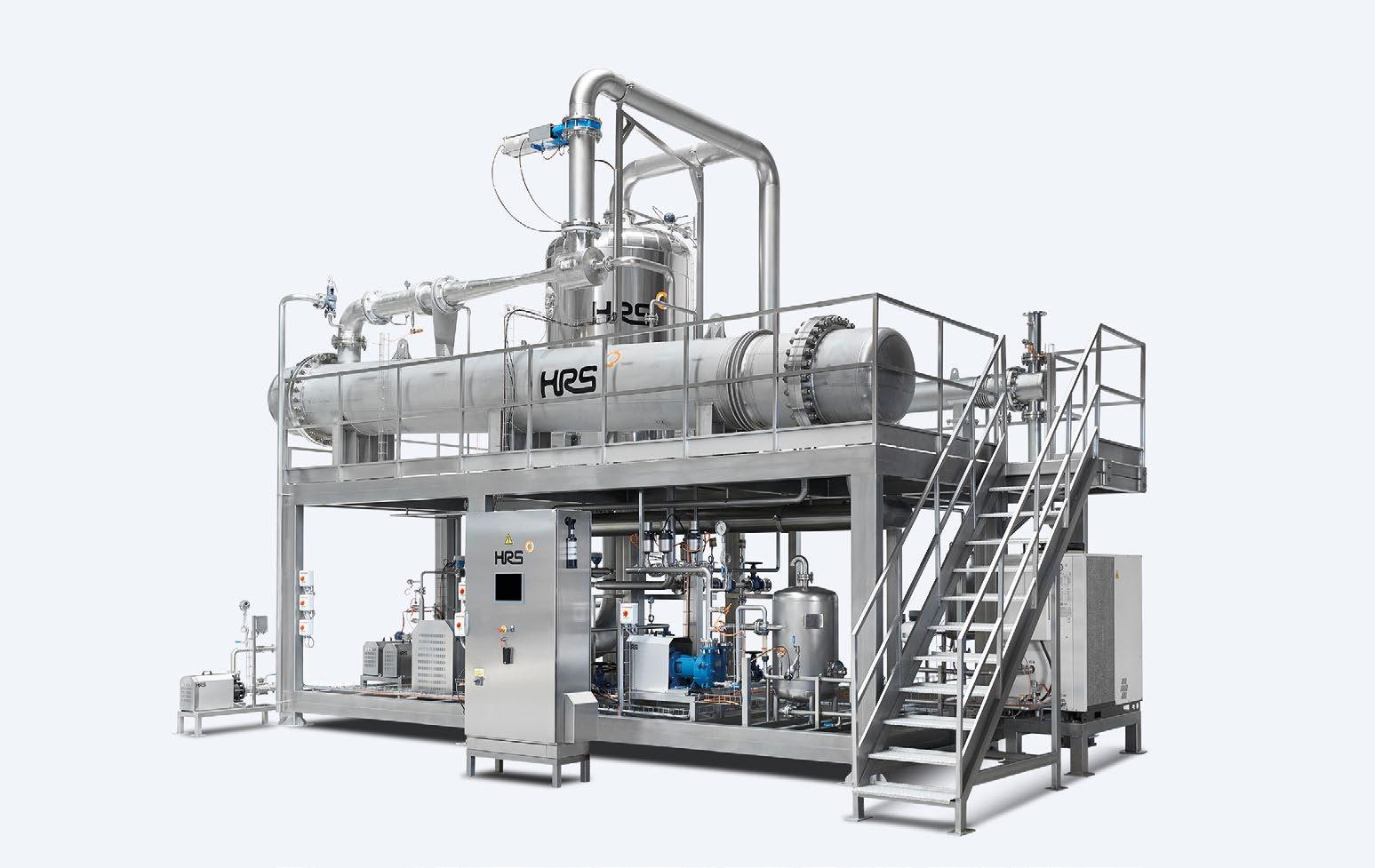
Our patented and proven heat transfer technologies, combined with our knowledge make it possible to offer best in class solutions environmental applications such as wastewater, digestate, and sludge.
Using HRS’ corrugated tube technology, both heat transfer and efficiency are increased over standard smooth and dimple tube heat exchangers. In addition, potential product fouling is minimised.
Digester Heating
Digestate/Sludge Pasteurisation
Digestate Concentration and Evaporation
Biogas Dehumidification Systems
Turnkey Systems
Energy Recovery
FEATURE
AI-DRIVEN WATERSHED MANAGEMENT
Pg. 72 Idrica leads the digital revolution in river basin management, integrating AI and big data to enhance sustainable water resource strategies.
INTERVIEW
SMART TECH IN WATER SERVICES
Pg. 58 Maynilad leverages AI and digital platforms to advance water network efficiency, improving leak detection and service response.
OPINION
CHALLENGES IN WASTEWATER REFORM
Pg. 62 EurEau addresses the new UWWTD, highlighting the path to sustainable wastewater management and the role of Extended Producer Responsibility.
INTERVIEW
INNOVATING FOR WATER RESILIENCE
Pg. 110 Scottish Water's strategies for climate resilience and quality through cutting-edge technology, partnerships, and carbon reduction.
FEATURE
CENTAURUS:
A SMART METER REVOLUTION
Pg. 82 Discover how Hidroconta's Centaurus meters are transforming water management with cutting-edge technology and global reach.
INTERVIEW
STRENGTHENING MIAMI’S WATER FUTURE
Pg. 86 Miami-Dade’s $8.6 billion plan enhances water infrastructure resilience, embracing climate change challenges and advanced reuse methods.
OPINION
MEKOROT’S SMART WATER REVOLUTION
Pg. 100 Mekorot leverages digital innovation to enhance water management, optimize energy use, and ensure resilient infrastructure.
FEATURE
5G-SATELLITE IOT SYNERGY
Pg. 90 Learn how 5G and satellite integration ensures reliable, global IoT connectivity, transforming critical infrastructure management.

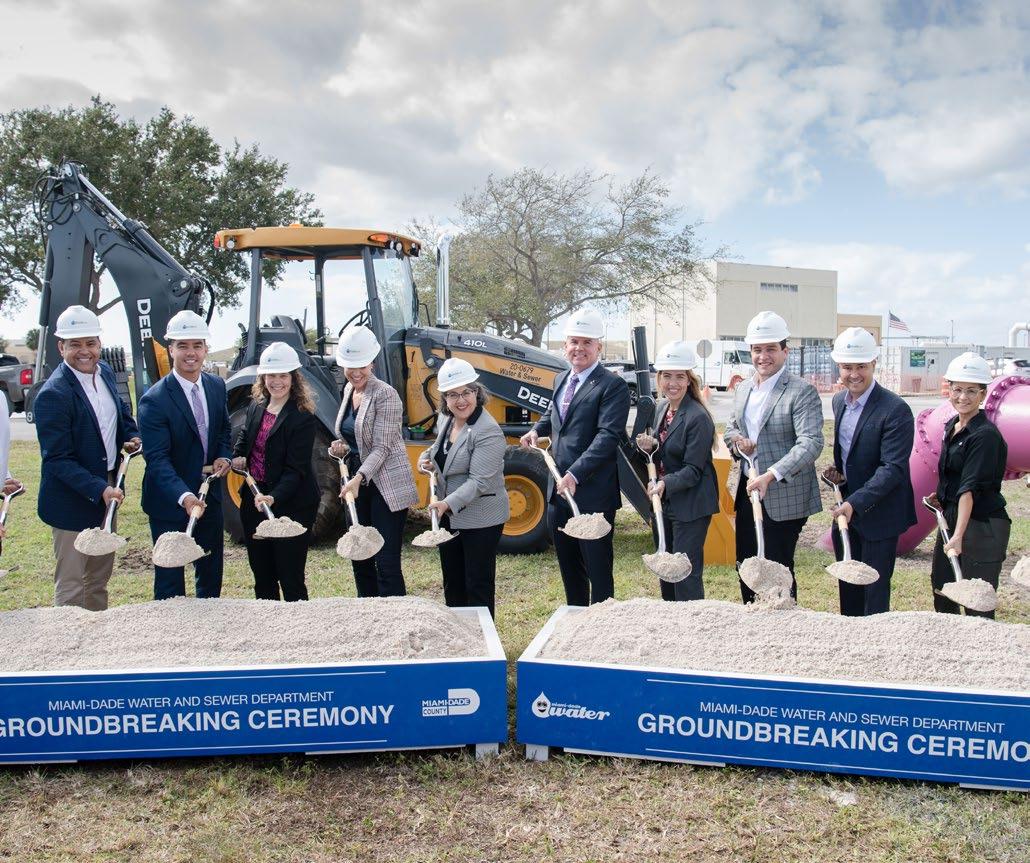
23 - SEP/OCT 2024
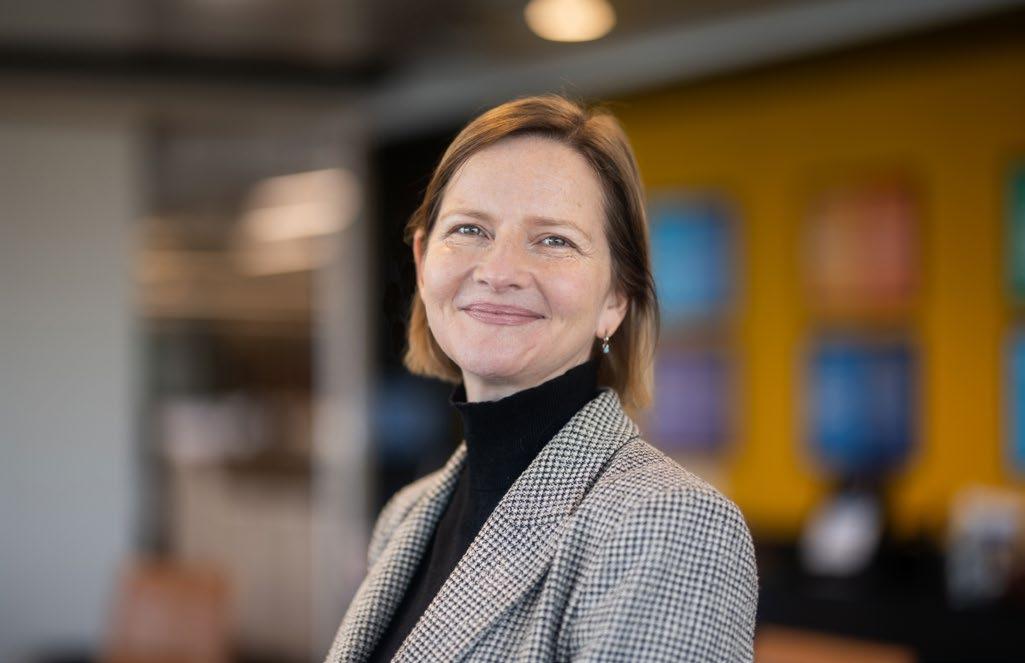
INTERVIEW
SMART WATER IN MELBOURNE’S FUTURE
Pg. 68 South East Water’s digital metering enhances efficiency, detects leaks early, and empowers customers with real-time water data.
PERSON OF THE MONTH
Pg. 80 Dr Amy Childress receives the 2024 Clarke Prize for her pioneering work in water reuse and desalination, addressing global water scarcity.
INSIGHTS FROM FILTRALITE’S WEBINAR
Pg. 78 Discover key takeaways from Filtralite’s webinar on revolutionary filtration technology to improve water treatment efficiency.
BUILDING WATER SECURITY IN ASIA
Pg. 104 The Asian Development Bank enhances water resilience and urban sustainability with innovative projects and climate-focused strategies.
FLOOD CONTROL AND RECREATION
Pg. 102 The Patawalonga Lake System in Adelaide combines flood management with recreational spaces, featuring key infrastructure upgrades.
WEBINAR 2024 CLARKE PRIZE HONORS INNOVATION
AUTODESK WEBINAR HIGHLIGHTS
Pg. 108 Autodesk Water showcased the power of InfoWorks ICM and Optimizer integration in improving decisionmaking and water system efficiency.
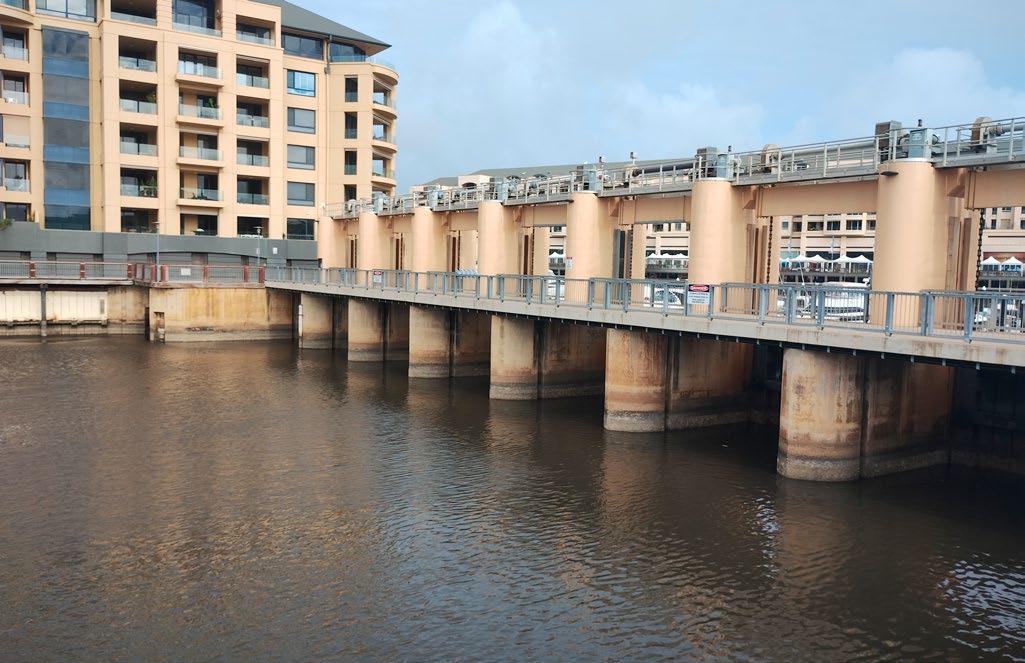
The 'mar de ardora' is a natural marine phenomenon that refers to the glow or shine observed on the ocean's surface at night. This event, also known as marine bioluminescence, is caused by the proliferation of dinoflagellate organisms such as phytoplankton or zooplankton.
Bioluminescence is the result of a chemical reaction that occurs in these organisms when they are disturbed and

react with the oxygen produced by the movement of waves or a vessel, generating a surprising blue or green glow.
Although this phenomenon typically occurs in the calm and warm waters of tropical and subtropical regions, the general increase in ocean temperatures is making it possible to occasionally witness it in less warm areas, such as the traditionally cold Galician coast in the northwest of the Iberian Peninsula.
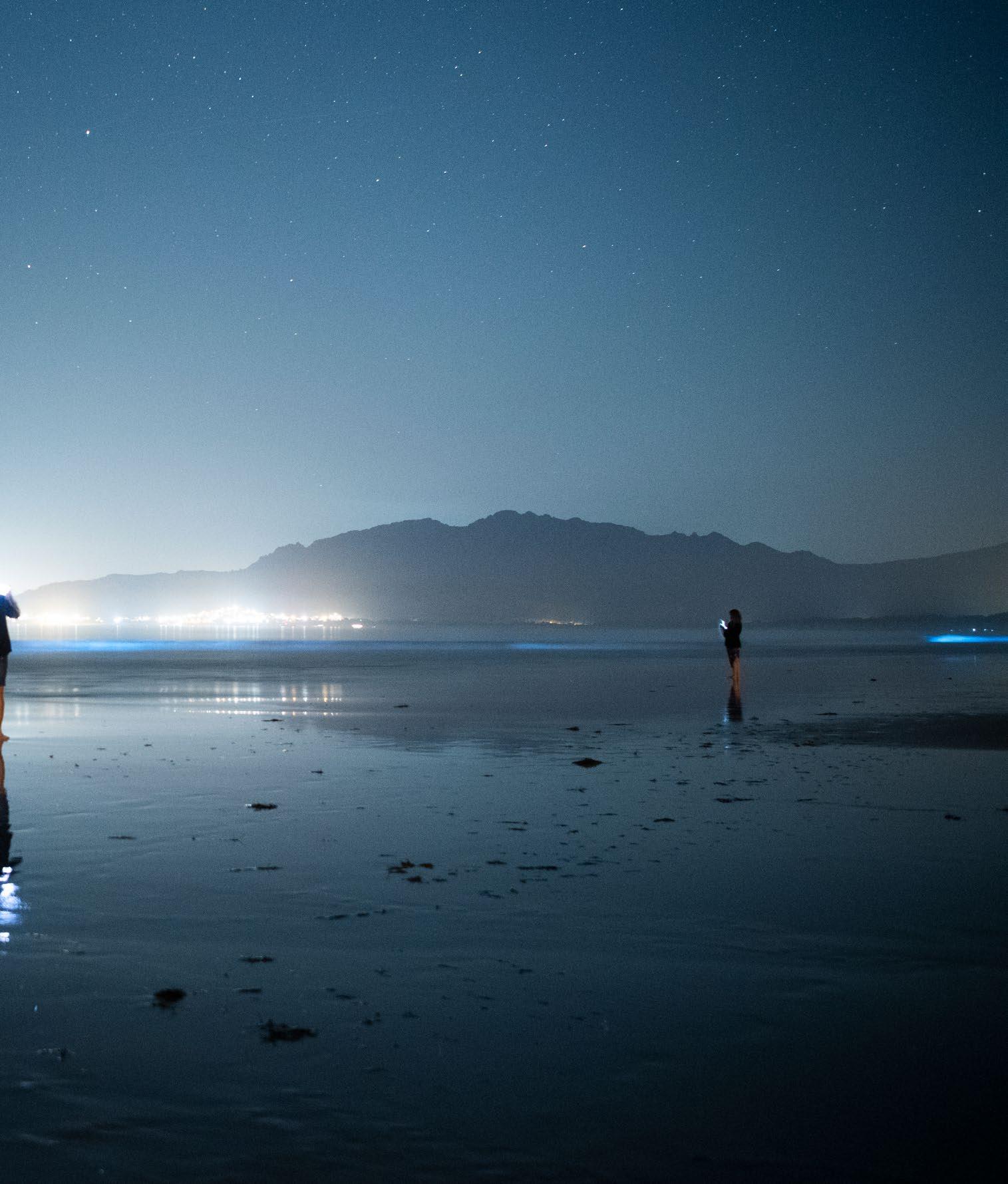
In this section we have compiled the most important appointments that have taken place recently, and entail taking up a position or role within influential entities (public, private or mixed) in the water sector.
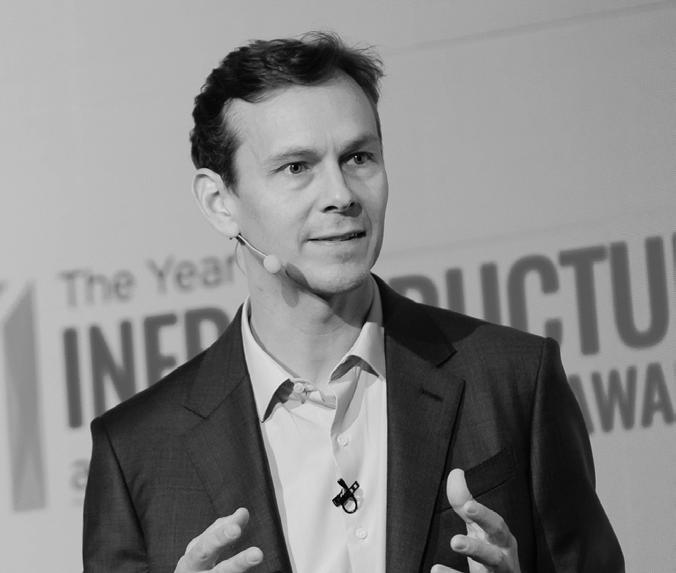
Following the CEO transition plan previously announced by Bentley Systems, Nicholas Cumins took charge as CEO in July. Cumins succeeds Greg Bentley, the eldest of the five brothers who founded Bentley Systems, who becomes Executive Chair of its Board of Directors.
Cumins is the first CEO in the company’s 40-year history who is not a Bentley family member, marking a significant milestone in the company’s development. The Bentley brothers redefined what was then computer-aided design (CAD) software when they developed MicroStation as a groundbreaking engineering application platform. Four decades of innovation and more than 120 acquisitions later, Bentley Systems is the leading provider of infrastructure engineering software, with its infrastructure digital twin solutions used to design, build, and operate critical infrastructure around the world.
The transition to Cumins’ leadership comes at a critical time for infrastructure sectors. There are not enough engineers to accomplish the work required to achieve global sustainability targets while also adapting aging infrastructure vulnerable to the effects of climate change.
Cumins unveiled Bentley’s vision for infrastructure resilience, noting that engineering firms and asset owner-operators are looking to software to help them overcome the limitations of scarce talent. Before his promotion to CEO, Cumins served as Bentley Systems’ COO from January 2022. He joined Bentley Systems as Chief Product Officer in September 2020.

HAMED HEYHAT NAMED EVP AND DIVISIONAL CEO OF GRUNDFOS'S WATER UTILITY DIVISION
Hamed Heyhat looks forward to making an impact globally in the water sector with sustainability and digitalisation as key levers
Grundfos, a global leader in water technology, appointed Hamed Heyhat as Executive Vice President and Divisional CEO of its Water Utility division. Hamed is committed to guiding the Division towards innovative solutions that improve water and energy efficiency, ensuring resilience against climate change for communities worldwide.
Hamed will lead Grundfos' efforts to enhance global water access and support sustainable aquifer management, while driving the digital transformation within the Water Utility division. Collaborating with teams in Brookshire, Texas, USA, and across the Global Grundfos business, he will implement strategies to create a sustainable water future. The division aims to meet the growing demand for clean, safe water by transforming water cycle management — from drinking water to wastewater, for communities and irrigation.
Hamed brings more than 20 years of experience from the wider utilities industry, gained at global companies including Alstom, General Electric Company, and most recently Honeywell. He joins Grundfos from his role as President of the Smart Energy business within Honeywell.
Aligning his own leadership background and virtues with the Grundfos purpose, Hamed will also be focused on the wellbeing of Grundfos colleagues. As such, driving profitability will go hand in hand with reinvesting in the workforce and the communities they serve, led by a belief that with global reach comes a responsibility to build a more sustainable future.

MYRON VAN ERT NAMED CHIEF COMMERCIAL OFFICER OF ZWITTERCO
Myron Van Ert joins ZwitterCo to drive global expansion and accelerate adoption of breakthrough membrane technology

JOSE CARLOS GIL JARA APPOINTED DIRECTOR OF SALES – EUROPE AT TURING
Gil Jara will lead Turing’s sales and business development efforts across Europe, driving growth and enhancing relationships
ZwitterCo, a leader in advanced membrane technologies for water treatment, announced that Myron Van Ert has joined the company as its first Chief Commercial Officer. Van Ert brings nearly three decades of experience in the water industry, most recently serving as Senior Vice President of Global Key Accounts at Veolia.
Van Ert will oversee the implementation of ZwitterCo's growth strategies in North America and around the world, driving partnerships and the commercial adoption of the company's breakthrough zwitterionic membrane technology. ZwitterCo’s membranes are transforming the economics of treating and reusing unconventional water sources, providing a lifeline for industries and communities in a world where naturally clean, easily accessible water is becoming increasingly scarce.
Van Ert’s leadership in the water treatment industry began at Osmonics, Inc., a pioneering membrane technology provider that was subsequently acquired by GE Water & Process Technologies, Suez Water Technologies and Solutions, and eventually Veolia Water Technologies and Solutions. Myron held increasingly senior positions throughout those corporate transitions, driving international expansion efforts across Europe, the Middle East, and Africa and leading key account strategies for some of the largest global industrial clients. His expertise also expanded across core water treatment unit processes and service offerings, including chemical and monitoring solutions.
Turing, a pioneering digital solutions provider leveraging artificial intelligence (AI) to optimize asset performance across the water value chain, has appointed Jose Carlos Gil Jara as the new Director of Sales for Europe.
Turing revolutionizes water management through AI and Industrial Internet of Things (IIoT) technologies. The company offers proprietary end-to-end solutions for water and wastewater treatment and distribution systems, catering to industrial and municipal water clients worldwide.
Spun out of Gradiant, Turing was launched in 2023 bringing together the digital business of Gradiant as well as Synauta, a digital solutions firm that employs machine learning to achieve energy savings in water treatment, and SpaceAge Labs, specializing in IIoT and AI for water network and land management.
Gil Jara joined Gradiant as Director of Sales for Europe in April 2023 and will be combining his role in Gradiant and Turing as Sales Director – Europe. He brings a wealth of experience and a proven track record in sales and business development within the water and wastewater sector. His career spans several prominent roles, including Water & Wastewater BDM Europe at WEG, where he managed business development for EPCs and European developers globally.
Prior to his role at WEG, Gil Jara served as Country Manager at AIRTIFICIAL INTELLIGENCE STRUCTURES S.A. (formerly INYPSA), an independent multidisciplinary engineering and consulting group.
Brown and Caldwell has expanded its water reuse practice by appointing Dr Fred Gerringer as the national specialty leader of reuse regulations and policy. Gerringer is a trusted leader in delivering clean drinking water reliably and safely, contributing to the well-being of communities and the environment.
Gerringer has worked closely with regional and state water regulatory agencies on compliance and has been involved in premier water reuse projects across California. His notable work includes developing the engineering report that will serve as the foundation for regulatory permitting for the City of Los Angeles’ Advanced Water Purification Facility at the Donald C. Tillman Water Reclamation Plant. He has also advised the Los Angeles Department of Water and Power on regulatory requirements to produce 210 million gallons per day of indirect and direct potable reuse water from the City of Los Angeles’ Hyperion Water Reclamation Plant.
Additionally, Gerringer led the process design and equipment selection for the ultraviolet light advanced oxidation process and ozone systems of the Pure Water Monterey Groundwater Replenishment Project. He also authored the test plan that secured the State of California’s first regulatory approval of Tier 2 pathogen removal credits for a membrane bioreactor system through demonstration testing at the Metropolitan Water District of Southern California’s Grace F. Napolitano Pure Water Southern California Innovation Center.
Iowa American Water announced that its current President, Randy Moore, has been named Vice President, Strategic Programs, at American Water. Brad Nielsen, currently Vice President of Operations at Iowa American Water, will replace Moore as President, also effective this week.
“We are thrilled to have Randy take on this new role at American Water and have Brad become President of Iowa American Water,” said Cheryl Norton, Chief Operating Officer of American Water. "Randy started his career at American Water in 1979 and has held multiple operational leadership roles that give him the perfect background for his new role. Brad has more than 20 years of operations experience, most recently serving as our Vice President of Operations in Iowa."
Nielsen joined Iowa American Water in 2019 as Vice President of Operations. In that role, Nielsen led a team of 80 employees who provide high-quality, reliable water services to approximately 225,000 people in Iowa. Prior to his role at Iowa American Water, Nielsen spent 17 years with Aramark Uniform Service, where he held multiple leadership positions, including Vice President of Operations. Nielsen has Bachelor's degrees in Finance, as well as Business Administration and Management from Mount Mercy University in Iowa.
Additionally, Laura Martin has been named Iowa American Water’s Vice President of Operations. Martin most recently served as Senior Director of Government and External Affairs of Pennsylvania American Water.

DR FRED GERRINGER APPOINTED LEADER OF REUSE REGULATIONS AND POLICY AT BROWN & CALDWELL
Based in Los Angeles, Gerringer is a Professional Engineer in California, holding a doctorate in environmental science and engineering
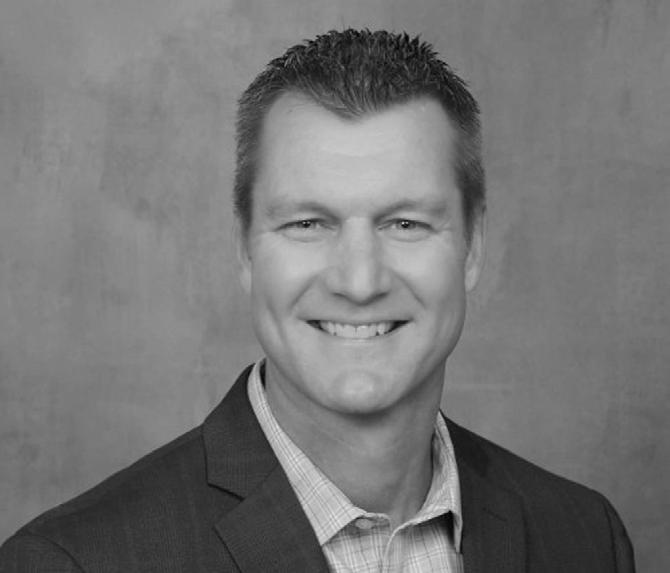
BRAD NIELSEN NAMED PRESIDENT OF IOWA AMERICAN WATER
Prior to joining American Water, Martin was Director of Marketing and Communications for the YWCA of Charleston, West Virginia
In an increasingly interconnected world, the vulnerabilities of critical infrastructure have become a pressing concern. The water sector, a cornerstone of public health and safety, has found itself at the forefront of this challenge. This article delves into the current state of the U.S. water sector’s security landscape, its challenges and future prospectives.
gonzález-cebrián/swm
In December 2023, a particularly alarming attack occurred when multiple US government agencies reported a group briefly took partial control of a booster station in the City of Aliquippa’s water system. This particular attack might have been prevented with several commonly recommended cybersecurity controls (i.e. countermeasures) mentioned in an alert from the Cybersecurity & Infrastructure Security Agency (CISA).
The frequency of such attacks on critical infrastructure, especially water systems, is escalating in the United States. A Moody’s Investors Service report released in January 2024 attributes this increase to the growing use of digital components and the rising vulnerability of operational technology, which makes cyber-physical attacks more likely. Moody’s emphasizes that nation-state cyber threats targeting the water sector are particularly dangerous due to their substantial funding and expertise, often aimed at disrupting various economic sectors for nonfinancial reasons. It also points out that larger, investor-owned utility companies are generally better equipped to allocate resources towards specific cybersecurity defenses and implement effective mitigation strategies, unlike smaller entities, which may struggle to do so.
Nonetheless, the threat of cyberattacks poses a significant challenge for most utilities across the country, regardless of
size. This was underscored by the Environmental Protection Agency (EPA), which revealed that 70% of the water systems it inspected failed to fully comply with the Safe Drinking Water Act's requirements. Although the EPA did not provide exact figures, it highlighted that some water systems have "alarming cybersecurity vulnerabilities," such as the continued use of outdated default passwords, insecure single signon (SSO) setups and access retained by former employees.
This year the Federal Bureau of Investigation (FBI), the National Security Agency (NSA), and the Department of Homeland Security’s CISA have all expressed concerns about the increasing cyber threats to U.S. critical infrastructure, which includes water systems. In February, the FBI warned Congress about hackers infiltrating U.S. cyber infrastructure, including water treatment plants and the electrical grid. Multiple news sources reporting a cyberattack on a Texas water filtration plant further underscored the need to implement effective cybersecurity controls.
Why the water sector is vulnerable
Several factors contribute to the water sector's vulnerability to cyberattacks. Many water utilities operate with limited funds that are stretched thin across multiple critical needs, making cybersecurity just one of many competing priorities,

points out Jim Schultz, Principal Consultant for Black & Veatch.
When faced with the immediate and tangible challenges of replacing aging infrastructure, repairing water main breaks, and reducing exposure to “forever chemicals,” investments in cybersecurity could be affected. Infrastructure repairs some-

times win out because their impacts are often visible and urgent, Schultz adds. Furthermore, many water systems, particularly smaller ones, often rely on industrial control systems (ICS) that combine outdated legacy technologies with more modern operational tools, says Richard Caralli, Senior Cybersecurity Advisor at
Axio. However, these older technologies generally do not support the best practices in cybersecurity and system hardening. This creates challenges in enhancing cybersecurity, makes water systems more difficult to manage and protect, and leads to an over-reliance on human expertise and intervention. This reliance can foster
By learning what constitutes normal activity, AI can detect deviations and alert security operations center (SOC) analysts to potential threats
an "if it isn’t broken, don’t fix it" attitude, which can result in cybersecurity investments being deprioritized.
To drive meaningful change in the sector, Caralli argues that cybersecurity regulation is essential. He believes a tailored regulatory framework, similar to the North American Electric Reliability Corporation (NERC) Critical Infrastructure Protection (NERC-CIP) standards in the electricity sector, will be necessary for water and wastewater utilities. Such regulations, coupled with adequate funding, would help utilities, especially smaller ones, comply with new requirements and improve their cybersecurity posture.
A collaboratively developed framework like NERC CIP could help provide consensus, clarity and focus on a baseline set of cybersecurity controls utilities can implement in an environment with an abundance of free cybersecurity guidance, indicates Schultz.
Other significant barriers are the complex nature of cybersecurity and a competitive market for experienced resources that can hamper the ability of any organization to achieve its cybersecurity goals, highlights Schultz.
Leveraging digital technologies for cybersecurity
The water sector's reliance on digital technology for monitoring, operations and customer communication creates significant vulnerabilities, underscoring the urgent need to modernize and secure these systems. Experts suggest that improving basic cyber hygiene, such as strengthening passwords, reducing ex-
A collaboratively developed framework like NERC CIP could help provide consensus, clarity and focus on a baseline set of cybersecurity controls
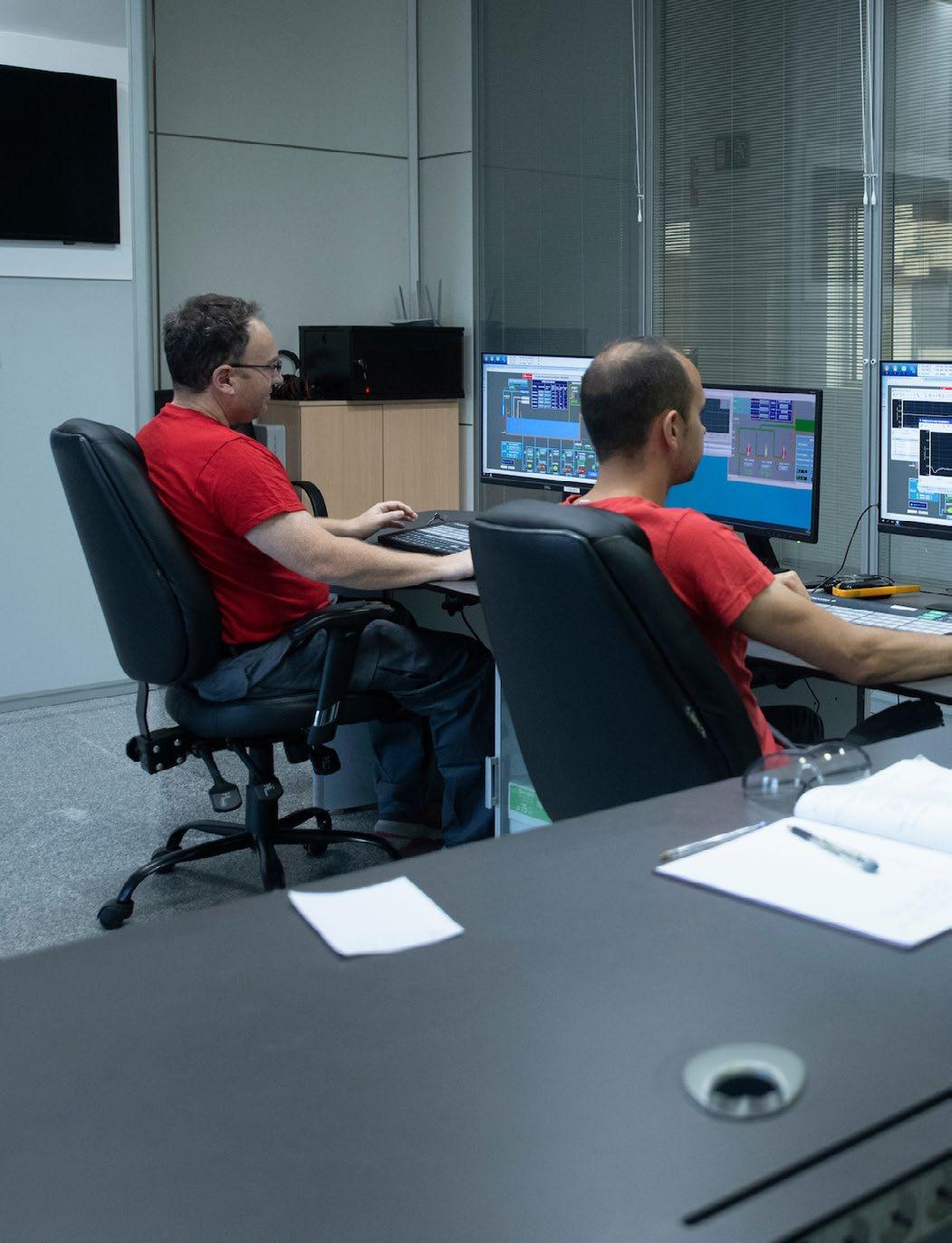
posure to public networks and implementing cybersecurity awareness training is essential. Additionally, deploying air-gapped systems that separate critical control networks from other networks can further protect against attacks. Despite the preventable nature of many past attacks, the increasing sophistication of
cyber threats, particularly with the rise of artificial intelligence (AI), makes it critical for the water sector to adopt modern, resilient digital tools to defend against evolving threats.
New products have been developed that add remote functionality to aging legacy OT systems, but that additional
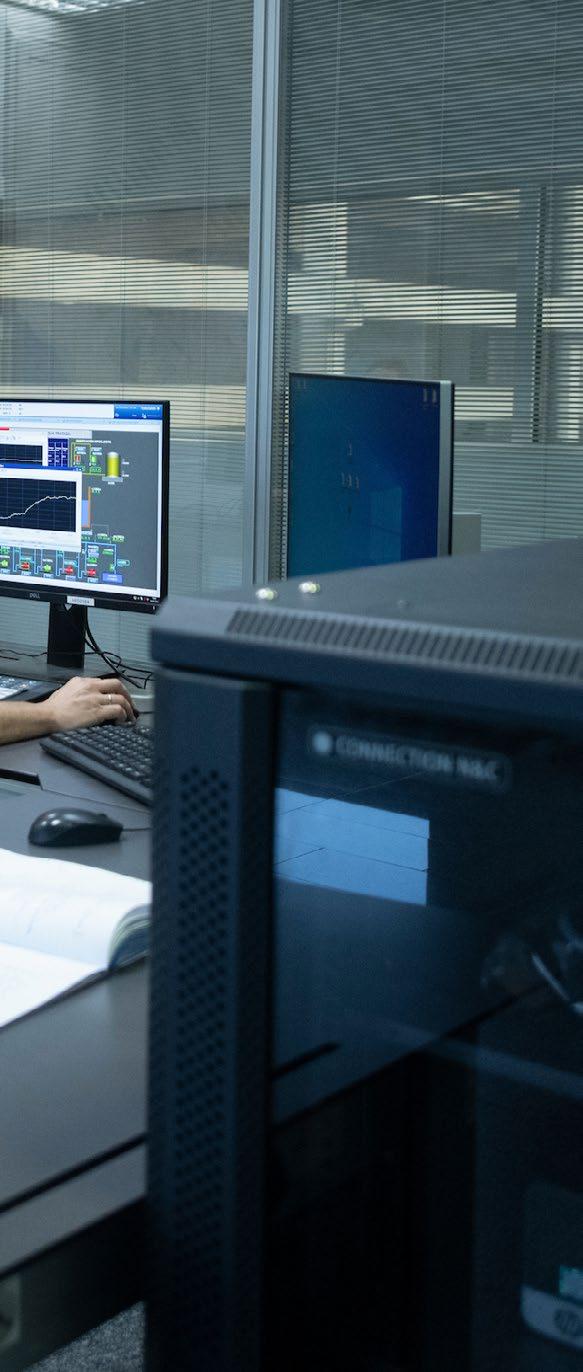
As cyberattacks continue to increase in frequency and sophistication, AI becomes an important component in managing the volume of threats
against this increased volume of threats. By automating lower-level tasks, such as log review and alert flagging, AI frees up human resources to focus on higher-level, more complex activities. This division of labor is essential for maintaining an effective cybersecurity posture in the face of growing threats. AI offers the hope of moving from “detect/respond” to “predict/prevent.”
connectivity has also increased cyber risk exposure. However, digital technologies, including AI and machine learning, are being increasingly integrated into the cybersecurity solutions used in the water sector. According to Schultz, these technologies are particularly effective in Security Information and Event
Management (SIEM) systems and related systems.
SIEM systems are designed to monitor threats by collecting and analyzing data from a vast array of sources, including logs from computers, messages from devices, and alerts from intrusion detection systems, for example. The sheer volume and complexity of this data make it difficult for humans to process and interpret, but SIEM systems can collect, normalize, correlate, aggregate and report on this information much more effectively.
One key application of AI in cybersecurity is pattern recognition within intrusion detection systems. Machine learning algorithms are employed to identify concerning patterns or anomalies in network traffic and user behavior. By learning what constitutes normal activity, AI can detect deviations, send alerts to a SIEM, and notify security operations center (SOC) analysts of potential threats, allowing them to investigate further. This proactive detection is crucial in identifying and mitigating cyber threats before they can cause significant damage.
Schultz adds that AI also plays a vital role in augmenting human capabilities. As cyberattacks continue to increase in frequency and sophistication due to the cyber adversary’s use of AI, AI also becomes indispensable in defending
Additionally, the SIEM is being used to create a "single pane of glass" management console, which consolidates data from multiple sources (including AI-based systems) into a unified display. This approach simplifies the monitoring process for SOC teams, making it easier to manage and respond to threats in real time. AI can also generate simulated data for use in simulating attack scenarios, allowing organizations to test their systems and improve their defenses.
In the broader context, AI is now a critical component of cybersecurity, deeply intertwined with a chain of several co-dependent systems. In other words, networking requires robust cybersecurity measures, which in turn depend on AI to handle the increasing volume and variety of attacks. AI relies on data for training, and that data must be protected. This chain of dependencies underscores the importance of all components working well and securely to maintain a secure and resilient infrastructure.
Information sharing is also critical in cybersecurity efforts. Enhanced collaboration between agencies like CISA, the EPA, and water sector organizations
In the broader context, AI is now a critical component of cybersecurity, deeply intertwined with a chain of several co-dependent systems
such as WaterISAC and the Water Sector Coordinating Council (WSCC) is vital, stresses Caralli. This cooperation is needed to ensure that clear, actionable threat and vulnerability information is quickly and effectively communicated to owners and operators, providing them with sufficient time to prepare for and respond to potential attack campaigns.
Sharing intelligence among utilities is equally important. Schultz emphasizes, “You have to be right all of the time. The
cyber adversary has to be right just once. One of the most effective strategies for leveling the playing field is through reporting events, information sharing, and contributing to the automated collection of global threat intelligence. The adage ‘united we stand, divided we fall’ is particularly relevant in this context. Facing cyber threats alone is a difficult task, but by contributing and collaborating organizations can benefit from the collective knowledge and experience of the indus-
try. Advanced notifications disseminated from shared intelligence sources provide critical early warnings, allowing for proactive responses and stronger defenses.”
WaterISAC, the international security network created by and for the water and wastewater sector, has made good progress in sharing educational case studies, adds Schultz.
Future trends in water industry cybersecurity
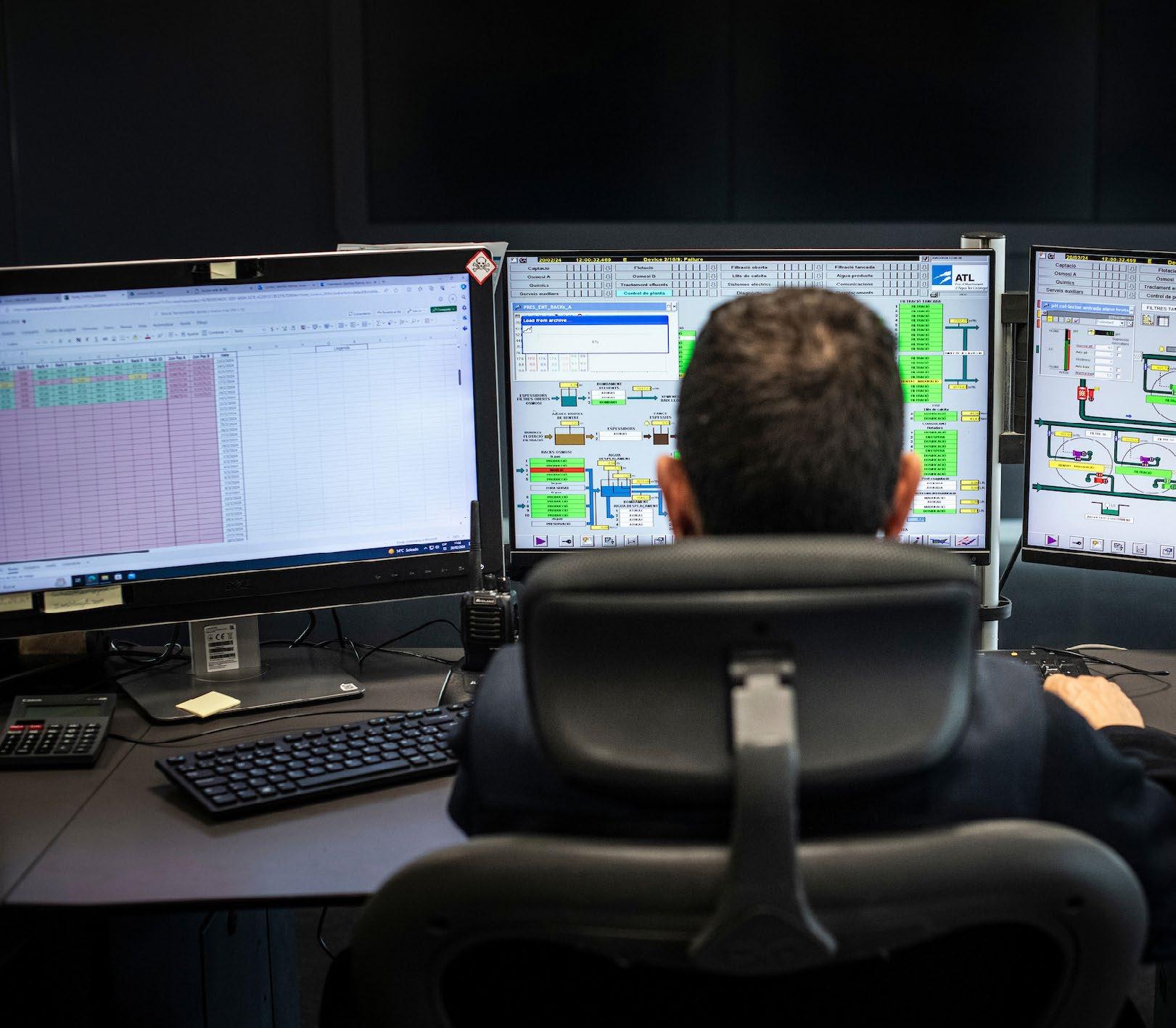
SIEM systems are designed to monitor threats by collecting and analyzing data from a vast array of sources, including logs from computers
Looking ahead, regulation in the water industry’s cybersecurity landscape seems inevitable. In March 2023, the EPA issued a mandate regarding the cybersecurity of public water systems that was later rescinded in October 2023. It is reasonable to expect revisions and another release of some sort. So, be prepared for increased regulatory requirements, says Schultz.
The growing gap between available cybersecurity resources and the escalating
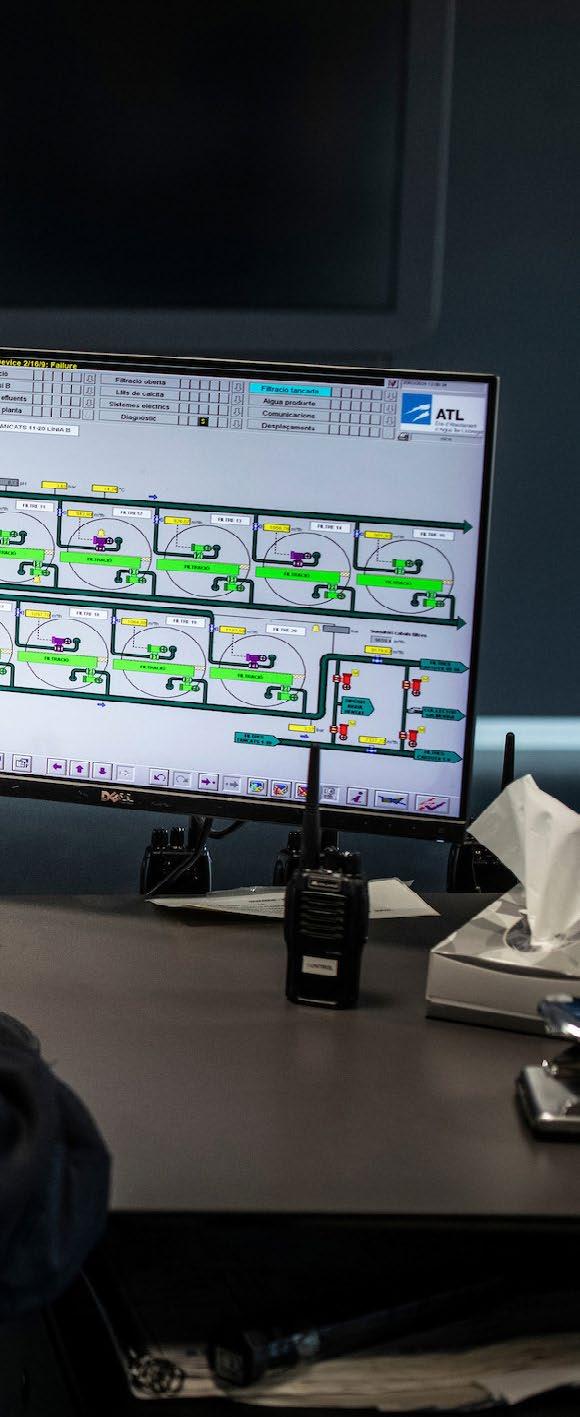
number of cyberattacks is another significant trend. This imbalance will likely drive greater reliance on AI to manage the increasing volume of threats, as the addition of new skilled cyber resources continues at a lower rate compared to the increasing rate of attacks.
The water industry will also see a greater dependence on industrial automation, especially as experienced staff retire, and institutional knowledge diminishes. This shift will require plants to rely more on programmable logic controllers (PLCs) and other automated systems to maintain operations.
With increasing complexity in systems and their interconnections, the need for a risk management approach will become more pronounced, according to Schultz. Prioritizing critical equipment and addressing the most significant vulnerabilities quickly and cost-effectively will be essential. Risk management will play an increasingly vital role in ensuring that security measures match an organization’s risk tolerance and risk reduction goals.
He believes that the industry will also experience growth in cloud-based SCADA systems, offering enhanced flexibility, scalability, and a whole new set of cybersecurity challenges. While adoption is still in its early stages, it is expected that in five to ten years, cloud-based solutions will become more prevalent. These systems must be implemented with strong backup strategies to ensure continued “local” automatic and manual operation are possible when internet connectivity is compromised. There are valid arguments for and against “off-prem" cloud-based solutions, but in the end, it is about which approach reduces risk the most for a given utility based on consideration of many factors.
AI will play a crucial role in optimizing operations and maintenance. For instance, AI can help minimize energy costs and chemical use, and it can be used for predictive maintenance by analyzing
The
industry is expected to see a rise in cloud-based SCADA systems, offering enhanced flexibility, and a new set of cybersecurity challenges
motor currents and bearing temperatures to identify deviations from normal conditions that can be proactively addressed. These applications of AI, which typically require robust connectivity, further highlight the importance of cybersecurity.
Finally, the advent of quantum computing will revolutionize cybersecurity with regard to encryption, stresses Schultz. As quantum computing advances, it will eventually be used to break current encryption schemes, necessitating the development of more sophisticated methods to protect sensitive data.
The water industry faces a complex and evolving cybersecurity landscape, with threats becoming more frequent and sophisticated. While advancements in technology offer new tools to enhance security, they also introduce new risks. Addressing these challenges requires a multifaceted approach, including stronger regulation, increased collaboration, improved cyber hygiene, and the strategic adoption of digital technologies. As the industry prepares for future threats, proactive measures and continuous innovation will be key to safeguarding this critical infrastructure.
With increasing complexity in systems and their interconnections, the need for a risk management approach will become more pronounced
"Siemens' key differentiator in the realm of digitalization and software is the comprehensive end-to-end solution it offers"

Water is essential for life, and as the global population continues to grow, the demand for this vital resource increases. Water utilities face significant challenges due to climate change, urbanization, and rising environmental pollution. Aligned with the UN's objectives, Siemens is dedicated to assisting the water sector by offering dependable technological solutions that promote sustainable water supply and effective wastewater management for everyone.
Z Olivia Tempest
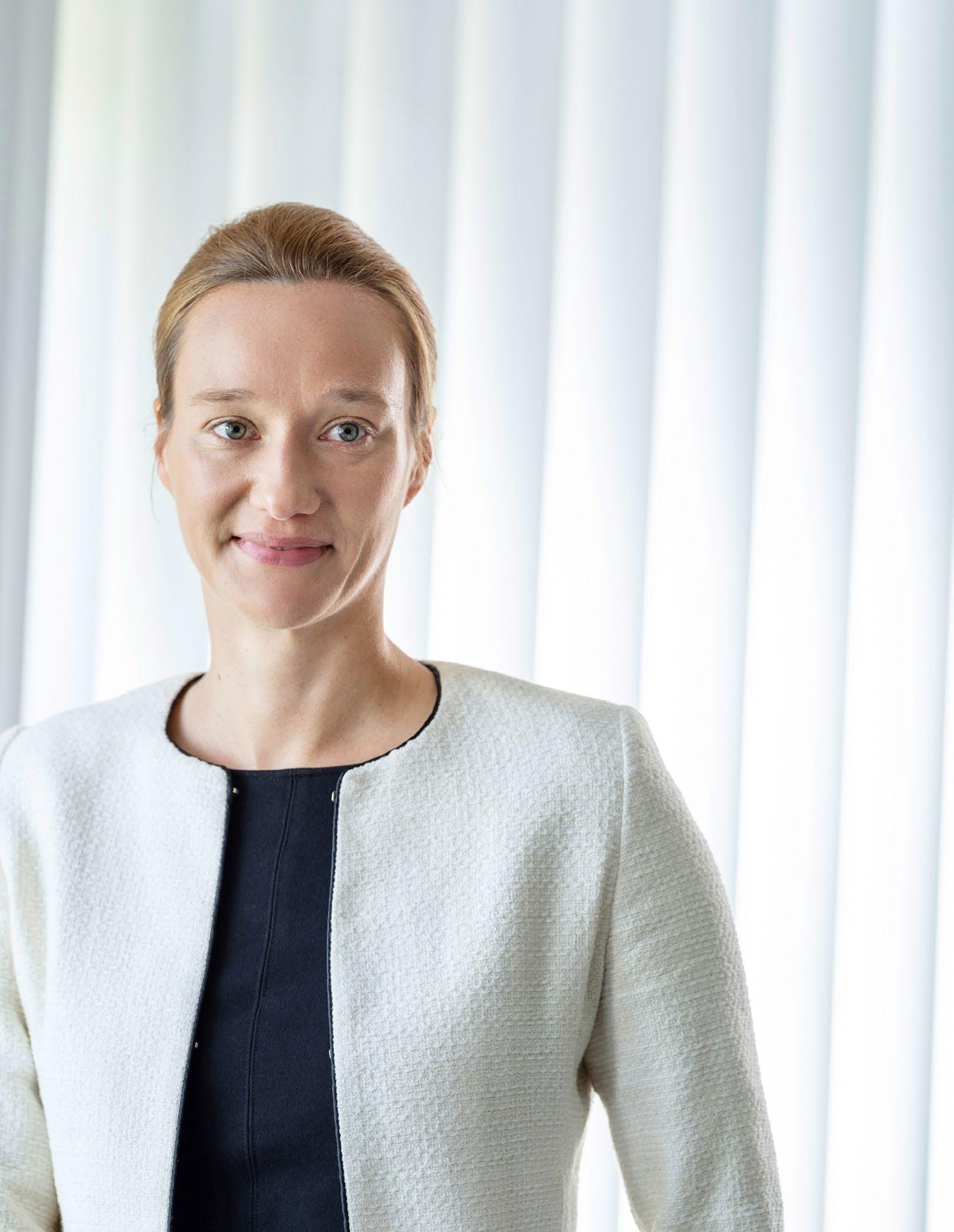
With a wealth of experience and a strategic vision for the future, Anja Eimer, General Manager, Global Water Industry at Siemens, leads the German-based company's efforts in transforming the water and wastewater sector. In this exclusive interview, she shares insights into Siemens' overarching vision for the water industry, the company’s strategy to address key challenges, and the innovative digital solutions that are shaping a more sustainable and efficient future for water management.
Can you share Siemens' overarching vision for the water industry and how the company plans to address the key challenges and opportunities in this sector?
Water has long been an essential and stable business sector for Siemens. However, current global trends such as water scarcity, severe weather events, workforce shortages, and underfunded infrastructure have created a growing regulatory and industrial demand for new technologies.
I believe water is becoming as critical an issue as CO2, with a rising demand to secure this precious resource, particularly in the industrial sector. While Siemens has traditionally focused on municipal water and wastewater services, we are also deeply involved in various industries such as food and beverage, automotive, semiconductors, and pharmaceuticals. Our customers in these fields are increasingly focused on water savings and sustainability targets.
Our strategy is centred on three core pillars. The first pillar focuses on strengthening our market position in automation, aiming to maintain our leadership in distributed control systems, SCADA, and instrumentation. The second pillar emphasizes expanding our sustainability offerings, with a significant focus on energy efficiency, particularly in the water and wastewater industry. The third pillar involves growth in the fragmented water and wastewater market, addressing these priorities as key to solving our customers' core challenges.
We also observe a shift from CapEx to OpEx due to budget constraints in infrastructure. This has led to a greater emphasis on operational efficiency, where real-time optimization and asset management software play a crucial role.

"WATER IS BECOMING AS CRITICAL AN ISSUE AS CO2, WITH A RISING DEMAND TO SECURE THIS PRECIOUS RESOURCE, PARTICULARLY IN THE INDUSTRIAL SECTOR"
Siemens provides end-to-end solutions, leveraging our expertise in hardware like PLCs, instrumentation, meters, and sensors, along with our expanding software portfolio and integration services. We can handle IT/OT integration comprehensively. For example addressing energy costs, which constitute 30% of operational expenditures. Our software helps monitor energy consumption across the value chain and identify energy-saving opportunities.
Additionally, the aging workforce is a significant concern. Digital tools can help reduce the manpower required to operate infrastructure and extend the life of existing systems.
Can you tell us about your role as General Manager, Global Water Industry at Siemens and how your experience has shaped your approach to driving innovation and sustainability in the water sector?
My responsibility is to drive Siemens' market share growth in the water and wastewater industry globally. This involves three core areas. The first is portfolio shaping & innovation. My team and I gather and discuss requirements from different regions since Siemens operates worldwide. We serve nearly every country with our water and wastewater portfolio, collecting market requirements, consolidating them, and driving product innovation.
The second core area is business development, where we support our regional companies in building relationships with new customers and introducing new products to the market.
The third core area is technical standardization. We develop and globally implement technical standards, e.g., automation systems in water plants, making them available for training purposes to internal teams and key customers and partners.
I have a background in strategy and management consulting, with approximately eight years of experience across various industries such as automotive and banking where my clients often asked how they could monetize new technologies, which is a key concern for many companies across various sectors. My expertise lies in developing business models and go-to-market strategies to help firms of all sizes enter new markets. I bring this experience to my current role, helping Siemens expand into new markets, particularly in digitalization. One of my core strengths is challenging the status quo, a skill honed during my consulting career.
How does Siemens position itself in the global water industry market, and what are the key strategic initiatives driving growth in this sector?
In addition to our three strategic pillars, Siemens drives growth through key initiatives aligned with our Siemens Xcelerator vision. Siemens Xcelerator, our open business platform, aims to simplify our customers' experiences by providing an interoperable portfolio. For instance, our hardware seamlessly integrates with various software
"SIEMENS SERVES NEARLY EVERY COUNTRY WITH OUR WATER AND WASTEWATER PORTFOLIO, COLLECTING MARKET REQUIREMENTS AND DRIVING PRODUCT INNOVATION"
solutions, enabling different software systems to communicate via open architecture and interfaces. This approach is fundamental to delivering our comprehensive end-to-end value proposition. Our second key initiative focuses on enhancing and expanding our ecosystem. We actively collaborate with partners such as system integrators, EPCs, and IT consultants. By adopting the "Made by Our Partner" principle, we leverage market opportunities to enrich our portfolio through these collaborations. Our goal is to make our products accessible to everyone, which includes launching new sales channels and approaches. We are also embracing digital selling methods, such as marketplaces, to reach a wider audience.
What differentiates Siemens’ water industry solutions from those of its competitors, and how does the company plan to maintain its competitive edge?
"DIGITAL SOLUTION TOOLS CAN HELP REDUCE THE MANPOWER REQUIRED TO OPERATE INFRASTRUCTURE AND EXTEND THE LIFE OF EXISTING SYSTEMS"
I would say it depends on the competitive benchmarks we are considering. With our hardware portfolio, including automation and instrumentation, we hold a leading market position. Our key differentiators are the high quality, longevity, and resilience of our products, and we are committed to maintaining these standards. In the realm of digitalization and software, the landscape is quite different. The market is highly fragmented, with numerous startups and small to medium-sized players. However, the market is evolving, leading to significant M&A activity. Our key differentiator in this space is the comprehensive end-to-end solution we offer. We possess deep domain expertise in Operational Technology, understand the requirements for effective software functionality, and have the capability to implement all necessary system architectures and layers. This enables us to extract, manage, analyse, and utilize data effectively. Additionally, we excel
in optimization, covering the entire water cycle and focusing on enhancing resource efficiency through monitoring and optimization.
Depending on the regions where we operate, we adopt a more localized approach to our product portfolio and market strategies to address varying competitive landscapes.
Can you discuss Siemens’ strategy for expanding its water industry solutions, and what opportunities or challenges you foresee?
Our key focus is to offer our customers and partners comprehensive solutions, not just products. At the beginning of this year, we launched a major campaign called the Non-Revenue Water Campaign, which integrates various portfolio elements. Depending on the customer's needs, we can provide a software license for leakage detection or bundle it with a MAG 8000 battery flow meter. If hardware installation is required, we can also offer engineering and implementation services. This multi-layered bundling principle embodies our approach to industry solutions.
Siemens has transformed from a hardware-focused company towards a comprehensive tech company, including software. To achieve this, we are fostering greater internal collaboration, with dedicated groups working closely on the portfolio side. Additionally, this approach requires increased collaboration with partners. The market is very heterogeneous, with some partners being globally active, allowing us to set up dedicated global account managers. However, we also work with partners that are highly specific to local markets.
Could you tell us how the acquisition of BuntPlanet has strengthened Siemens’ portfolio for the water industry?
With the acquisition of BuntPlanet, we have significantly strengthened our portfolio for water
"IN ADDITION TO OUR THREE STRATEGIC PILLARS, SIEMENS DRIVES GROWTH THROUGH KEY INITIATIVES ALIGNED WITH OUR SIEMENS XCELERATOR VISION"
network operations. BuntPlanet brings solutions focused on leakage detection, as well as tools for managing entire networks and digital twin solutions. Our key value proposition, which sets us apart from other leakage software providers, is the seamless combination of software with hardware, sensors, and integration services.
A standout feature of our leakage detection software is the "zero-touch" principle. This design makes implementation extremely user-friendly, which is crucial in the water and wastewater industry where workforce shortages are common. Many utilities lack the capacity and expertise for large-scale implementation projects. To simplify
"SIEMENS XCELERATOR, OUR OPEN BUSINESS PLATFORM, AIMS TO SIMPLIFY OUR CUSTOMERS' EXPERIENCES BY PROVIDING AN

this process, our software comes preconfigured with data for our portfolio's flow meters, and we aim to include flow meters from other suppliers as well. This integration means that clients can easily download the software, scan the QR code on their installed flow meters, and automatically integrate the data of the flow meter into the system.
Additionally, the software is based on artificial intelligence, making it a self-learning system that understands the network's setup and behaviour, becoming operational within a few hours. This ease of use and rapid deployment is a key unique selling proposition that we now offer to the entire water and wastewater industry. We recently
ON THE COVER
"WE EXCEL IN OPTIMIZATION, COVERING THE ENTIRE WATER
CYCLE AND FOCUSING ON ENHANCING RESOURCE EFFICIENCY THROUGH MONITORING AND OPTIMIZATION"
showcased this innovative solution at Munich’s IFAT 2024, demonstrating the smooth onboarding process.
Can you comment on Siemens’ partnership with Ketos and how it might contribute to addressing the needs of water operators?
Water operators face significant challenges related to both water quantity and quality, particularly with the introduction of new regulations such as PFAS. Effective water quality management is essential for achieving sustainable operations and fostering innovative use cases.
Our partnership with KETOS is a key element in our water reuse initiatives, which aligns with our Siemens Xcelerator strategy and allows us to offer advanced water quality solutions to the market. Through this collaboration, we are particularly focusing on the industrial water sector, aiming to enhance our capabilities and provide comprehensive solutions for water quality management.
Siemens Water (SIWA) applications are specifically developed for the water and wastewater industry operators. Can you discuss how these tailored solutions contribute to efficiency and sustainability?
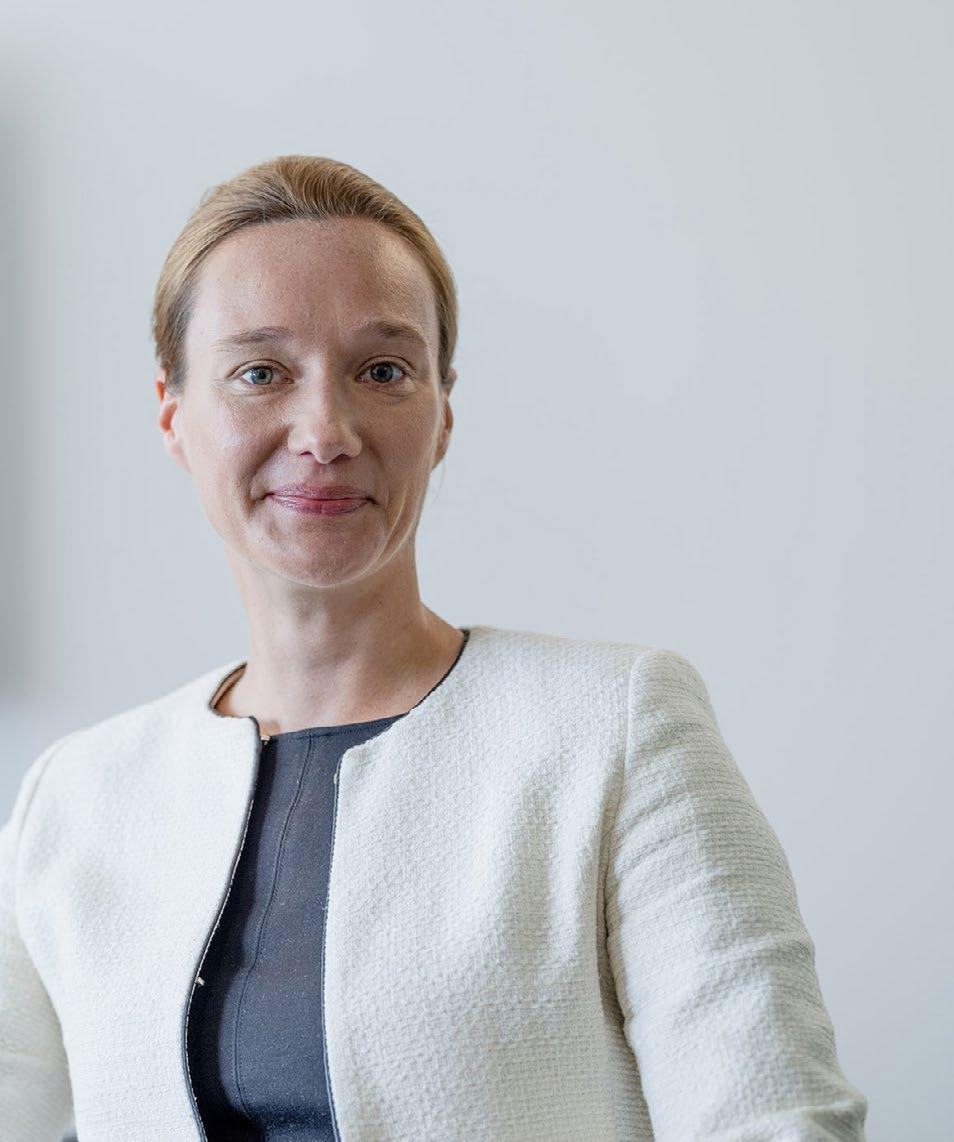
The SIWA Leak Finder is designed to help network operators identify leaks with higher accuracy and determine which leaks need to be repaired, thus saving on maintenance and service costs. In Sweden, Siemens assisted water company VA SYD in reducing its water losses from 10% to 8%. While this might not seem significant, it made a substantial difference for the utility. Our software enabled the identification of the smallest leaks, detecting water losses of around 0.2 to 0.5 litres per second. These small leaks often contribute more to overall water losses in the network compared to larger ones, as they are harder to detect. VA SYD was extremely impressed with our solution.
Regarding non-revenue water in general, reducing water losses can significantly impact energy costs. In many countries, water loss rates are even higher. For example, Mexico experiences 30% to 50% non-revenue water. Considering that 30% of total operational costs are due to energy expenses, addressing water leakages can lead to substantial
"OUR
ARE THE
LONGEVITY, AND
OF OUR PRODUCTS, AND WE ARE COMMITTED TO MAINTAINING THESE STANDARDS"
energy savings. This highlights the major sustainability benefit of reducing water losses.
Siemens is expanding its software portfolio for the water industry. Can you discuss new software offerings such as SIWA Blockage Predictor or others?
The SIWA Blockage Predictor helps predict sewage spills in real-time within wastewater networks and optimizes their performance. While this challenge is not universal, many countries have combined wastewater networks for households and industries, where overflows are a significant issue.
Regarding water quality, Siemens recently launched a new product in collaboration with Northumbrian Water Group at the UK Innovation Festival. The UK, known for its innovative market, was the ideal setting for this co-creation. Our new business model, Water Quality As A Service, simplifies the provision of our software and complete service packages to water companies.
The Treatment-to-Tap initiative aims to revolutionize water quality management. By the project's end, Northumbrian Water will operate Europe’s largest integrated network of water quality and leakage management sensors and analytics software. Managing water quality is increasingly challenging due to aging networks and growing populations. This new research will explore how to best engage and support customers with real-time water quality insights, making water company operations more customer-centric than ever.
Furthermore, Siemens Financial Services offers unique financing solutions to support these implementations. We developed this application at the Northumbrian Water Group Innovation Festival, with participation from other water utilities and water regulators, providing an excellent testing ground to finalize our offerings.
"AT THE BEGINNING OF THIS YEAR WE LAUNCHED THE NON-REVENUE WATER CAMPAIGN WHICH AIMED WATER UTILITIES TO REDUCE NON-REVENUE WATER BY UP 50%"
Another great example is SIWA Sewer Optimizer, which helps avoid non-compliant discharges and manage the entire wastewater network during heavy rain events: a real-time prediction of control interventions to reduce spillovers of untreated water. We are also looking to enhance this solution by integrating weather forecast data for greater accuracy.
We at Siemens are committed to addressing key industry challenges, which drive our portfolio expansions. We start with local pilot projects, primarily in co-development contexts, and scale globally when feasible. Although some solutions are more localized, our goal is to develop a globally accessible portfolio for our customers.
What role do you see for digital twin technology in the water and wastewater industry?
In my opinion, digital twins are crucial for creating an efficient, sustainable, and resilient water infrastructure. At Siemens, we recognize that different phases of an infrastructure's life cycle require distinct digital twin solutions. We offer tailored digital twin solutions for each phase: design and engineering, commissioning, operation, and maintenance.
Our digital twin solutions focus on optimizing infrastructure management and planning. Additionally, we provide digital twin solutions to optimize the process itself, for example to enhance energy efficiency within a wastewater treatment process. This is particularly beneficial for brownfield water infrastructure. Siemens has a long history of using digital twins, with many references in different industries and infrastructure, like energy grids.
A key requirement for all our digital twin offerings is having a unified data backbone. Many of our customers start with a digital twin for the engineering and planning phase and later utilize the same data for digital twins during the operations phase for simulations and other purposes. This seamless integration across different phases is Siemens' key value proposition.
With increasing cyber threats, what measures has Siemens implemented to ensure the security of critical water infrastructure?
Siemens provides a defence-in-depth approach, a multi-layered security concept that ensures
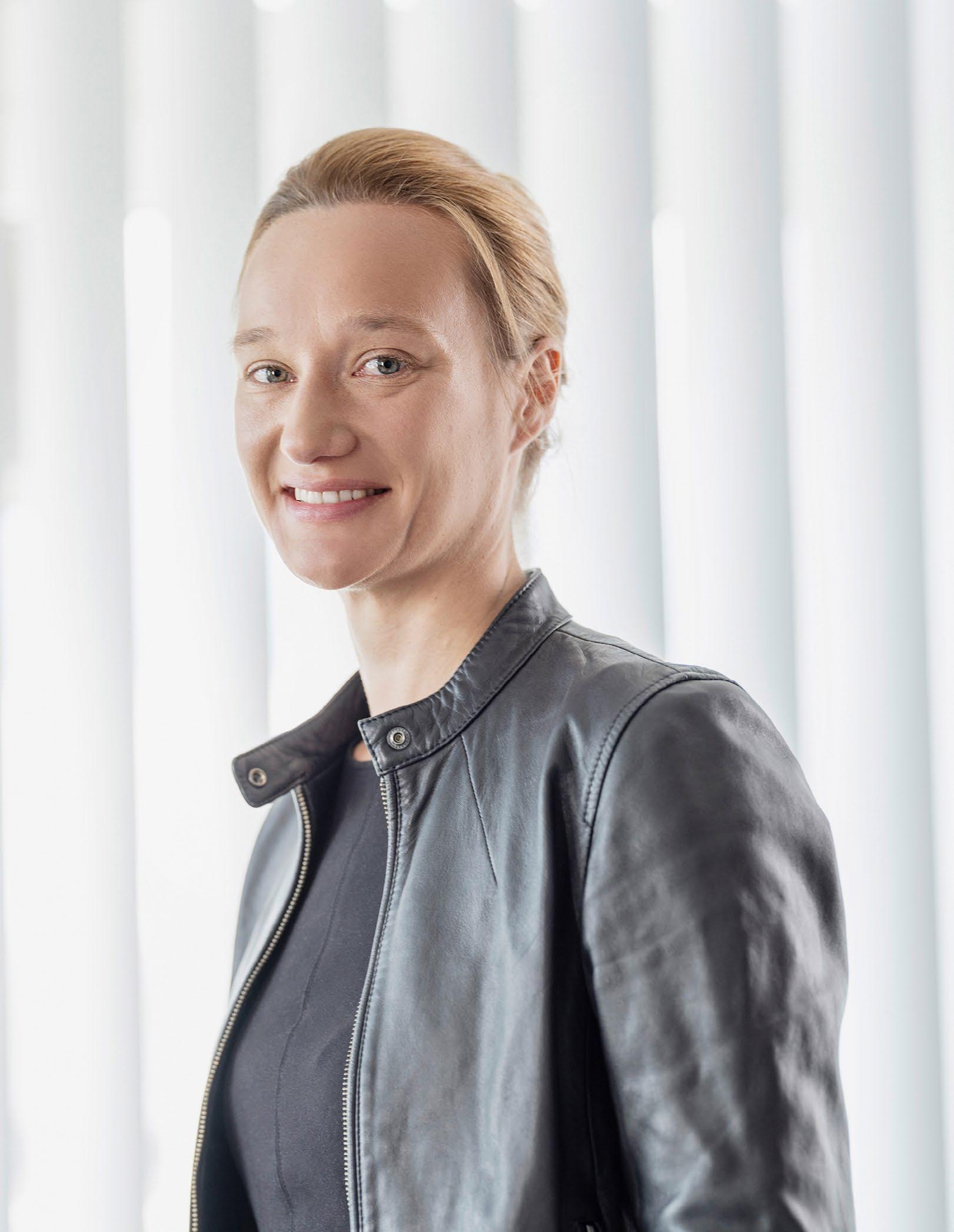
comprehensive protection for water and wastewater plants. We adhere to the international ISA/IEC 62443 standard, which sets best practices for cybersecurity and offers a framework to assess security performance levels. For Siemens, this means that none of our control system components have direct Internet access; they are isolated from the company IT network by firewalls and demilitarized zones. For remote access, we offer an OT network over public networks using VPNs to prevent cyber-attacks.
Our defence-in-depth concept consists of three layers: physical security, network security, and system integrity. The outermost layer, physical security, includes measures to prevent unauthorized physical access to critical components and systems, starting with conventional building access and extending to securing sensitive areas with access control. The middle layer, network security, focuses on installing secure communication solutions to protect networks against unauthorized access, ensuring availability and protecting easily accessible systems. The innermost layer, system integrity, involves system hardening, user and patch management, and malware detection and prevention to maintain the integrity of the system.
This year, Siemens has also launched the SINEC Security Guard, an intuitive cloud-based software that enhances cybersecurity on the shop floor. It enables industrial operators and automation experts to perform vulnerability mapping and manage security measures effectively.
In today’s business world, with significant activity conducted remotely or via the cloud, robust cyber defence is critical. Siemens continues to innovate in cybersecurity and communications. This continuous rapidly innovative approach ensures our customers have the latest tools to protect their systems against evolving cyber threats.
Could you share some examples of how Siemens’ technologies have helped water utilities improve efficiency and sustainability?
We have many examples to share, but one we are particularly proud of is our work with our Portuguese customers EPAL (Empresa Portuguesa das Águas Livres) and AdVT (Águas do Vale do Tejo). The utilities launched the “EPAL 0%” Program,
"OUR PARTNERSHIP WITH KETOS IS A KEY ELEMENT IN OUR WATER REUSE INITIATIVES, WHICH ALIGNS WITH OUR SIEMENS XCELERATOR STRATEGY"
which aims to achieve energy neutrality in all its operations by 2025 through an integrated mix of technological solutions. This includes energy efficiency measures, producing renewable energy by installing hydroelectric, wind, and photovoltaic power plants, creating microgrids, digitalization, and utilizing water reservoirs for energy storage. EPAL and AdVT sought to reduce their reliance on non-renewable energy sources and minimize the environmental impact of energy production. Siemens supported EPAL in achieving its energy neutrality goals by optimizing the efficient management and remote control of its complete assets, being an integral part of their journey towards sustainability.
How is Siemens aligning its water industry solutions with environmental regulations in global sustainability goals?
"REGARDING WATER QUALITY, SIEMENS LAUNCHED A NEW PRODUCT IN COLLABORATION WITH NORTHUMBRIAN WATER GROUP AT THE UK INNOVATION FESTIVAL"
Achieving Sustainable Development Goal 6, which ensures access to water and sanitation for all, is a core mission for Siemens. We are dedicated to helping societies worldwide gain access to safe water, sanitation, and hygiene as fundamental human rights. The water sector plays a critical role in this mission, which is why Siemens offers comprehensive solutions spanning the entire water cycle — from desalination and water treatment to freshwater networks and wastewater management. Our key claim, "technology to transform the every day," embodies our commitment and in the water and wastewater industry, we support our clients by providing end-to-end solutions.
What future innovations can we expect from Siemens in the water industry, particularly concerning digitalization?
Digitalization is at the core of Siemens’ product offerings. Our leakage detection solution, for example, runs on artificial intelligence, one of the
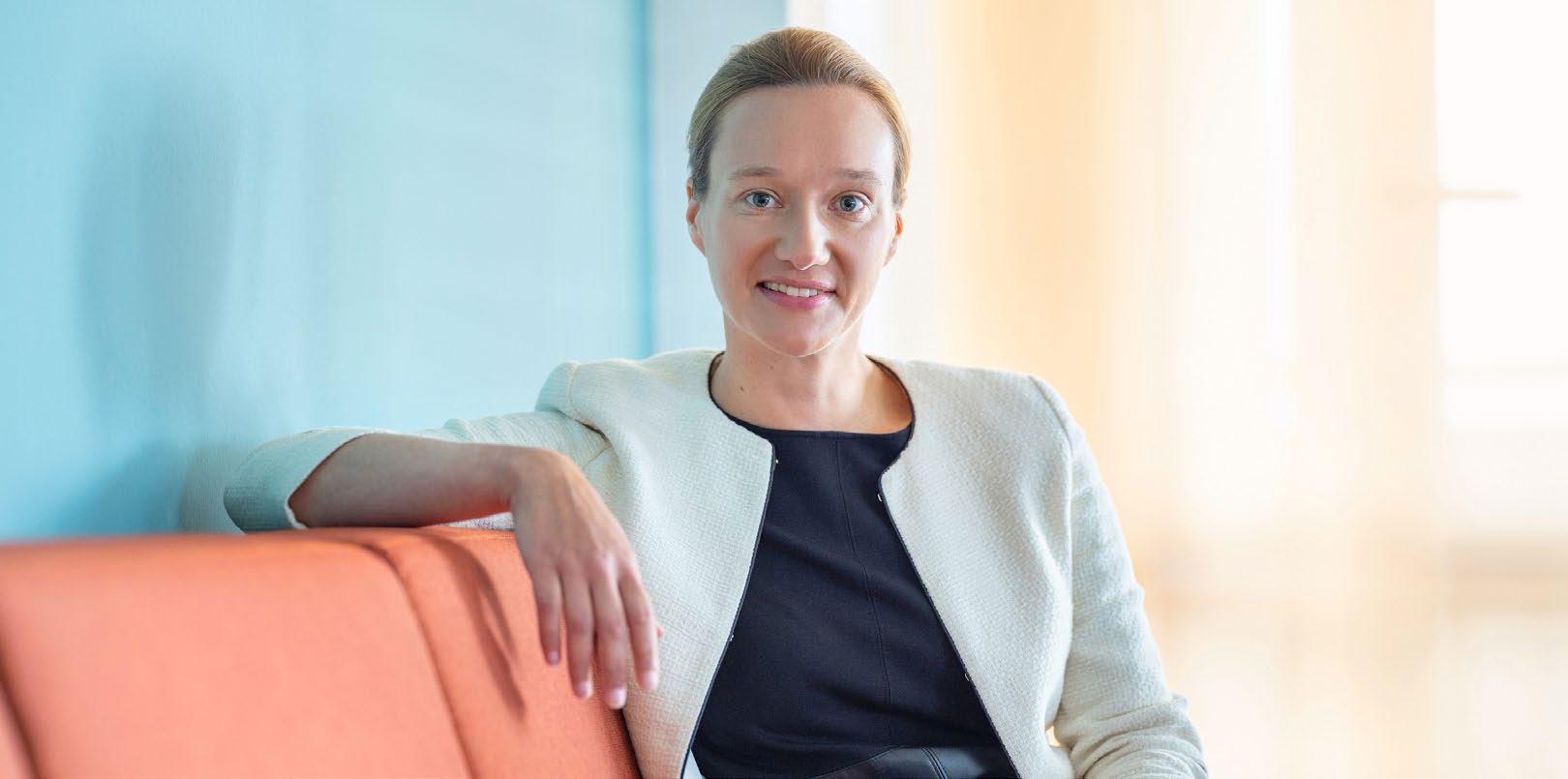
key technologies Siemens is continually innovating. We leverage AI extensively, believing it can help make the world more sustainable, efficient, and resilient. In the context of digitalization, AI plays a crucial role in simplifying operations for water and wastewater industry operators. Our AI-driven software is user-friendly and requires no specialized skills to operate, making it easier for operators to manage their tasks effectively.
What is your personal vision for the future of digital and smart water solutions, and how is Siemens positioned to lead this transformation?
My vision is a future with digital and smart water solutions. Siemens is playing a crucial role in this transformation by ensuring efficient and sustainable water management, which in turn improves resource conservation and quality of life. With our Siemens Xcelerator strategy, we are positioned to lead this change. Our extensive expertise and experience in industrial automation, digitalization, and smart solutions enable us to develop and implement innovative technologies for the entire water management sector. This
"OUR EXPERTISE IN INDUSTRIAL AUTOMATION AND DIGITALIZATION ENABLES US TO DEVELOP INNOVATIVE TECHNOLOGIES FOR THE WATER MANAGEMENT SECTOR"
applies to both municipal and industrial applications, addressing the complete spectrum of water challenges.
Is there anything else you would like to share about Siemens’ vision and strategy for the water industry that we haven't covered during the interview?
I would like to emphasize that while we have a strong market position, we are committed to further expansion. Siemens is a global leader in the water and wastewater industry, but collaboration is essential. Building a robust ecosystem and forming partnerships are crucial success factors from my perspective, and I am dedicated to driving this effort.
At Siemens, we address our customers' core challenges by evaluating whether we already have the necessary solutions. If not, we determine whether to develop it in-house, acquire it, or partner with another company. A prime example is our acquisition of BuntPlanet, which provided a clear competitive edge for Siemens, illustrating the strategic importance of such partnerships.

Last month was Earth’s warmest July on record, extending the streak of record-high monthly global temperatures to 14 successive months.

The average July global surface temperature was 2.18 degrees F (1.21 degrees C) above the 20th-century average of 60.4 degrees F (15.8 degrees C), ranking as the warmest July in NOAA’s 175-year global record. July 2024 was also the 14th-consecutive month of record-high temperatures
for the planet.Last month’s temperatures were above average across much of the global land surface except for Alaska, southern South America, eastern Russia, Australia and western Antarctica. Africa, Asia and Europe had their warmest Julys on record, while North America saw its second-warmest July.
The global ocean temperature was the second warmest on record, ending a streak of 15 consecutive months of record-high temperatures. Sea-surface temperatures were above average over most areas, while parts of the tropical eastern Pacific and southeastern Pacific were below average.
BLUEEDGE: UNLOCKING THE POTENTIAL OF DATA WITH BADGER METER
MATTHEW STEPHENSON - DIRECTOR OF SOFTWARE PRODUCT MANAGEMENT AT BADGER METER
The digital landscape for water utilities can present exciting opportunities to improve the services provided by today’s modern water organizations. But technology can come with risk and the path to adoption often includes numerous obstacles.
New regulations, data security concerns and staffing shortages are among the many reasons a water utility will seek out new software and solutions. These products, when deployed as part of a robust smart water program, can deliver the actionable data needed to transition many organizations into the utility of the future.
Matthew Stephenson, the Director of Software Product Management at Badger Meter, is passionate about technology’s potential to transform utilities with a compelling triple win: more efficient operation, longer and more predictable asset life, and above all a better experience for consumers. With a rich background in water, having worked in utility operations, water consulting, and more recently in technology and software development, he discusses the digital landscape for water utilities across the globe, including the transformative power of connectivity and communication when it comes to utility data.
"The water sector is blessed with innovative technologies that continue to transform the industry and help meet evertougher operating needs"
You’ve spent your career in the water sector, what changes are most profound? It’s a little scary to look back at how different the world was only a short time ago. I joined the industry in the late 90s — crazy to think I shared a work cell phone when I started, email was king, and the internet was pretty basic. But looking back, the change to digital was already well underway for utilities by then. My first job was digitizing paper plans of pipe locations as part of a team creating a Geographic Information System (GIS), then building network hydraulic models to be able to compute how water was getting safely across the city to consumer taps. I love to remember those days because those technologies that I started working on still underpin the foundations of most utility’s digital journeys today — measuring what’s happening, mapping, looking for patterns in data and trying to avoid problems by bringing all those things together.
What does the digital landscape look like for water utilities today?
I think we all see that the world is now a very different place, and it’s no different for water utilities. I have been extremely lucky to have worked with and for water utilities in many different parts of the world in my time and it’s fair to say no

"Everyone is heading toward an understanding that, “if you can't monitor it, you can't manage it,” and most utilities are driven to work smarter"
two utilities are the same. Despite differences, the challenges being faced by utilities today all do seem to converge on the same things to a greater or lesser extent: there is pressure to be more efficient, extreme weather changes are unsettling water cycles, and increasingly demanding consumers and stakeholders with higher expectations around the services provided.
Thankfully, the water sector is blessed with some game-changing technologies that continue to transform the industry and help meet these ever-tougher operating needs.
New technologies from our everyday lives undoubtedly raise consumer expec-
tations of what great service looks like, and utility customers do expect to receive the same if not higher quality, level of convenience, speed and quantity of communication that they have become accustomed to in other areas of their lives.
Technology can really help keep utilities up to speed with customer service and also bring some awesome improvements to almost all of the challenges faced by water utilities today. It’s obvious that utilities are all at different stages of their digital journeys but it’s comforting to consider that it is the same journey because ultimately everyone is heading toward an understanding that,
“if you can't monitor it, you can't manage it,” and most utilities are driven to work smarter.
Where does Badger Meter fit into that digital journey?
Badger Meter is such an exciting place to be right now. We are reaping the benefits of some very astute decision-making in the past to deliver some truly exceptional solutions today that are landing very well with utilities — our results offer the proof. The decision to go wider on our core offerings, leading with BlueEdge, our suite of solutions that can be custom deployed according to customer needs,
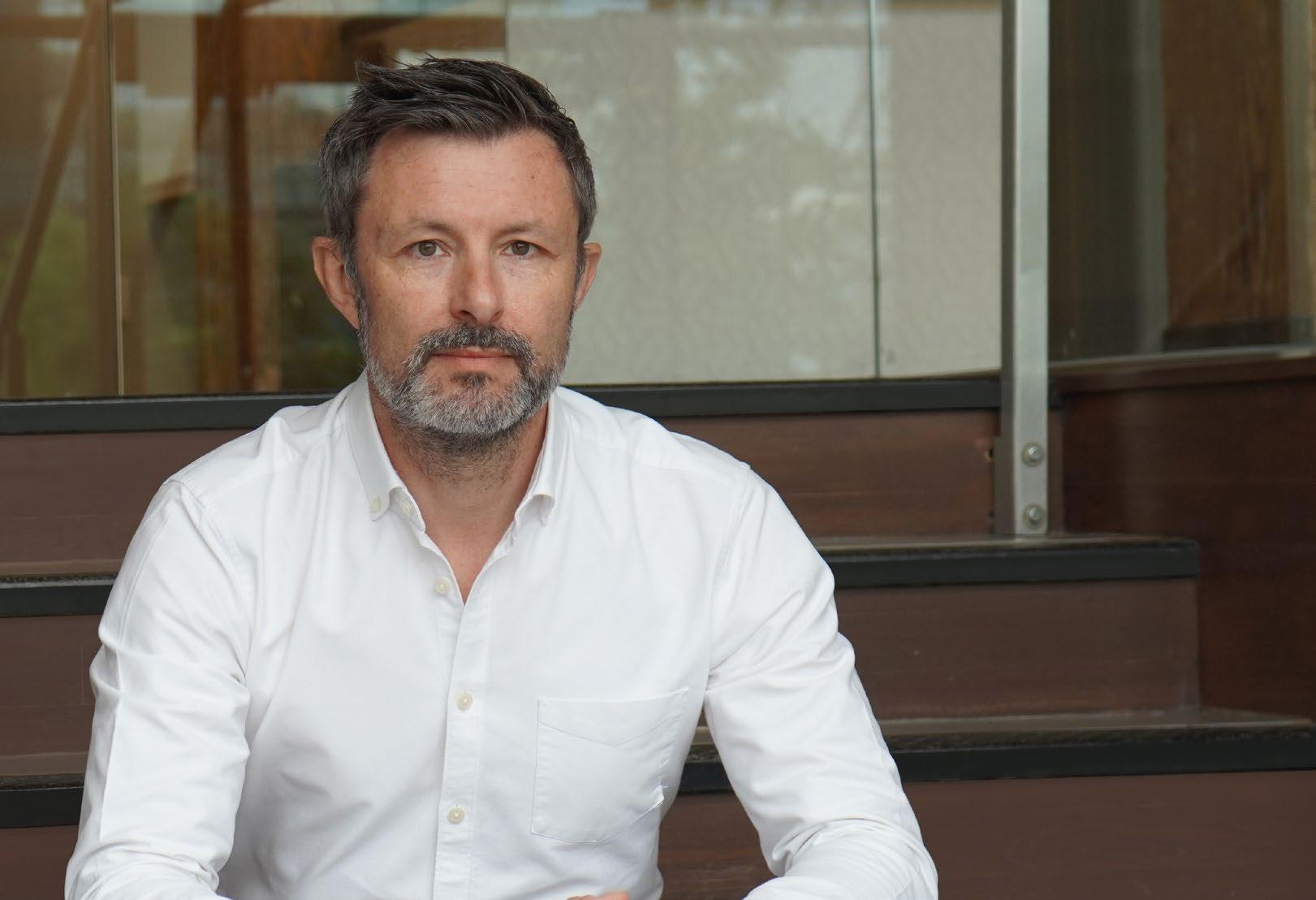
"The decision to go wider on our core offerings brings us to BlueEdge, our suite of solutions that can be custom deployed according to customer needs"
and really supporting utilities across their whole digital journey is what is most exciting for me.
The world of metering has changed beyond recognition in recent years. Driven in large part by today’s meters and the data they provide bring significantly greater value than the simple billing transaction they were first meant for. In the U.S., where advanced metering infrastructure is more widely adopted than in many other places, the advantages that utilities have now compared to only a few short years ago are staggering.
Today Badger Meter brings visibility to our utility customers through a wealth of new measurement devices and platforms to bring that data together. Measuring water consumed is a great starting point but by measuring pressure as well it’s also possible to make sure that hydraulically water is reaching consumers in the right way – hitting the pressure sweet spot is one of those next-generation consumer expectations that utilities should be striving for by now. A bit like measuring heart health, we can’t just measure one or two parameters anymore; we need to look at the whole picture, and that’s why Badger Meter has extended its measurement capabilities to offer utilities a whole picture of what might be happening in their networks — measures like pressure transients, or real-time water quality data that help us diagnose and possibly treat issues before consumers become aware. This is the starting point for the next generation of water supply and one of the key things we as Badger Meter are aiming at supporting utilities to move from reactive to proactive response to
"Badger Meter has extended its measurement capabilities to offer utilities a whole picture of what might be happening in their networks"
"Today Badger Meter brings visibility to our utility customers through new measurement devices and platforms to bring data together"

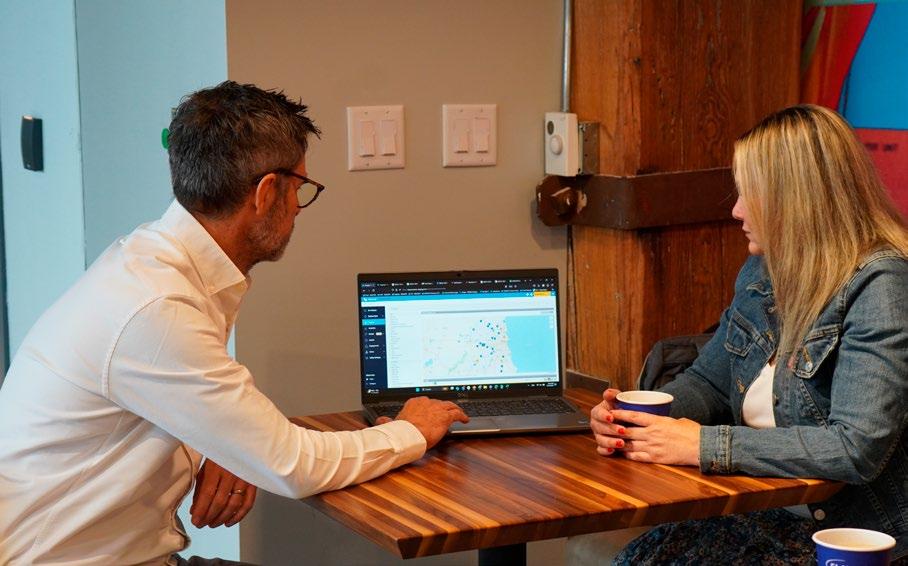
issues and ultimately helping improve consumer satisfaction.
What that might look like is different for each customer. What is the same for all customers, regardless of size or location, is the potential for data to be transformative, if the right solutions are deployed at the right time.
These solutions are not one-size-fitsall. Every utility has its own unique needs and challenges that must be carefully considered when selecting and deploying a smart water solution. Whether your utility serves a few hundred customers or
millions, the BlueEdge suite has a solution that is right for you.
Most advanced utilities these days are perhaps suffering with too much data and not enough knowledge, which can lead to data fatigue. We hope to simplify this process through thoughtful solutions that fit to your exact needs. A big part of what we're delivering through BlueEdge is supporting utilities with managing that quantity of data and going beyond measurement for measurement’s sake by squeezing out insights that are highly valuable for them, keep-

ing in mind the way that they manage their consumers and their operations.
Why is connectivity an important consideration for utility adoption of smart water systems?
Connectivity is key as a utility goes further into its digital journey. It is of no real use to have data that does not connect the dots. When done correctly, this data powers the proactive management of assets, people and processes.
At Badger Meter, our utility customers expect connectivity because they see how the world has moved on with digital connectivity in their own lives. Connection and being able to tie things together electronically or digitally are important for our customers and us. That is why it is a big part of the way we talk about ecosystems rather than individual products.
With BlueEdge and our "Choice Matters" approach, our customers can select the tools that will address their needs to-
day and add to that deployment in the future, knowing that they can expect the same level of connectivity and performance across all our offerings.
How should utilities approach data collection and software selection to make these tools work best for their unique circumstances?
I would urge utilities to assess where they are today, and to look at the kinds of data they are collecting and match that against the problems that they're trying to solve.
So, if we take a utility customer that has issues with water quality, for example – let’s say they experience turbidity issues from time to time - there's a whole set of devices out there that can measure different elements of water quality. But many water quality issues can be difficult to spot or see; or only shown under certain circumstances. More complex issues need a wider view of what’s going on, so looking beyond the problem, in this case,
measuring hydraulic factors, connecting events and being able to see the connection with those events is really powerful. We have one customer in London, England, who is looking at pressure transients and connecting the root cause of these transients with water quality events. Equally, we have a customer in Texas, in the U.S., who is using a full combination of our latest pressure, flow and water quality measurements and using our analytics platforms to solve problems going back many years caused by poor water reticulation. When you have the software components to be able to interpret that data and turn it into actions and insights, that is where the data collection becomes most powerful, and it is something that we're extremely passionate about.
What about connection to consumers?
The relationship between a utility and consumers can be very different in different parts of the world. We tend to see utilities judged on their performance as well as how they respond and react when unexpected things happen. The more a utility can support their customers and be able to communicate with them, even when things go wrong, creates more trust. We look at consumer engagement as a real opportunity for utilities to build a positive relationship with consumers. Our consumer application EyeOnWater® offers the customer a means of understanding their own water use supporting their efforts to manage their water, and to reduce their bill. And then it goes beyond that transaction by providing the consumer with real usage data, along with advice on how to
"Through BlueEdge we support utilities with managing that quantity of data and squeezing out insights that are highly valuable for them"
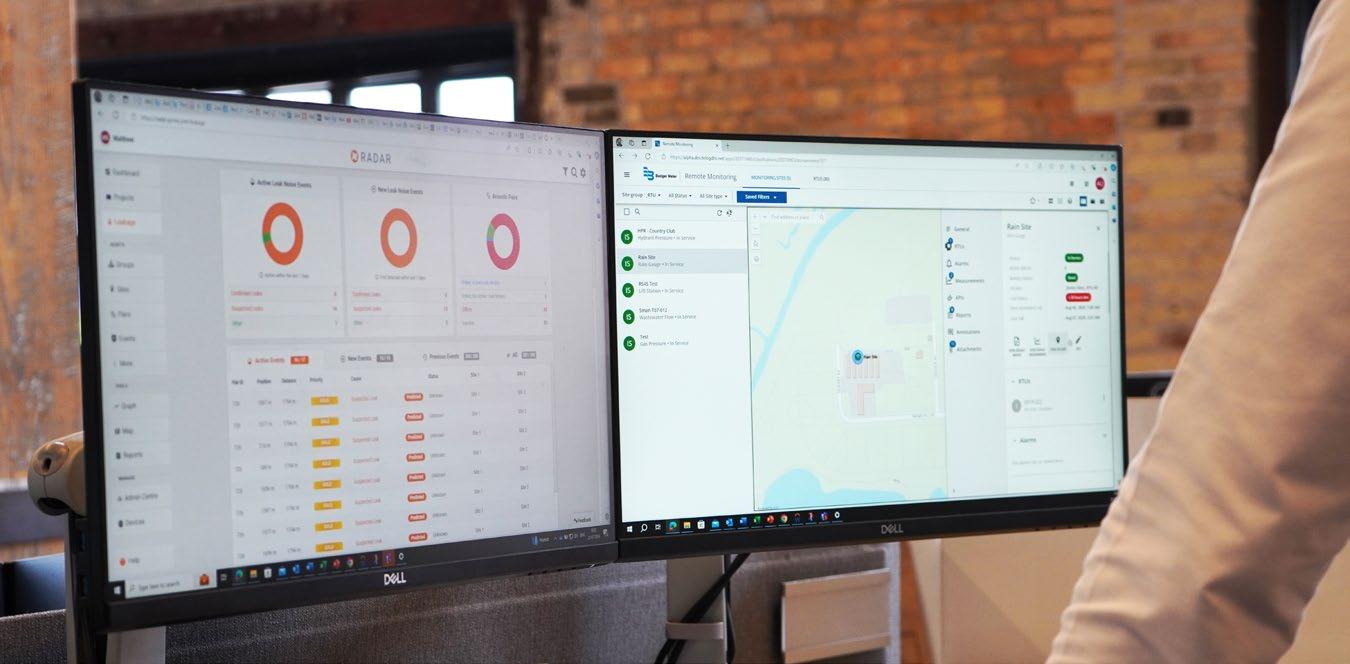
manage their consumption. If the only real connection you have with your utility is via an app, you need to be sure the app is reflecting the image you want your customers to take. We get very positive feedback from consumers who choose to use the app, and that positivity is directed at our customer, the utility. It really is a magical moment when consumers are delighted with their service, and we are proud to support utilities with that.
Likewise, remote meter reading and BEACON®, the software behind it, is such a vital part of the AMI process. If you're trying to get more from your AMI system, you need to have very strong, easy to use, intuitive software behind it in order to get the best value from the investment that you've made. This is where we see so many opportunities. If you think
"Our utility customers absolutely expect connectivity because they see how the world has moved on with digital connectivity in their own life"
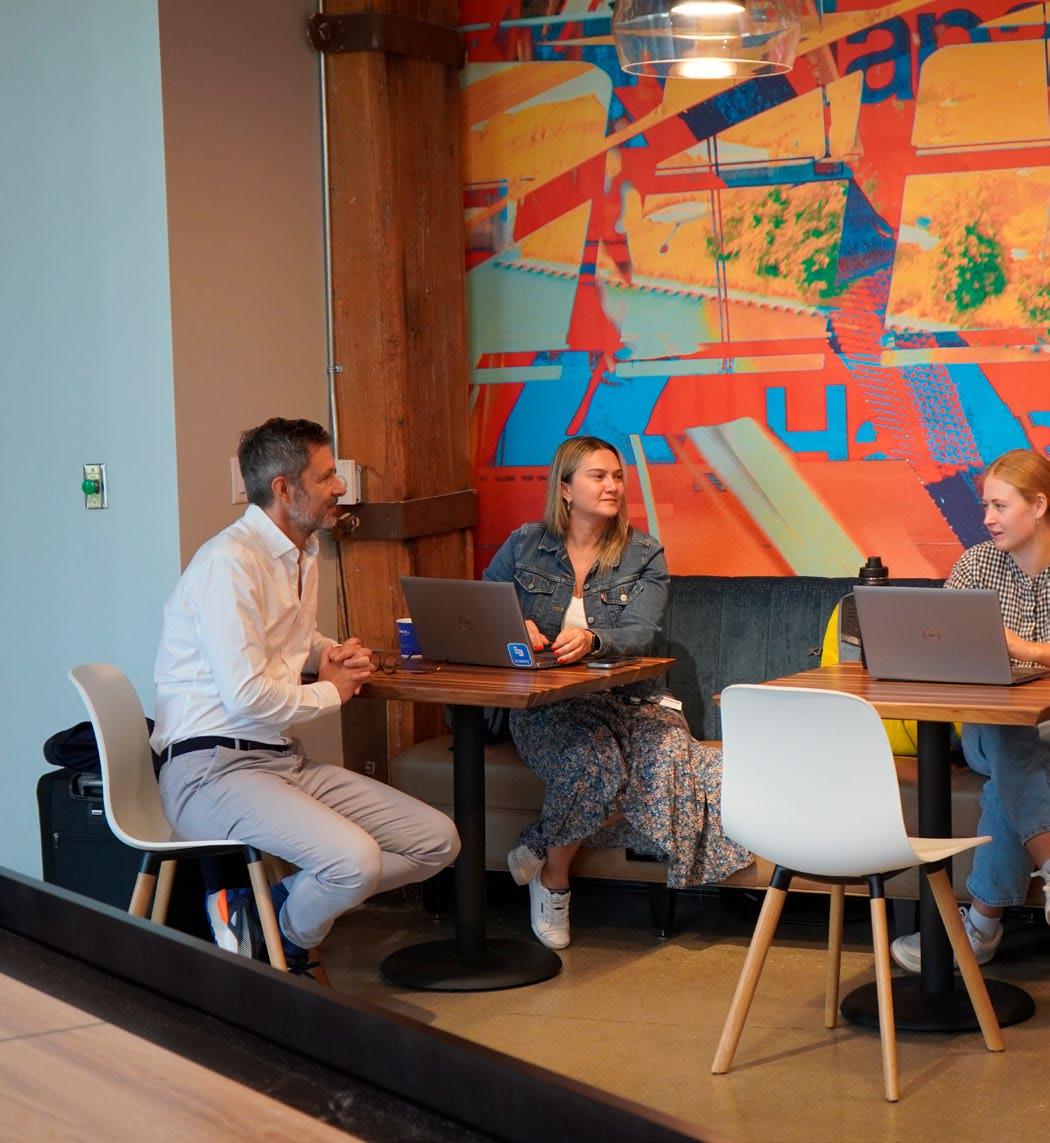
about the quantity of data that's being created, our devices are now producing 15-minute consumption data from every meter, sent four times a day. What you can do and learn from that is a very long way away from an hourly or a daily reading, or even a monthly reading, as was the case only a decade ago.
What we see is that we're scratching the surface of what those opportunities could be and that's where Badger Meter comes in. We recognize the value that information holds to our utility customers is massive, so we’re working with them to unlock that potential. When you've

"With BlueEdge and our 'Choice Matters' approach, customers can select the tools that will address their needs today and add to that in the future"
got such a wealth of data being captured at the very end points of the network, it can deliver new insights into how to operate your utility.
What is the Badger Meter approach to keeping sensitive customer and utility information safe and secure?
It is difficult to emphasize the degree to which security is our number one priority. It is business-critical for Badger Meter, and we take the security of our customer data extremely seriously. We pride ourselves on having the accreditations that prove how seriously we take data security. We are ISO 27001 certified, and we regularly examine our systems against SOC 2 requirements.
We know the risk of data security and the problems that can result from data breaches, so we work very clearly within the different regulations for data security and data management that exist in different regions around the world. There can also be some very specific requirements from country to country and we set ourselves up to support utilities appropriately in the places we operate.
It is not flippant to say that data security and cybersecurity are a number one priority for us. It is certainly my number one priority to make sure that our customers feel comfort in the way that we manage their data, and we take this role very seriously.
How does Badger Meter support utility water customers on their journey to technology adoption?
BlueEdge, our suite of solutions spanning the complete water cycle, represents the stretching of the boundaries of what can be done with utility data. It is exciting to hear some of those customer stories.
Our portfolio features a network of sensors, smart water meters and intelligent infrastructure that provide continuous and historical data to improve system intelligence, visibility, automation and control. With the ability to tailor to a utility’s specific needs, we can introduce solutions now and continue to build upon them in the future for a bespoke deployment.
Above all, it is truly satisfying to see utilities around the world implementing smart water technologies that monitor water quality, find leaks, detect pipe bursts, streamline processes, improve operational efficiencies and conserve water and it is fantastic to see the real benefits that flow through to consumers from all of the efforts that utilities put into delivering their services.
With BlueEdge, achieving excellence in water management is possible. Learn more at https://www.badgermeter.com/ blueedge/.
"The more a utility can support their customers and be able to communicate with them, even when things go wrong, creates more trust"
Z Olivia Tempest
In this interview, we delve into SWPC's primary business objectives, exploring how they align with national goals of water security and sustainability, in line with Saudi Arabia's Vision 2030. The company's initiatives focus on expanding water infrastructure, leveraging public-private partnerships (PPP) to attract substantial private investment, and integrating renewable energy into desalination and reuse operations. SWPC also emphasizes the importance of operational efficiency through advanced technologies and best practices, and fostering comprehensive stakeholder engagement. By sharing its expertise in privatization and collaborating internationally, the Saudi firm aims to contribute significantly to global water management solutions, all while ensuring financial and environmental sustainability.
As a key player in the water sector, what are the primary business objectives that the Saudi Water Partnership Company aims to achieve? How do these objectives align with the broader goals of national water security and sustainability?
The Saudi Water Partnership Company (SWPC) aims to expand the infrastructure for water production and treatment to meet the increasing demand in Saudi Arabia. By fostering Public-Private Partnerships (PPP), SWPC leverages both public and private sector expertise and investment to
The Saudi Water Partnership Company (SWPC) stands as a pivotal entity in Saudi Arabia’s water sector, dedicated to addressing the country's increasing water demands while promoting sustainability and innovation.
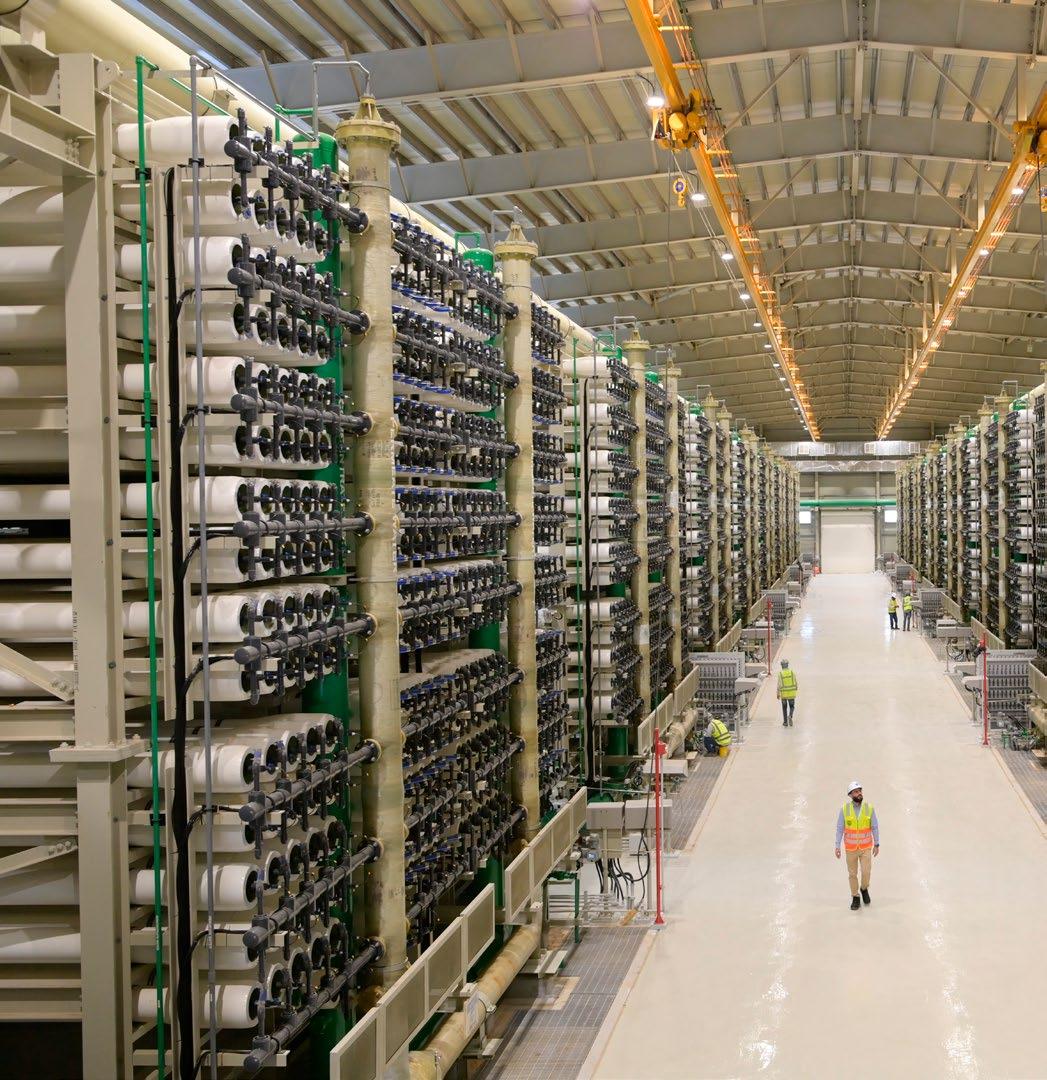
drive efficiency and advancement in the water sector. The company is dedicated to implementing sustainable practices, including the integration of renewable energy in desalination and wastewater treatment processes, to strengthen environmental stewardship. Enhancing operational efficiency through the
"The company is committed to implementing sustainable practices, such as integrating renewable energy in desalination and wastewater treatment"
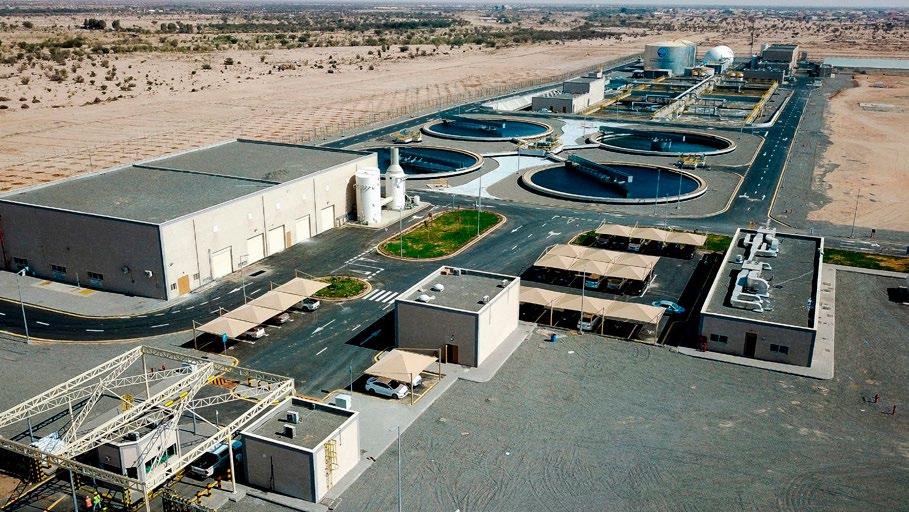

adoption of advanced technologies and industry best practices is also a central focus, reflecting SWPC's commitment to excellence in the water sector.
SWPC focuses on enhancing water management solutions through strategic collaboration with government entities and private sector partners. The company prioritizes the implementation of advanced technologies and best practices to ensure efficiency and reliability across the water sector.
Additionally, SWPC provides consulting services to share its expertise in privatization, helping other entities benefit from its knowledge and experience in the PPP framework. Expanding locally, regionally and internationally, SWPC shares expertise and collaborates on global water projects. Additionally, SWPC emphasizes capacity building by investing in the development of local talent through comprehensive training programs focused on privatization. The company also prioritizes developing local contractors,
ensuring they are well-equipped to participate effectively in water sector projects. These objectives align with national water strategy goals, supporting a reliable water supply and enhancing operational and financial sustainability, in line with Saudi Arabia’s Vision 2030.
Saudi Arabia is the world's largest producer of desalinated water. What innovative approaches has the Saudi Water Partnership Company implemented to maintain its leadership position in this crucial sector?
Saudi Arabia, as the world's largest producer of desalinated water, continues to maintain its leadership position in the sector through the innovative approaches of the Saudi Water Partnership Company (SWPC). SWPC has implemented a range of groundbreaking initiatives. Notably, the company has mandated the use of advanced desalination technologies within a 25-year term agreement under the Build-Own-Operate (BOO) model, achieving the lowest levelized tariff globally for desalinated water at just $0.41 per cubic meter. This has been accomplished through understanding the market and its leading technologies as well as knowing the capabilities of the developers and EPC contractors. Secondly, SWPC has
"SWPC introduced advanced desalination
technologies
with a 25-year
BOO model, achieving the world's lowest levelized tariff at $0.41/m "3
"SWPC is focusing on enhancing the efficiency and sustainability of its operations by leveraging advanced technologies and renewable energy sources"
pioneered the use of Public-Private Partnership (PPP) frameworks, attracting over $12 billion in private sector investments for water and wastewater projects. Additionally, the company has successfully tendered 20 desalination, waste treatment, transmission lines, and strategic reservoir projects, which collectively add over 6 million cubic metres per day through the private sector to the national water supply and offtake from the public sector around 7 million cubic metres per day, the total offtake capacity reaching 13.6 million cubic metres per day. Finally, SWPC’s commitment to sustainability is evident through its efforts to reduce the carbon footprint of private sector operations, incorporating renewable energy sources into these projects, and encouraging energy-efficient technologies. These sustainable approaches ensure that Saudi Arabia remains at the forefront of the global water industry.
There has been a growing emphasis on integrating renewable energy sources
"SWPC has significantly expanded its project portfolio, with 50 projects in various stages of development, amounting to over $30 bn"
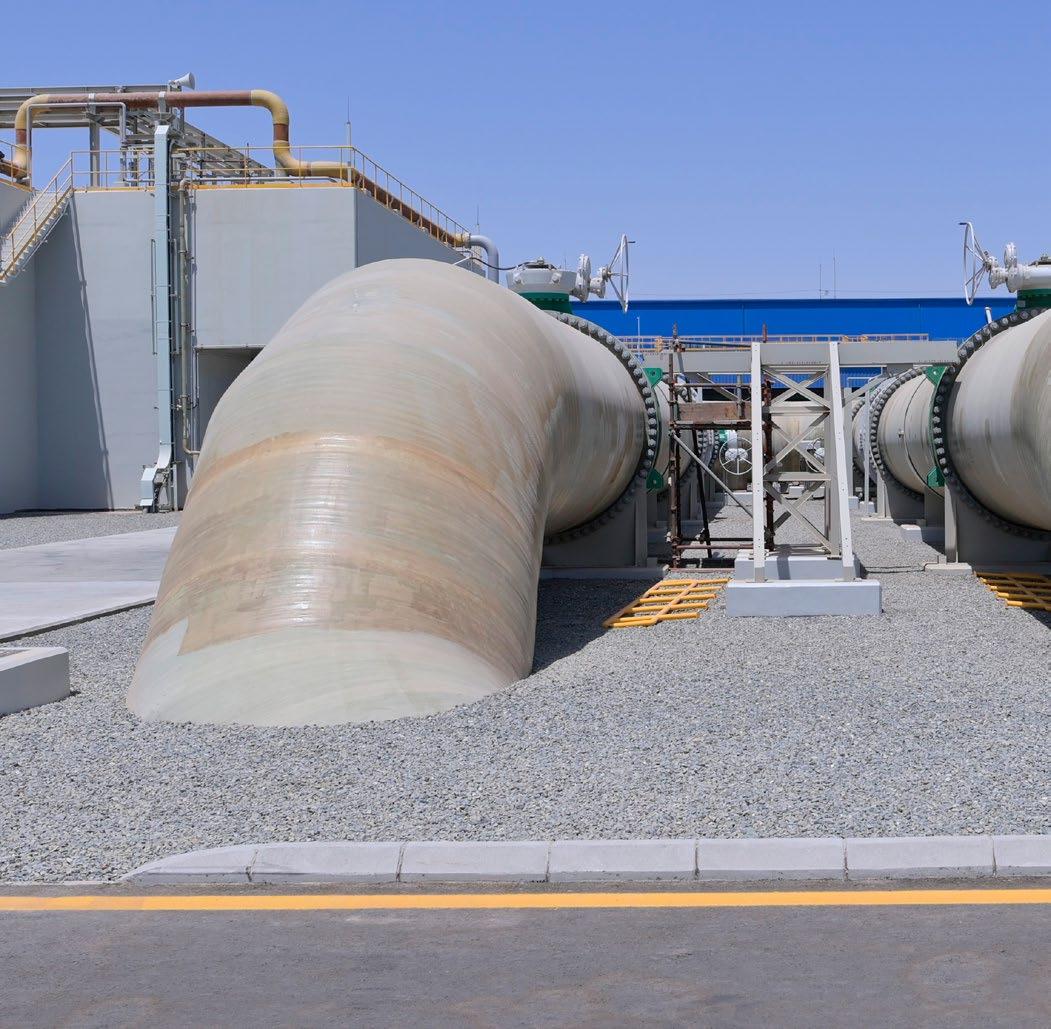
into conventional desalination processes for sustainability and cost-effectiveness. How is the Saudi Water Partnership Company incorporating these technologies into its desalination plants and future projects?
The Saudi Water Partnership Company (SWPC) is at the forefront of integrating renewable energy sources into its desalination processes to enhance sustainability and cost-effectiveness. SWPC has already implemented several initiatives and projects that leverage clean energy to power desalination and sewage treatment plants. For instance, PPP projects have incorporated solar photovoltaic (PV) systems in Jubail 3A, Jubail 3B and Yanbu 4 among other desalination projects un-
der construction, significantly reducing reliance on conventional energy sources. Additionally, the Taif sewage treatment plant is using bio-gas to power part of the plant's operation and three other sewage treatment plants are utilizing solar energy, aiming to diversify their renewable energy portfolio. These efforts contribute to the Saudi Green Initiative's emission reduction goals, which include increasing the share of renewable energy in the national energy mix. By integrating renewable energy technologies, SWPC not only reduces operational costs and carbon emissions but also enhances the sustainability of the water sector, ensuring a reliable and environmentally friendly water supply for the Kingdom.
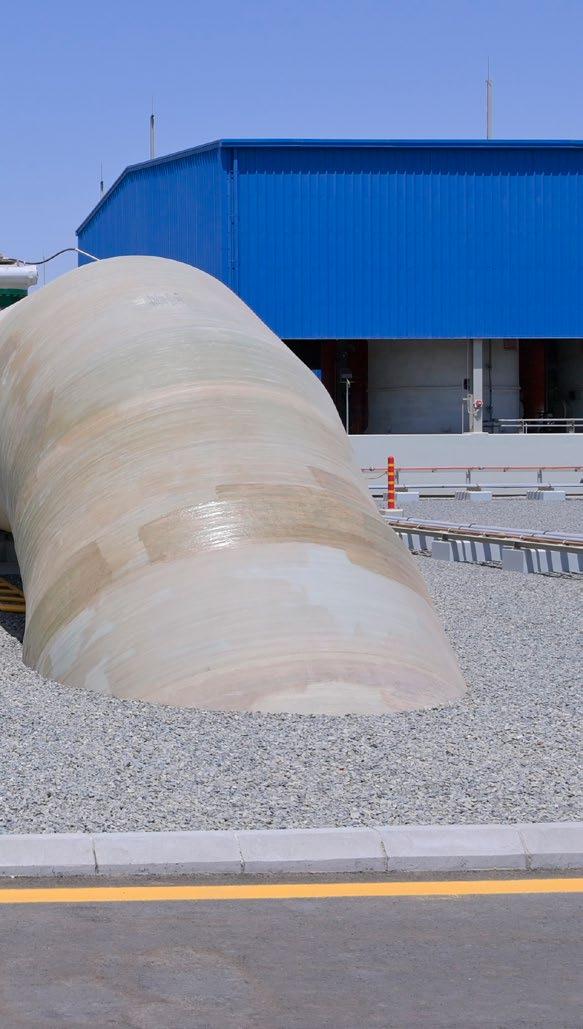
costs in the water sector, significantly contributing to the sector's sustainability. Firstly, SWPC has introduced innovative technologies and modernized existing infrastructure, which has led to more efficient water production and treatment processes. For example, the implementation of advanced desalination technologies has resulted in a notable reduction in energy consumption, cutting costs by approximately 15%. Secondly, SWPC has optimized its operations through strategic public-private partnerships (PPPs), combining its expertise in water management with private sector investment to enhance operational efficiency and cost-effectiveness. This approach has led to the achievement of the lowest levelized tariff for a desalination plant at $0.41 per cubic metre on a 25 year water purchase agreement, setting a new benchmark in the industry. Additionally, SWPC has focused on localizing supply chains and fostering the development of local exper-
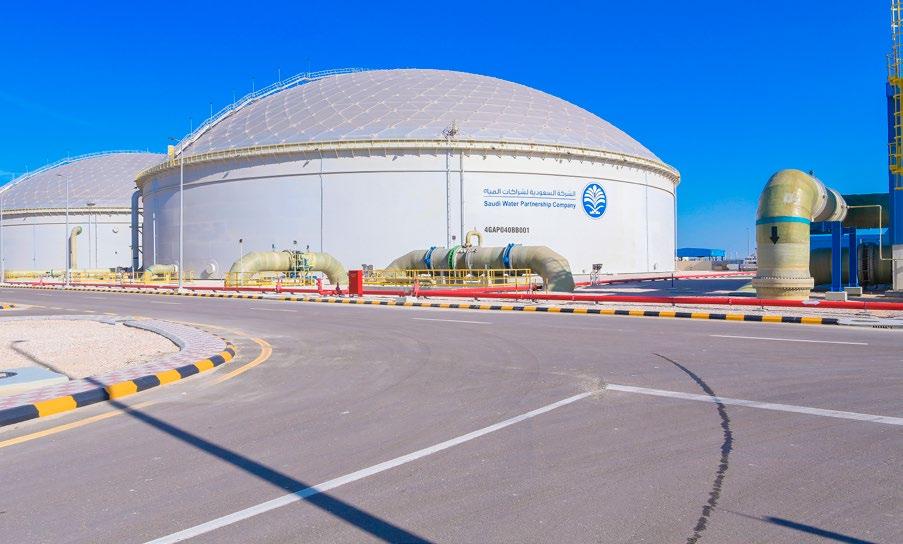
What initiatives has the Saudi Water Partnership Company undertaken to reduce production and treatment costs in the water sector, and how does this contribute to the sector's sustainability?
The Saudi Water Partnership Company (SWPC) has undertaken several key initiatives to reduce production and treatment
tise, reducing reliance on costly imports and creating a sustainable ecosystem of local suppliers and contractors. These initiatives collectively not only reduce operational costs but also ensure the longterm sustainability of the water sector by promoting resource efficiency, economic growth, and environmental stewardship.
What strategic measures is the Saudi Water Partnership Company implementing to achieve the national water demand target of 18 million cubic metres per day by 2030 through PPP model projects?
To achieve the national water demand target of 18 million cubic metres per day by 2030 through PPP model projects, the Saudi Water Partnership Company (SWPC) has a large portfolio of projects to meet the local water demand. SWPC has significantly expanded its project portfolio, with 50 projects by 2031, amounting to a private sector investment estimated above $30 billion. These projects include desalination plants, wastewater treatment facilities, water transmission pipelines and strategic reserves.
With ambitious plans to tender an additional 10 projects within the next 5-6 years, what criteria does the Saudi Water Partnership Company consider when selecting projects, and how does it ensure their alignment with national water demand objectives?
The Saudi Water Partnership Company (SWPC) has set ambitious plans to tender an additional 10 projects within the next 5-6 years, ensuring meeting future national water demand. When selecting projects, SWPC considers several key criteria. First, the project’s potential to meet the growing water demand in various regions is carefully evaluated, ensuring it aligns with the national water strategy and sustainability goals. Second, the technical and financial feasibility of each project is thoroughly assessed to guarantee efficient resource utilization
"SWPC focuses on projects that adopt advanced technologies and strategies to enhance water efficiency and promote sustainable conservation"
and economic viability. Third, SWPC prioritizes projects that incorporate advanced technologies to enhance water efficiency and conservation. Additionally, the alignment with environmental standards and regulations is essential, ensuring minimal ecological impact. To ensure these projects meet national water demand objectives, SWPC collaborates closely with the Ministry of Environment, Water, and Agriculture (MEWA) and other stakeholders, utilizing comprehensive demand forecasting and strategic planning. This collaborative approach ensures that each project contributes to the overall resilience and sustainability of Saudi Arabia's water sector.
Could you give us an indication of the various water projects the Saudi Water Partnership Company is planning to construct in the near future?
The Saudi Water Partnership Company (SWPC) is making a substantial contribution to improving and expanding Saudi Arabia's water infrastructure through a range of upcoming projects.
In the near future, SWPC is planning to undertake the construction of multiple large-scale projects, including the development of two desalination plants with a combined capacity of around 0.9 million cubic metres per day. Additionally, SWPC is set to initiate twelve projects, including Independent Sewage Treatment Plants (ISTP) and Small Sewage Treatment Plants (SSTP), aimed at treating and reusing approximately 0.6 million cubic metres per day of wastewater. These projects are spread across different regions, ensuring a bal-
"SWPC is dedicated to enhancing the water infrastructure in Saudi Arabia through its ambitious plans within the water ecosystem"
"The Saudi Water Partnership Company (SWPC) has set ambitious plans to tender an additional 10 projects within the next 5-6 years"

anced distribution of resources and infrastructure improvements nationwide. To further bolster the Kingdom's water infrastructure, SWPC is also developing 2 Independent Water Transmission Pipelines (IWTP) with a total capacity of 1.3 million cubic meters, and 2 Independent Strategic Water Reservoirs (ISWR) with a combined capacity of 4.9 million cubic meters. In parallel, the company is developing extensive treated sewage effluent (TSE) pipelines to support industrial and agricultural activities, promoting sustainable water reuse practices. SWPC is actively exploring advanced technologies and sustainable practices to enhance
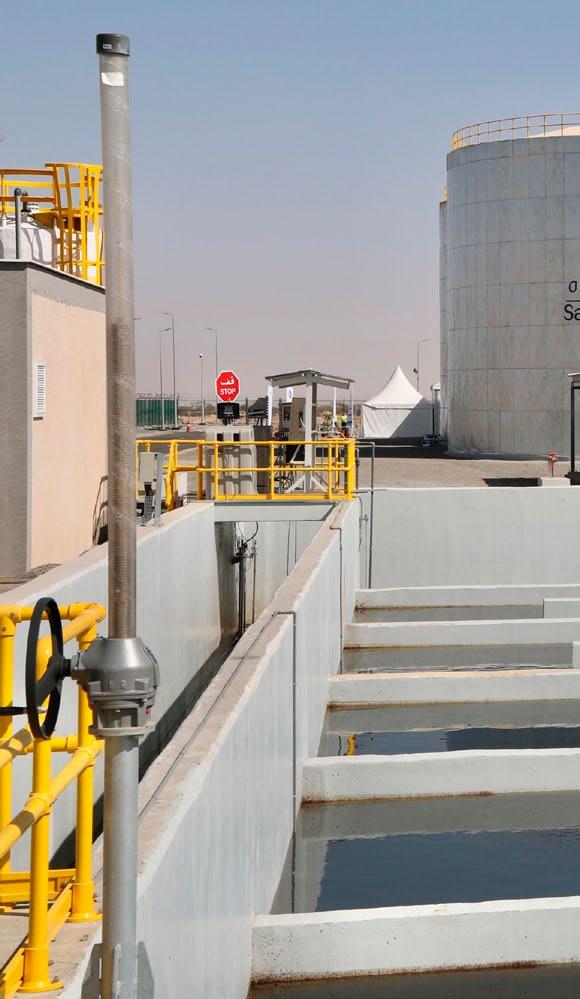
efficiency and reduce environmental impact, reinforcing our commitment to providing reliable and sustainable water solutions for the Kingdom.
With eight water projects currently under construction, how is the Saudi Water Partnership Company supporting developers and EPC contractors to ensure timely delivery, and what challenges are being addressed along the way?
The Saudi Water Partnership Company (SWPC) currently has eight water projects under construction, demonstrating its commitment to enhancing water infrastructure. To support developers and
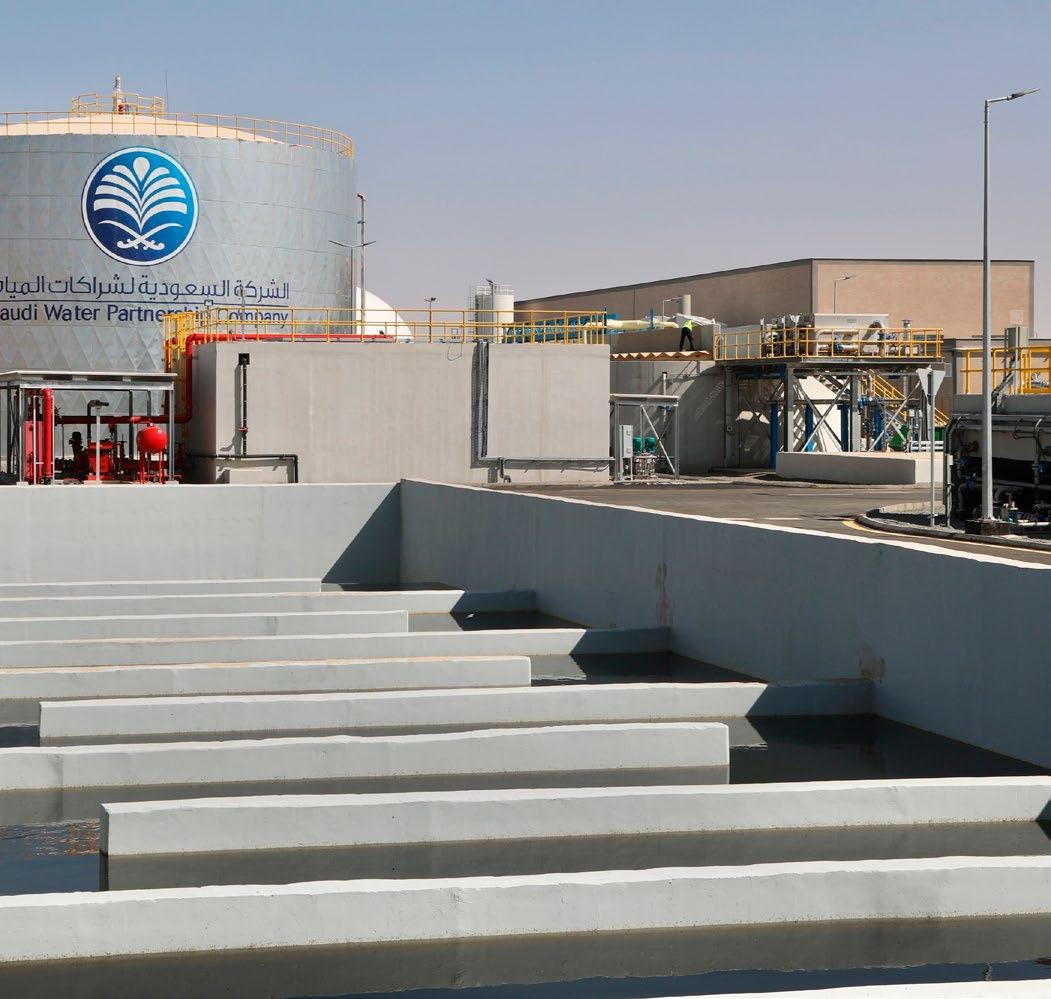
EPC contractors and ensure timely delivery, SWPC provides several key supports. Firstly, SWPC facilitates access to financing by leveraging its strong relationships with financial institutions, thereby reducing financial bottlenecks. Secondly, SWPC offers technical support through regular consultations and workshops to help contractors adhere to the best practices and latest industry standards. Thirdly, SWPC ensures streamlined administrative processes by coordinating closely with relevant governmental bodies to expedite permits and approvals.
A key aspect of SWPC's support strategy is encouraging local content. By enacting local content mandates that require compliance throughout the project’s lifecycle, SWPC aims to achieve a
This not only boosts the local economy but also ensures the development of local expertise and capabilities.
Despite these efforts, challenges persist. One significant challenge is managing the complexity of large-scale projects, which requires meticulous planning and coordination. SWPC addresses this by employing robust project management frameworks and advanced monitoring systems to track progress and promptly address any issues. Another challenge is the fluctuating cost of materials and labour, which SWPC mitigates through strategic procurement practices and maintaining flexible contracts that can adapt to market changes. Additionally, SWPC works
to foster strong communication channels between all stakeholders, ensuring transparency and swift resolution of any disputes. By addressing these challenges head-on, SWPC is paving the way for the successful and timely completion of its water projects, thereby contributing to the sustainable development of Saudi Arabia's water sector.
In what ways does the Saudi Water Partnership Company actively contribute to environmental preservation in its operations and projects?
The Saudi Water Partnership Company (SWPC) actively contributes to environmental preservation through several key initiatives. Firstly, SWPC promotes the use of clean energy in its water projects, with many of its desalination plants powered by solar energy, significantly reducing carbon emissions. Secondly, the company emphasizes water conservation and efficiency, having implemented advanced technologies that have saved millions of litres of water annually. Thirdly, SWPC has undertaken extensive reforestation projects, planting over 50,000 trees around its facilities to enhance biodiversity and combat desertification. Additionally, the company is committed to sustainable wastewater treatment, recycling 95% of wastewater for agricultural and industrial use and achieving sludge dryness levels of up to 90%. Lastly, SWPC actively collaborates with international environmental organizations to adopt best practices and innovative technologies, ensuring its operations align with global sustainability standards.
"SWPC works to foster strong communication channels between all stakeholders, ensuring transparency and swift resolution of any disputes"
Almar Water Solutions, together with Transelec and Antofagasta Minerals, has launched a groundbreaking project to provide a sustainable water supply to the Centinela Mining District in Chile. This initiative, executed under the BOOT (Build, Own, Operate, Transfer) model, involves two key water transport systems: an existing pipeline that is already operational and a new pipeline currently under construction. This dual-pipeline system represents a significant advancement in the realm of industrial water management.
The mining industry in northern Chile faces significant challenges regarding water supply. The arid region, characterized by its scarce freshwater resources, is home to some of the world's largest copper mines. These mining operations require substantial amounts of water for their processes, putting pressure on the limited local water sources. Traditional freshwater sources have become increasingly unsustainable, leading companies to seek alternative solutions to ensure the continuity of their operations while minimizing environmental impact. In addition to the scarcity of water, the mining sector in northern Chile also faces significant environmental and regulatory pressures. The need to balance industrial
Utilizing seawater, the project preserves valuable freshwater resources, ensuring long-term sustainability in this arid region
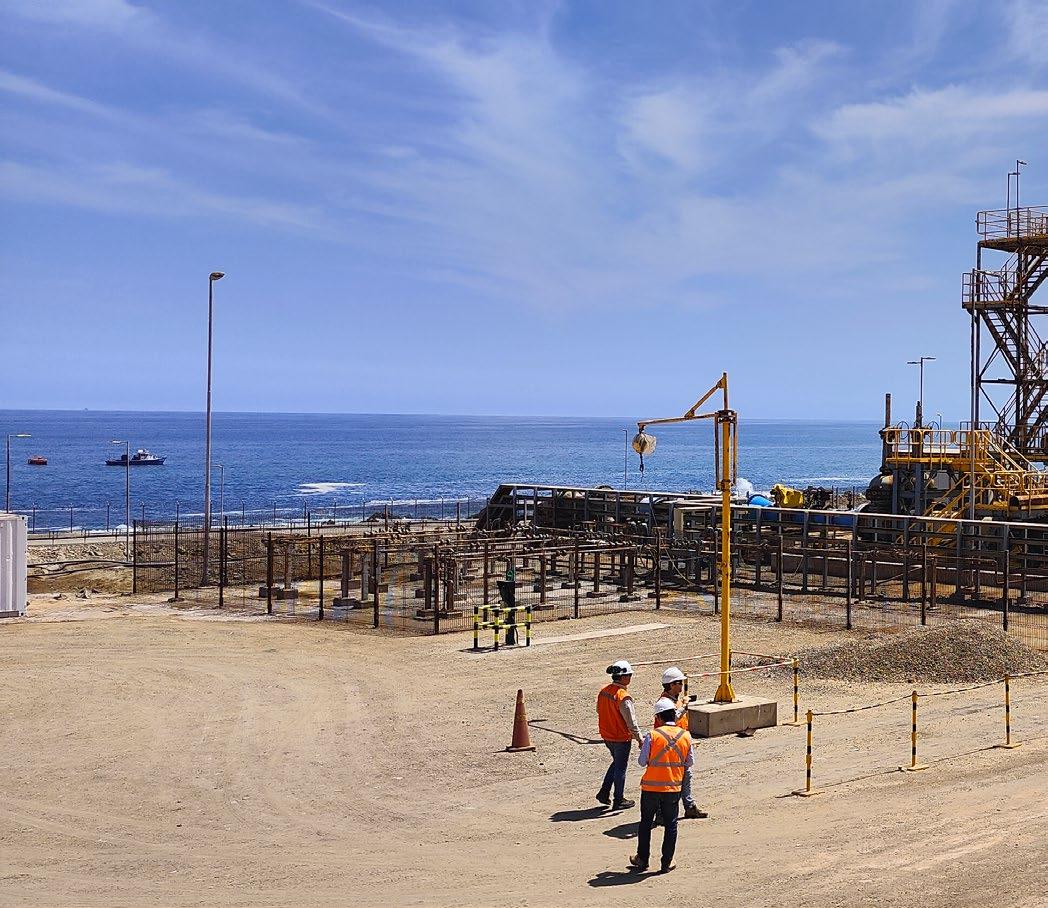
activity with environmental stewardship has driven the industry to adopt more sustainable practices. This includes the utilization of non-conventional water resources, such as seawater, and the implementation of advanced technologies to reduce water consumption and enhance efficiency. The commitment to sustainability is not only a response to regulatory requirements but also a strategic approach to securing the industry's future in a region where water is a precious and limited resource.
In response to these challenges, the Centinela water supply project has been initiated to transport seawater from Michilla Port to the Centinela Mining District. Located approximately 144 km east of the port and at an altitude of 2,220 metres, this mining district is set to benefit immensely from this innovative water supply system. The project employs the BOOT model, ensuring the acquisition
and efficient lifecycle management of existing water infrastructure. This strategic approach not only secures the necessary resources but also promotes sustainable practices within the mining district.
Central to the project's success is the transportation of seawater through two pipelines. The existing pipeline has a capacity of 110,678 cubic metres per day, while a new pipeline under construction will add a further 56,333 cubic metres per day. This dual-pipeline system is designed with the potential for future expansion, which could extend the water supply to other activities within the mine and to surrounding mining operations.
The project utilizes seawater, a renewable resource, thus avoiding the depletion of finite freshwater sources. The water
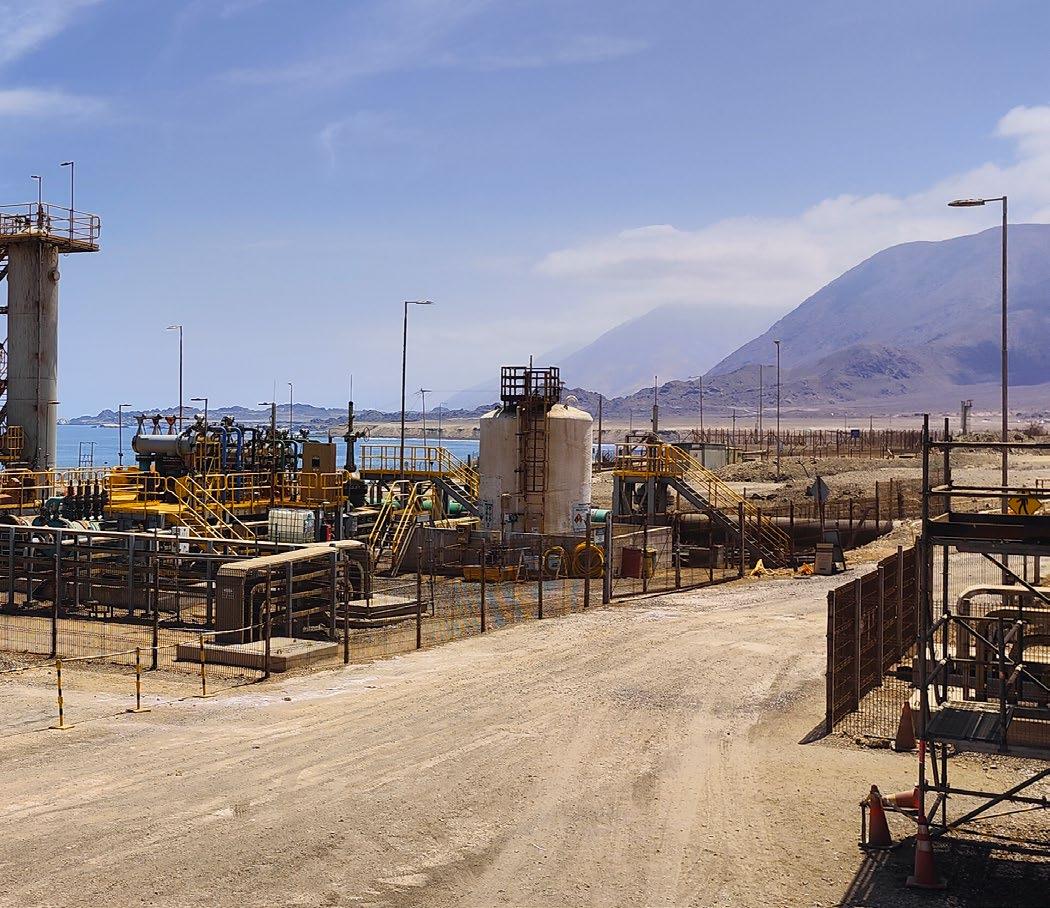
A dual-pipeline system has been designed with the potential for future expansion, which could extend the water supply to other activities
is first extracted and then subjected to a meticulous filtration process using 100-micron filters. To ensure the longevity and efficiency of the infrastructure, chemicals are added to prevent corrosion. The filtered and treated water is then transported through a series of pumping stations — five for the SIAM I pipeline (36''-38'' diameter) and three for the SIAM II pipeline (36'' diameter). This process is purely mechanical, focusing on solid removal, and poses no industrial processing risks.
Furthermore, the project’s transportation system is designed to use exclusively renewable energy sources. This not only reduces the carbon footprint of the operation but also aligns with global trends toward green energy adoption. The focus on energy efficiency is crucial, especially in an era where reducing environmental impact is paramount. In addition, the use of seawater significantly reduces the need for energy and chemicals compared to desalinated or potable water because its filtration process is simpler. Unlike typical desalination or potable water treatment processes, which require coagulation, flocculation, and the addition of various chemicals to improve water quality and turbidity and remove inorganic matter, Centinela only needs to ensure the removal of suspended solids larger than 100 microns through self-cleaning mesh filters. While anticorrosive chemicals are added to prevent pipe corrosion as part of infrastructure maintenance, the overall pretreatment process at Centinela is far simpler and consumes significantly less energy and
fewer chemicals. Moreover, a significant portion of the obtained seawater will be reused, which reduces the risk of environmental contamination.
The Centinela water supply project will contribute to reducing water stress in this area of the Atacama Desert, which is one of the driest places on Earth, according to the World Resources Institute’s Aqueduct Water Risk Atlas. By using and transporting seawater instead of inland water for mining tasks, the project significantly alleviates local freshwater demands.
This project has raised USD 1.285 billion in debt, reflecting substantial interest from lenders. This financial backing is attributed to the robust sponsorship, the client's solvency, and the expertise of the operators and advisors involved. Notably, the project has been classified as "Green Finance" due to its sustainable approach.
From an economic perspective, the project is expected to yield significant cost savings. Through the adoption of preventive and predictive maintenance
The transportation system will use exclusively renewable energy for its operations, further solidifying its commitment to sustainability

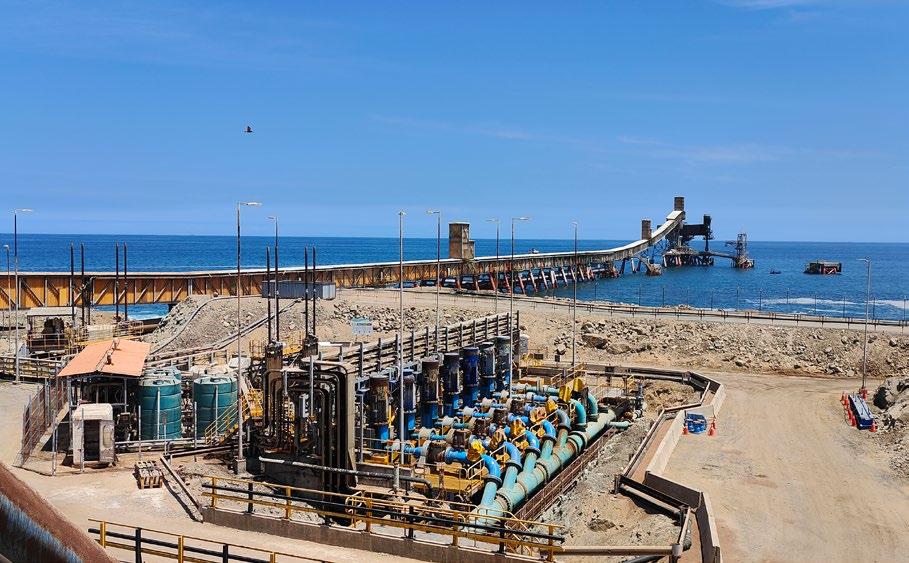
models, Almar Water Solutions estimates a reduction in costs by approximately USD 300 million over the 16-year concession period. This approach minimizes the need for corrective interventions, thereby enhancing operational efficiency. The project's BOOT model ensures that Centinela Mining can rely on ex-
pert management of its water infrastructure, allowing it to remain dedicated to its primary operations.
Besides the acquisition of SIAM I, other resources are freed up from the client's balance sheet, allowing them to undertake the expansion of the mining operation and providing the client the
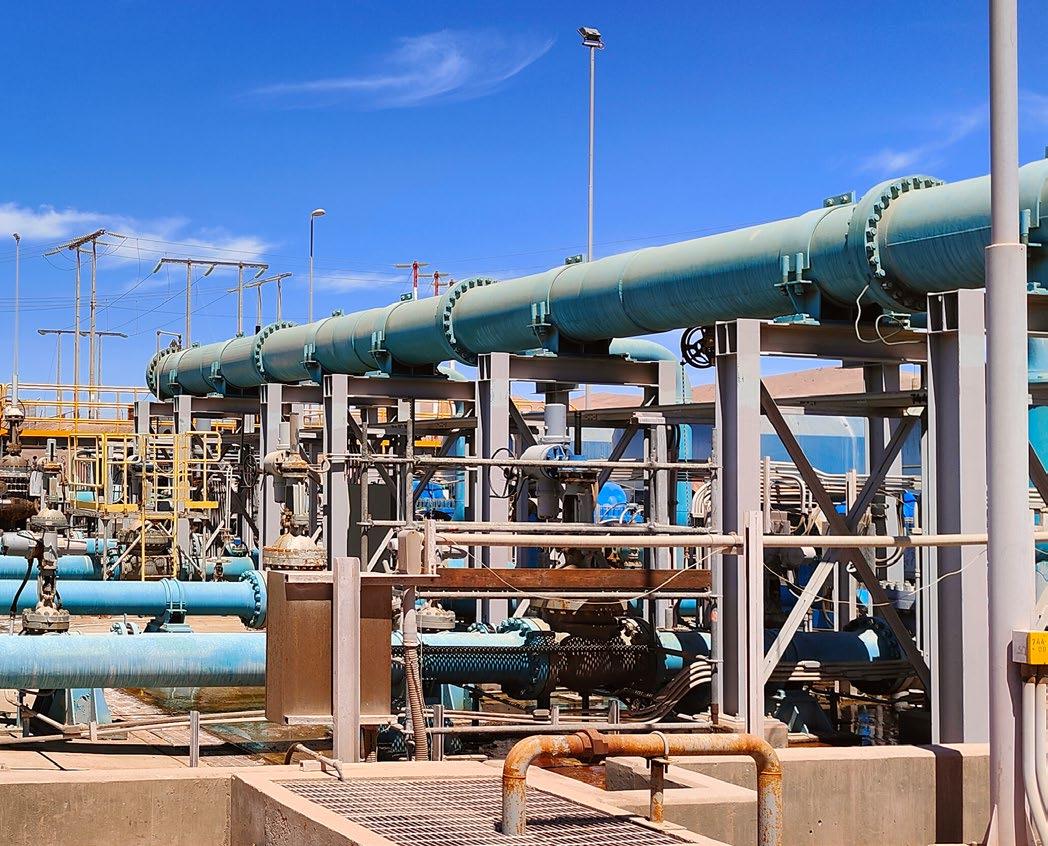
opportunity to concentrate on strategic growth areas.
The second pipeline, currently under construction, will begin operations in 2026, following a 20-month construction process. This phase will employ around 1,500 local people, boosting the regional economy and providing significant employment opportunities. The water system operation will be managed by the Aguas Norte y Desarrollo (Nordes) consortium, comprised of Almar Water Services Latam and Transelec.
The Centinela project exemplifies effective collaboration between industry leaders. Partnering with Antofagasta Minerals, one of the world’s largest copper producers, and Transelec, a leader in power transmission, Almar Water Solutions has leveraged the expertise and resources of its partners to achieve
project success. This partnership model not only enhances project efficiency but also sets a benchmark for future industry collaborations.
Risk management is a critical aspect of the project. Almar Water Solutions employs a B2B (Back-to-Back) model, which distributes risks between the project company (SPV) and the EPC and O&M contractors. This approach ensures that the SPV is shielded from certain risks, thereby securing the project's timely and efficient execution.
The environmental benefits of this project are manifold. As previously mentioned, by utilizing seawater, the project preserves valuable freshwater resources, which is critical in arid regions. Additionally, the design and implementation of the project adhere to rigorous environmental standards, ensuring minimal ecological impact.
The transportation system will use exclusively renewable energy for its operations, further solidifying its commitment to sustainability. The project company has placed significant importance on obtaining all necessary environmental permits, with a dedicated team of three management personnel overseeing this aspect.
Almar Water Solutions' dedication to sustainability is at the heart of the Centinela project. The use of seawater, combined with advanced filtration and corrosion prevention techniques, underscores a commitment to preserving natural resources. Furthermore, the project's classification as "Green Finance" highlights its alignment with global sustainability standards.
The Centinela water supply project marks a significant milestone in sustainable water management for the mining industry. By leveraging advanced technology and innovative solutions, the project addresses the complex water challenges faced by the Centinela Mining District. Almar Water Solutions continues demonstrating its leadership in the global water services market, setting new benchmarks for sustainability and operational excellence.
Almar Water Solutions already operates in four of the five continents, with regional platforms in Europe, Latin America, Asia Pacific, and the Middle East and North Africa. Almar Water Solutions develops innovative models to pioneer water infrastructure projects that cater to the specific needs of its clients, reinforcing its position as a global leader in the water industry.
Advanced technology and innovative solutions are used to address the complex water challenges faced by the Centinela Mining District
GEIR NORDEN - R&D EXPERT FOR FILTRALITE INSIDE LECA INTERNATIONAL, PART OF SAINT-GOBAIN GROUP
Water pollution is an increasingly urgent issue worldwide. Filtralite’s high-porosity filter media can retain more contaminants, allowing for greater water filtration efficiency. Geir Norden, R&D Expert at Filtralite, discusses how this innovative technology is enhancing water treatment, and supporting sustainable water management.
Water pollution is a growing global concern, driven by factors such as rapid urbanization and agricultural intensification. In many regions, water utilities face the challenging and resource-intensive task of treating and purifying contaminated water, which can be costly. Filtralite, with its unique porosity, provides a solution by retaining and absorbing more contaminants, enabling larger volumes of water to be filtered through the same filter volume. Geir Norden, Research and Development Expert at Filtralite, discussed with SWM the advantages and innovative technology behind this forward-looking filter media.
Can you describe your career, your current role, and your level of involvement with Filtralite?
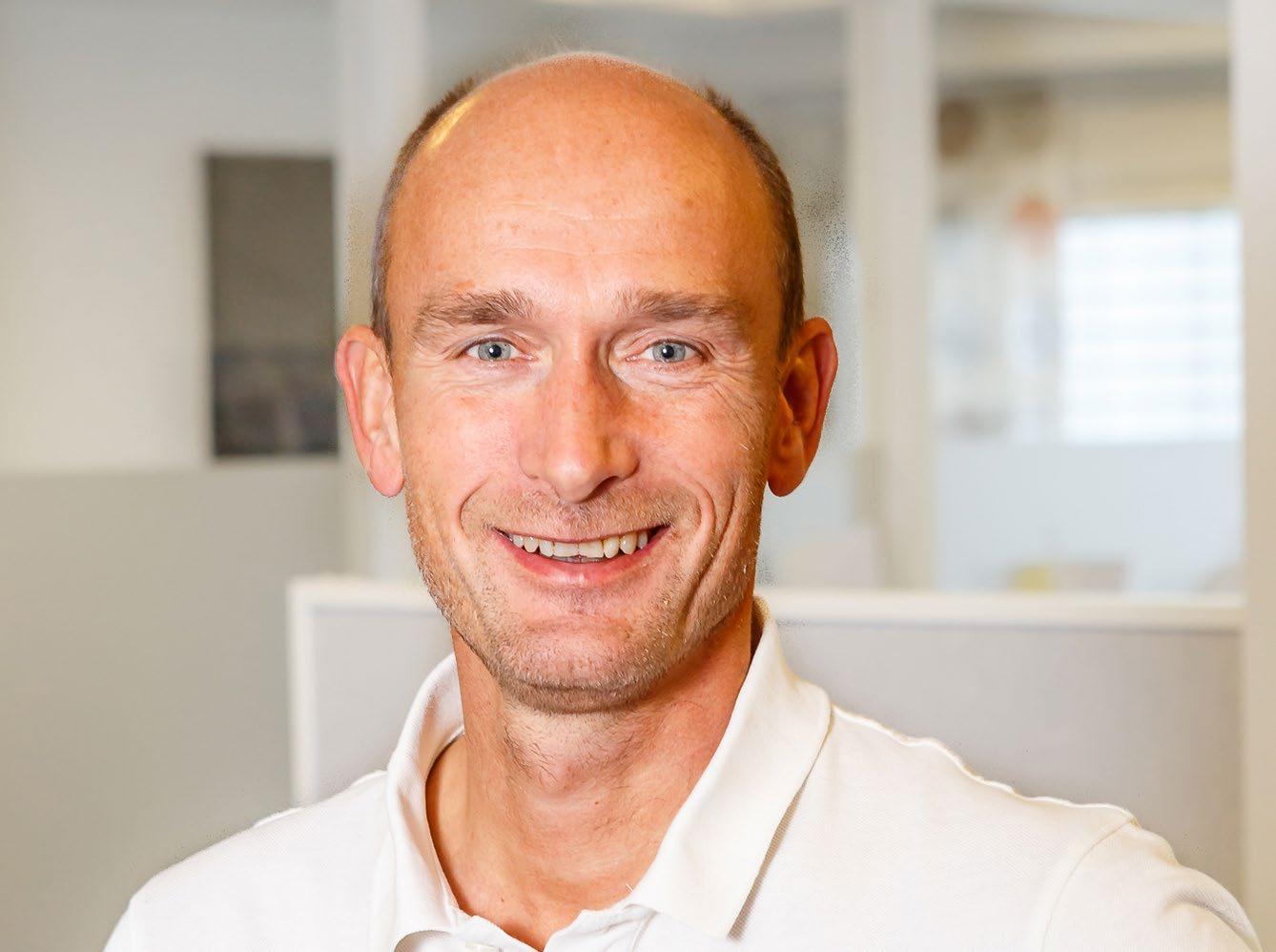
I am from Norway and began working for Leca, Europe's leading company in expanded clay, in 1995, coinciding with the initial application of Filtralite. Throughout my career, I have been responsible for R&D and have been deeply involved in the ongoing development of Filtralite.
What is Filtralite’s position within the Saint-Gobain Group?
Saint-Gobain Group is a leading company in building materials, with a strong focus on high-performance products that provide our customers with comfort and security. Filtralite aligns perfectly with this mission. As a high-quality filter media, it is engineered to reduce operational costs in the filtration process and is built to last.
How does your team ensure that its innovations meet the needs of the market and consumers?
Filtralite offers a range of solutions for water treatment, including Filtralite Pure, Filtralite Clean, and Filtralite Air. These diverse products enable us to work with drinking water globally, meeting all necessary certifications, as well as with wastewater and even air filtration.
Our sales team is continuously expanding their knowledge of different markets and enhancing their expertise to anticipate future needs. We strive to tailor our solutions as closely as possible to the specific requirements of our customers. For example, challenges vary by country — some need to enhance water quality, while others focus on increasing water production. A common goal among many is reducing water consumption.
What are the biggest challenges you face when developing new products or technologies?
The biggest challenge we face in developing new products is that we export Filtralite worldwide, including to Australia, South America, and South Korea, where there are diverse methods for treating
"We strive to tailor our solutions to the specific requirements of our customers, whether to enhance water quality, or increase water production"
both drinking water and wastewater. To address this, we have developed different filter material particle densities and sizes in our products to accommodate a wide range of filtration processes. This flexibility allows us to effectively filter various types of water and tackle many forms of water pollution.
How do you manage collaboration with external partners, such as universities or other companies, on R&D projects?
We have significant collaborations with external partners. Firstly, we are working with other companies to test our products beyond our production site. Additionally, many of our customers conduct their own internal testing in their laboratories, and we are proud to have results from partners like Suez, Aqualia, and Saur. Finally, we are collaborating with universities to support PhD students in researching filtration media and methods to reduce energy consumption during the filtration process. These studies are available directly on Filtralite's website, www.filtralite.com.
What types of pollutants do Filtralite’s solutions remove and how effectively?
Filtralite® Filter media is a lightweight filter media used for both physical and biological water filtration, similar to traditional sand filters. While the filter setup and processes are alike, Filtralite offers significant advantages in filter output. It provides the same treatment process as sand but consistently outperforms it in water quality, filtration velocity – which
can be improved by 50% – and head loss across all projects. Filtralite achieves better filtration performance, with extended durations between backwashes, up to 8 times more than sand. Additionally, our media is effective in removing iron, manganese, ammonia, TOC, arsenic, and more. In the plant of Jäniksenlinna, close to Helsinki, sand has been replaced by Filtralite; the performances are similar on iron and manganese removal, but the filters are backwashing every week and not every two days.
Demographic pressure increases the use of chemicals to remove pollutants such as ammonium. We had a project in the Philippines, some years ago, where the drinking water plant of Putatán II, close to Manilla, had issues with ammonium. After doing some tests with Filtralite, they changed their process from chlorination to aerated biofiltration. Due to the concentration, they would have needed 15 tonnes of chemicals every day. Such a quantity brings high costs for the plant and makes it difficult to manage such a product. Filtralite reached the same expected level of ammonium without chemicals. The transition from a chemical approach to a biological ap-
"Many of our customers conduct their own internal testing, and we are proud to have results from partners like Suez, Aqualia, and Saur"
"Filtralite
provides the same treatment process as sand but consistently outperforms it in water quality, filtration velocity, and head loss"
proach enables a massive reduction in operation costs and decreases the impact of chemicals on the natural environment.
What benefits does Filtralite offer water utilities compared to other companies in the market?
Our media offers higher porosity, around 61% of voids, which enhances its ability to capture and retain more suspended solids in the water, and promotes greater bacterial activity per volume of filter media. In contrast, sand is characterized by its rounder shape and smoother surface, which results in lower porosity and reduced water cleaning efficiency. Simply put, sand cannot capture all the residues present in the water as well. As a result, our filter media requires less frequent backwashing, leading to fewer filter stops and significant savings in both water and energy used for this process. Additionally, our media allows for the filtration of more water in the same amount of time, providing our clients the option to deliver more water or reduce operational costs by using fewer filters.
How do you integrate environmental and ethical considerations into your R&D activities?
"In
desalination plants, Filtralite extends the lifespan of RO membranes and allows for higher levels of suspended solids in the inlet water"
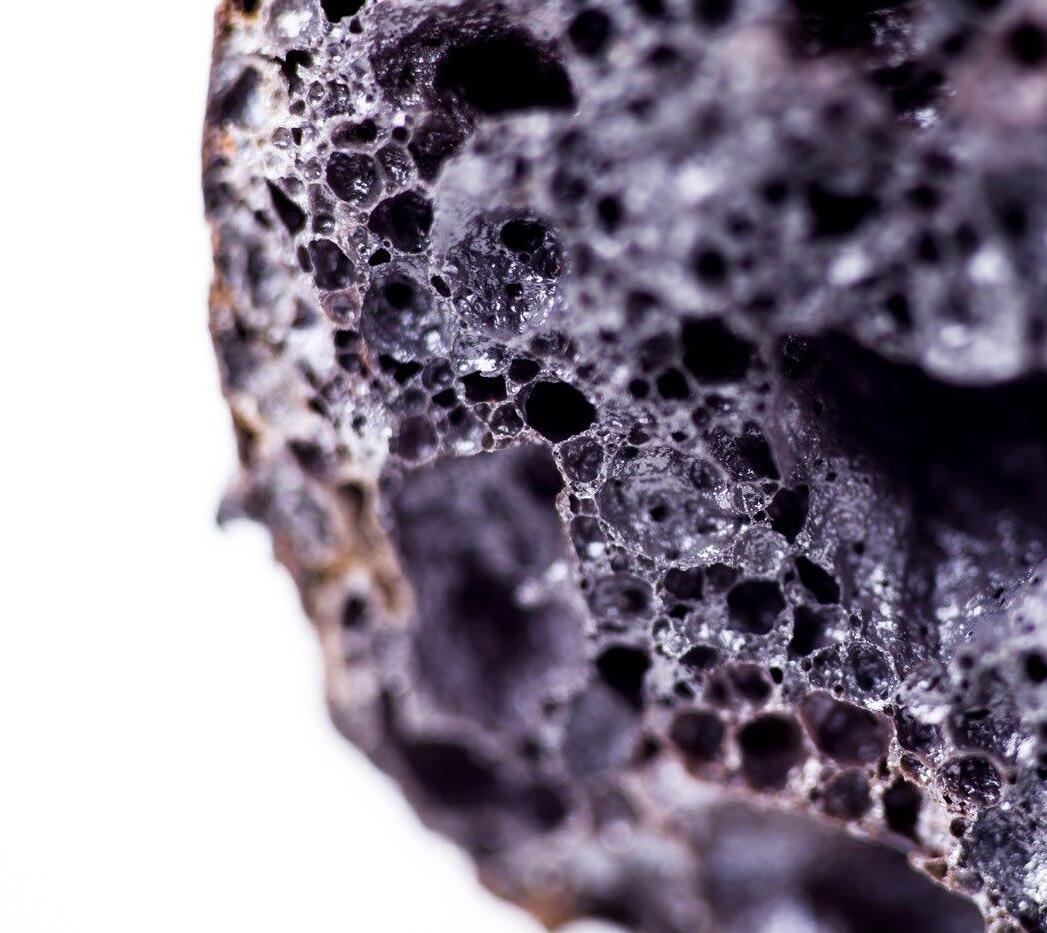
Saint-Gobain Group’s strategy involves considering a CO2 price for each project. This approach drives us to find innovative solutions to reduce CO2 emissions at every stage, from production to transport. In production, we're making strides by replacing coal with biomass, reducing CO2 emissions by 50%. For transport, we prioritize intermodal options whenever possible, reducing reliance on lorries by using boats and trains, which have lower CO2 emissions. Additionally, the lightweight nature of our media allows for larger volumes per lorry, further decreasing CO2 emissions during transport.
Our product not only reduces water consumption and the energy required to move that water, but also enhances plant performance, enabling smaller plant sizes and lower capital expenditures, which in turn reduces CO2 emissions. We are
committed to maintaining this sustainability mindset throughout the entire lifecycle of our product.
Where in the world is Filtralite active?
Could you tell us a bit about the projects you are working on?
As I mentioned earlier, we distribute Filtralite worldwide, and we're proud to produce a product that meets global needs. We have a presence on every continent except Antarctica.
We've also achieved excellent results with desalination plants. Filtralite extends the lifespan of membranes in the reverse osmosis process and allows for higher levels of suspended solids in the inlet water, enabling the plant to continue producing water even during heavy rainfall. We have been part of a project for some years in Beni Saf, in Algeria. In

"Compared to sand, our filter media requires less frequent backwashing, leading to fewer filter stops and significant savings in water and energy"
cost of backwashes by 3 to 4. As I mentioned previously, all suspended solids are caught during the filtration cycle to preserve the same filtration capacities for the next round.
their process, the plant stopped production when the suspended solids rate was over 25 mg/l with sand in the inlet water. Since they installed Filtralite, they can produce even when the suspended solids rate is up to 40 mg/l. They even managed to continue the production, partially, with 70 mg/l of suspended solids in the inlet water. For the plant manager, the improvement is massive as they are not forced to stop production.
Population growth, strict water treatment regulations and the growing demand for new water resources are some of the factors driving the water and wastewater treatment market’s growth. How do you see the water and wastewater sector evolving in the next decade? Rapid urbanization heightens the need to enhance the production capacity of exist-
ing water treatment plants within cities. Filtralite can increase filtration rates and reduce the necessity to build new facilities. In many regions around the world, where water scarcity makes every drop precious, Filtralite plays a crucial role in conserving this vital resource.
The growing demand for food pushes farmers to use more fertilizers which end up often in the water. Filtralite has good results in removing phosphorus. In the wastewater plant of Kakolanmäki, in Finland, close to Turku, Filtralite removes 50% of the total phosphorus and more than 80% of nitrogen pollution in the water. Furthermore, the backwashing efficiently remove all particles caught in Filtralite’s voids.
A large portion of operating costs for drinking water systems can be for energy. How can Filtralite contribute to energy savings?
Our solution requires significantly less backwashing, a process that involves rinsing the filter media with air and/or water, which typically consumes substantial water and energy. By drastically reducing the frequency of this operation, we minimize the water and energy needed for pumping and water disposal. Due to the porosity, we are holding back between 3 and 4 times more suspended solids, so we are decreasing every year the
Additionally, our media allows for a higher volume of water to be filtered, further reducing energy consumption over the same period. This solution has resulted in a 100% satisfaction rate among our customers; no one has ever expressed a desire to revert to their previous solution after using our product. Furthermore, the average Return on Investment is under three years — sometimes even just a few months — while the material itself has a lifespan exceeding 20 years.
How can Filtralite help reduce the carbon footprint of water treatment?
Filtralite can significantly reduce the carbon footprint of both new and existing water treatment plants. The use of Filtralite® Filter media requires less energy to process the same amount of water. For new plants, this allows for a design with a smaller overall footprint. Currently, the main cost associated with water prices is the energy required for production and distribution. Especially in this period of energy market uncertainty, we're proud to offer a solution that consumes less energy. In many countries, where energy is still largely generated from fossil fuels, this translates to a reduced carbon footprint for water treatment plants. Additionally, our media enables higher filtration speeds, allowing designers to build fewer filters, thereby reducing the need for concrete, equipment, and other resources.
"Filtralite
has resulted in a 100% satisfaction rate among our customers; no one has ever expressed a desire to revert to their previous solution"
Leaks in water transport networks: the "middle child" of non-revenue water (NRW)
Water losses in transport networks are often overlooked within the larger family of NRW, mainly due to the difficulty of accurately locating leaks. Conventional methods like loggers, geophones, and correlators do not work well in these cases due to the greater distance between access points and the depth at which they are typically installed. These pipes have also frequently received much less attention from the digitalisation standpoint than the distribution networks. However, in terms of lost flow rates or impact on pipeline integrity, transport leaks can be a major issue. Consider, for example, that transport networks often have large leaks that go unnoticed for long periods, like the one in Image 1, with a loss rate of 25 l/s, or about 788,000 m³/year — a significant amount, especially in areas under water stress or drought conditions.
Various reasons contribute to why these leaks are not systematically investigated or repaired by some utilities. As with most leakage issues, the fact that they are not visible and that network inefficiencies are already embedded in
Some countries like the UK have established penalties for utilities that exceed certain levels of NRW, with thresholds typically around 10%
In terms of lost flow rates or impact on pipeline integrity, transport leaks can be a major issue. While it remains unresolved, it presents an opportunity for large industrial water consumers seeking to compensate for their environmental impact.
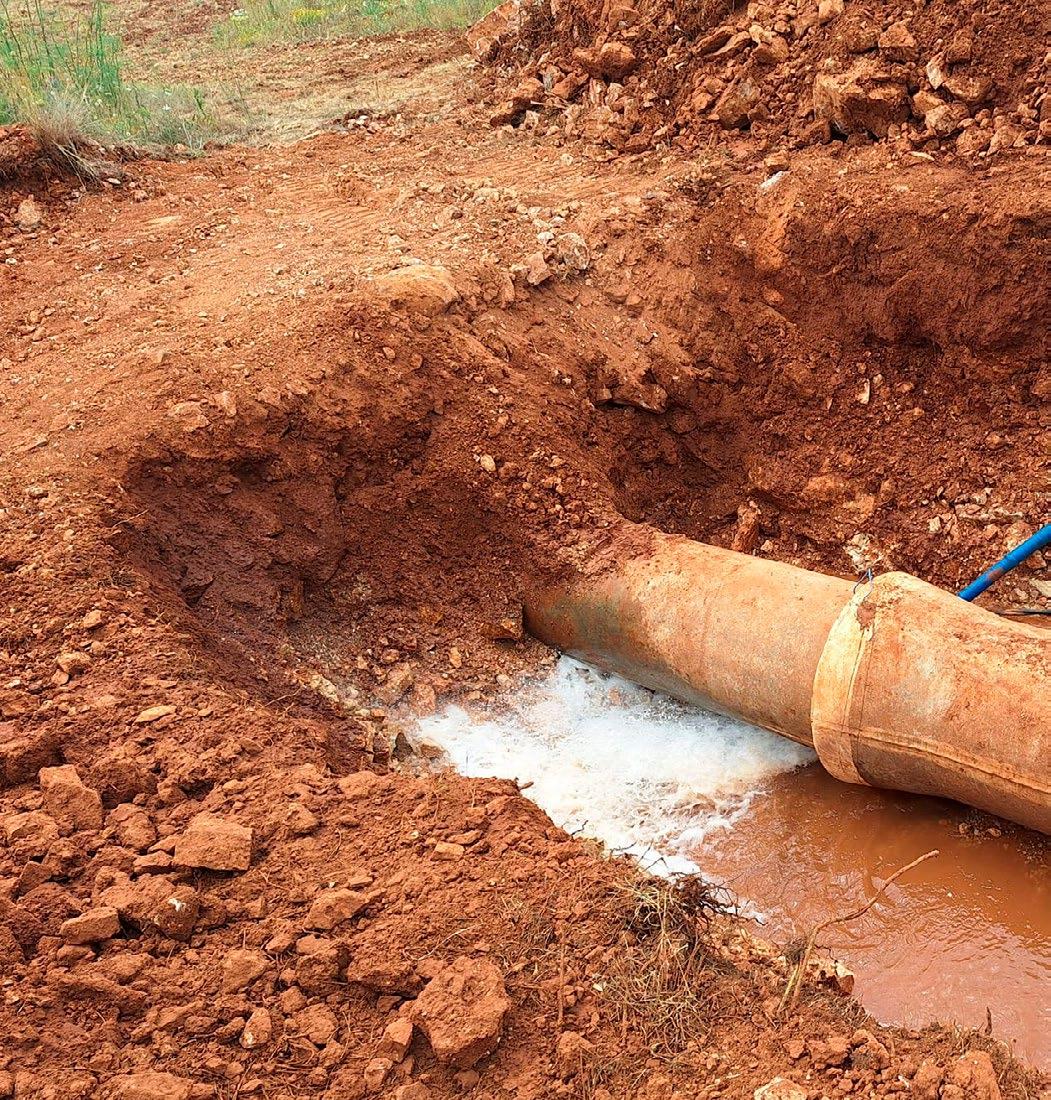
operational budgets means there is little motivation among operators for their control. The lack of standard methodologies and knowledge of using in-line technologies also contributes to this situation. However, the hidden costs and risks of these leaks add an extra burden on public finances, water reserves, and CO2 emissions. For example, using an average of 0.5 kg CO2/kWh and 1 kWh/m³, about 0.5 kg CO2 is emitted per m³ of water lost in leaks. A single transport leak, like the one in Image 1, with a flow of 25 l/s, would result in an unnecessary excess of 394 tCO2/year in emissions. Imagine how many such
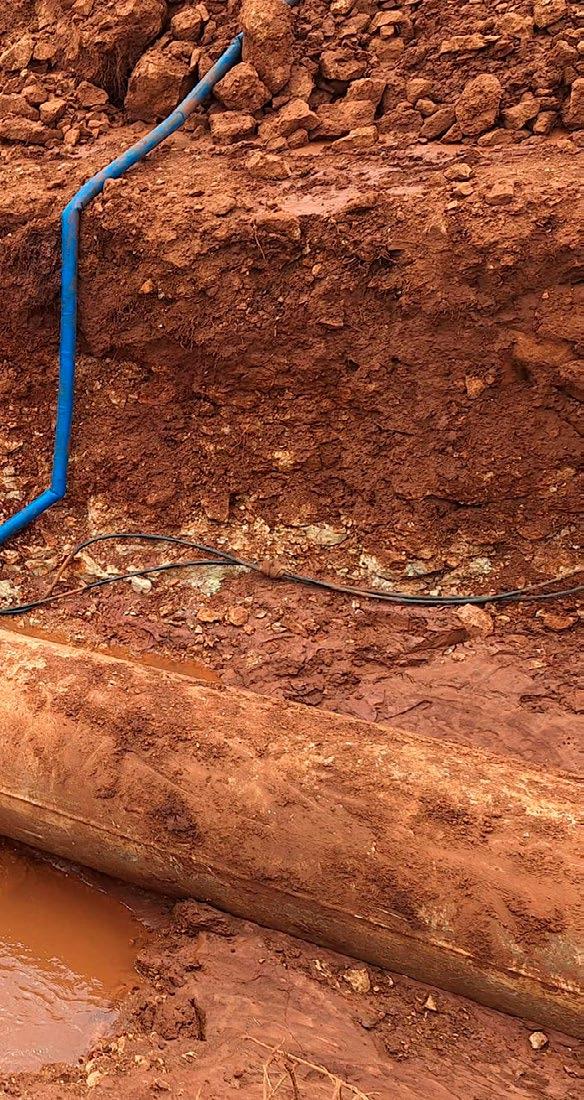
leaks could exist in the countless connections of our invisible transport conduits. For these reasons, some countries like the UK have established penalties for utilities that exceed certain levels of NRW, with thresholds typically around 10% as the maximum allowable. The European Commission is also expected to take similar measures soon. Clearly, eliminating a major leak in a transport conduit would be equivalent to fixing several dozen smaller leaks in distribution networks, making it more cost-effective to prioritize and proactively address transport conduits if water savings are the goal.
While this issue remains unresolved, it presents an opportunity for large industrial water consumers seeking to compensate for their environmental impact. For example, a recent study by the University of Massachusetts, Amherst, shows that training AI systems require between 0.1 and 0.5 litres of cooling water per kWh consumed by data centres. This could make AI a major water consumer if it isn’t already. Additionally, producing 1 litre of beer involves using 3 to 5 litres of water in the factory, plus the water footprint from the rest of the production chain, totalling between 40 and 300 litres of water per litre produced, depending on the region and farming techniques. Lastly, producing 1 kg of chicken meat requires between 4,000 and 6,000 litres of water throughout the production process, including cleaning and effluent dilution. The food and beverage, chemical, cosmetic, and data industries are clear examples of major industrial consumers considering water efficiency strategies and are good candidates for committing to reducing their water footprint.
This fact highlights what has been known for ages: that water is vital not only for our daily hydration and hy-
Eliminating a major leak in a transport conduit would be equivalent to fixing several dozen smaller leaks in distribution networks
giene but also for human and economic development and will remain so in the future. Due to its enormous relevance to industry and its commitment to sustainable development, companies and movements within these industries are emerging not just to mitigate their water consumption but to return more water to the environment than they use. As mentioned later, this can also be achieved by participating in public-private initiatives to reduce losses. There is no better or more profitable water source than not wasting the water already in the network.
It's hard to be somewhat connected to social networks and sector media without hearing the words "Water Positive." As early as 2007, the United Nations Secretary-General, in collaboration with other organizations focused on environmental sustainability, launched the CEO Water Mandate initiative (https://ceowatermandate.org), aiming to mobilize and commit a critical mass of business leaders to address global water challenges through corporate water management. What initially sought to mitigate the impact on the water environment soon became a commitment by companies to generate more water than they consumed, benefiting the environment, the population, and regional economic development. Thus, the concept of "Water Positive" was born. Many have associated the goal of becoming water-positive with the United
Within the project, Aganova is locating leaks, providing the flow rate, and verifying the volumetric benefit achieved after they are repaired
Nations' 2030 Agenda, setting that date as the deadline to achieve it.
There are various mechanisms for companies to achieve these goals. They can take actions to reduce water consumption within their own facilities or participate in public-private actions outside their premises that increase water availability in the watersheds from which they draw.
Many types of actions, or replenishment projects, can be developed by water engineering firms for these companies to promote this positive impact, such as effluent treatment for aquifer and wetland recharge, effluent reuse, water re-potabilization through reverse osmosis processes, or, as highlighted today: collaboration in locating and repairing leaks in water transport systems in the watersheds they draw from.
A success story. Requirements and structure
One of the companies most firmly committed to becoming water-positive by 2030 is the global technology leader Microsoft. Microsoft’s Water Positive goal is made up of 5 key pillars: reduce water use intensity, replenish more water than we consume, increase access to
Aganova’s leak detection
technologies
and the company's know-how have put it at the forefront of publicprivate water recovery projects
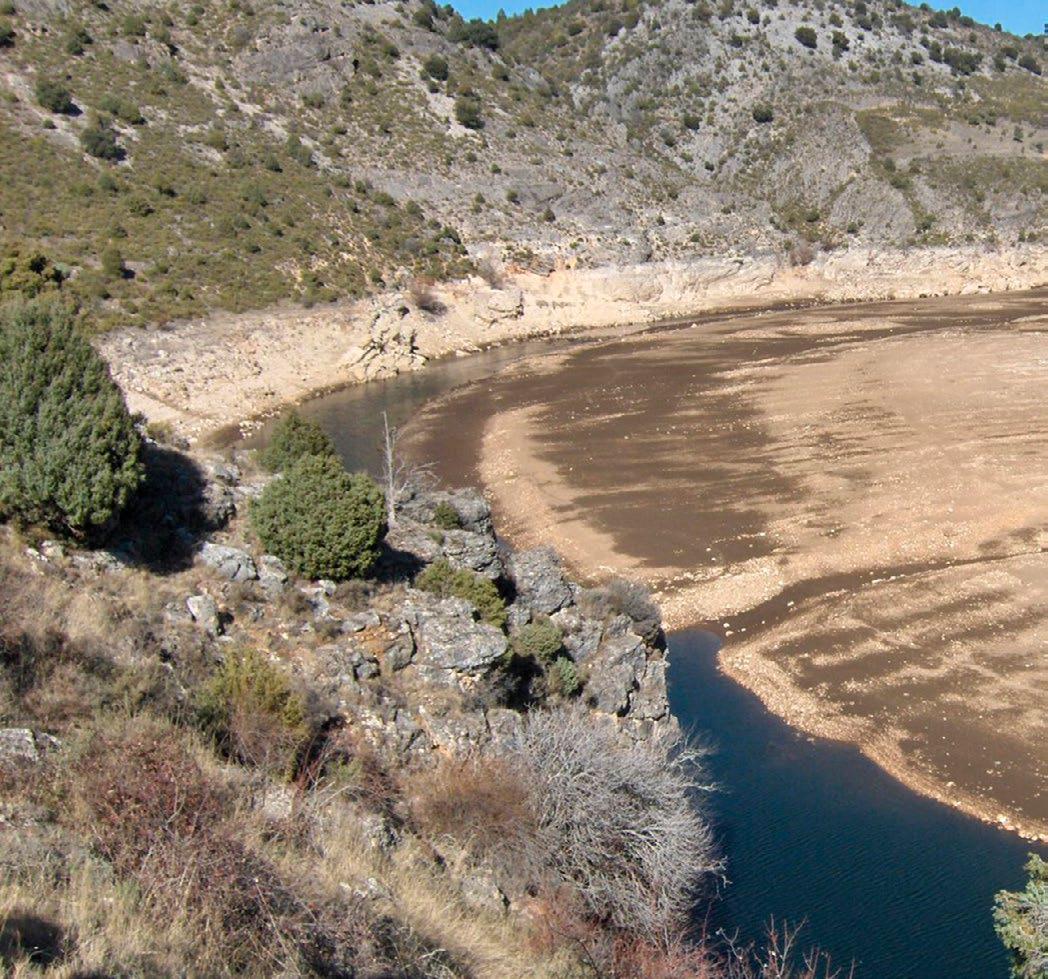
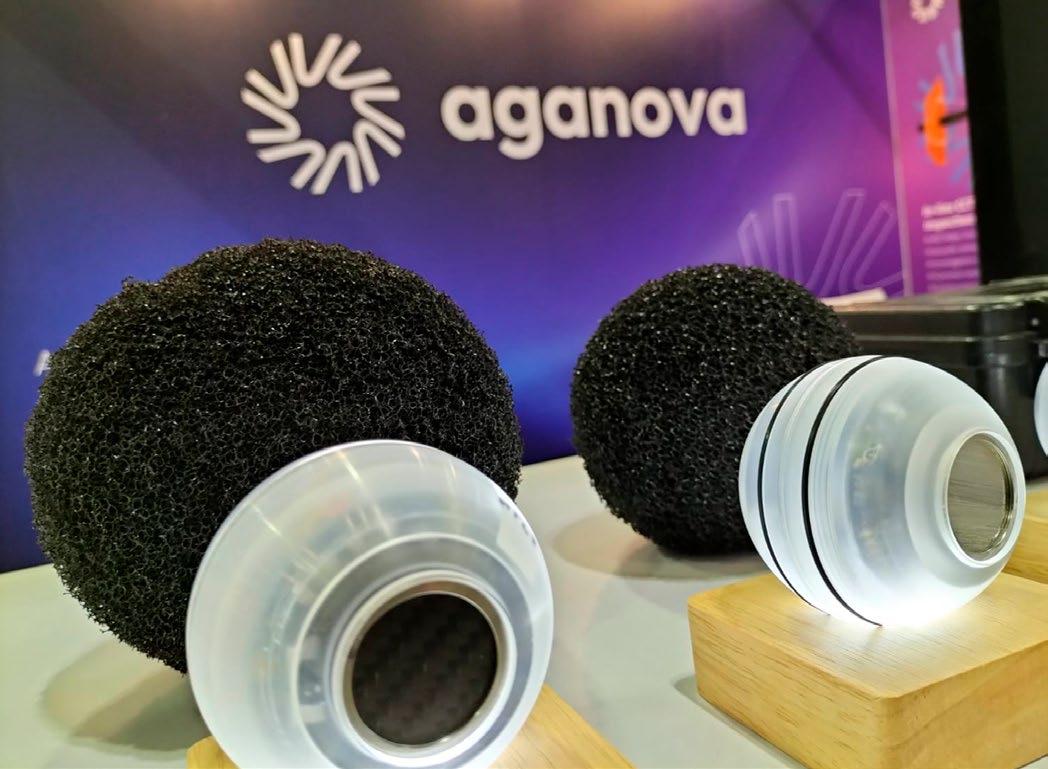
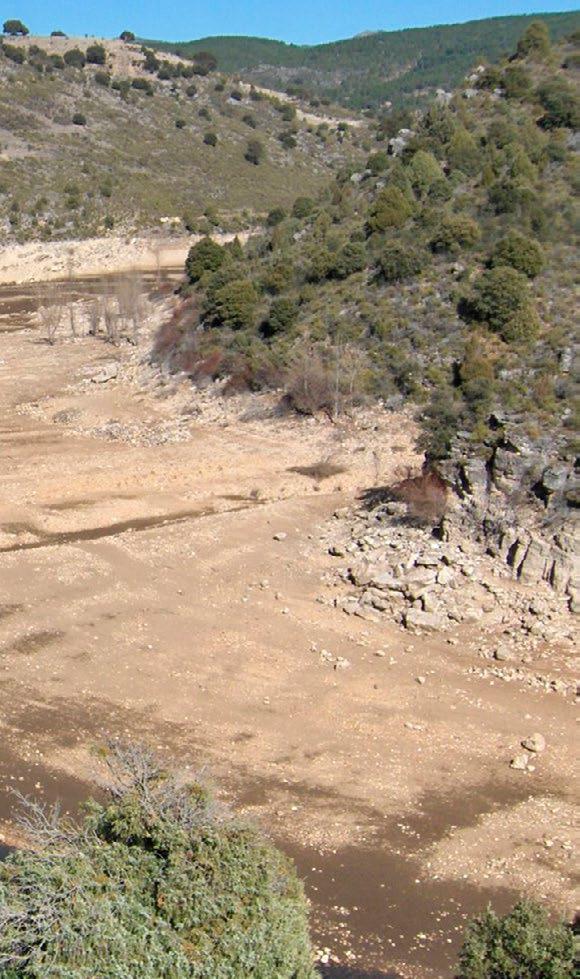
Microsoft, as a funder, and Aganova, as a provider of leak detection solutions, signed a contract for water recovery in the Tajo River basin
as the initial state of the network and the efficiency of the technology used in kilometres inspected per day, a point where in-line technology, and in particular Nautilus, is extremely competitive.
water and sanitation services for people across the globe, drive innovation to scale water solutions and advocate for effective water policy. As announced earlier this year, Microsoft, as a funder, and Aganova, as a provider of technological leak detection solutions, signed a contract for water recovery in the Tajo River basin near Madrid. The multi-year contract aims to strengthen and scale the efforts in leak detection and repair that the Mancomunidad de Aguas del Sorbe (MAS) had been undertaking.
Thus, within the framework of the aforementioned project, Aganova is precisely locating leaks, providing the flow rate of each leak, and verifying the volumetric benefit achieved after each leak found is repaired by MAS. These volumetric benefits, or rather, the credit for
achieving them, measured in cubic metres saved, are proportionally claimed according to the investments made by each party, allowing them to account for it in their water impact balance.
Aganova and Microsoft aligned on the following basic requirements for this project: (1) The beneficiary of the detection must commit to repairing the detected leaks within a reasonable time frame; (2) The technological solution used must include innovative components, preferably related to artificial intelligence (as is the case with our Nautilus and Nemo technologies); (3) The solution must benefit the basin that Microsoft operations are sourcing water from.
Of course, when receiving an assignment like this, aspects such as the cost of water savings, in euros invested per cubic metre saved, also come into play. This value already integrates factors such
For a collaborative public-private water loss elimination project in transport conduits to occur, the following are needed: (1) A public operator willing to repair leaks that may exist in its transport network; (2) An industrial sponsor operating in the area and wanting to mitigate its water footprint while benefiting the population and the environment; and (3) A technology company with precise leak detection capabilities in transport conduits and engineering capacities to structure and take responsibility for the project before the sponsor and the public network operator.
The average annual volumes of water savings, energy savings, and CO2 emissions reductions are considerable. For the example of the leak in Image 1, assuming the presence of one like it every 10 kilometres in a 120 km transport network would save about 9.4 Hm³/ year and 4,728 tCO2/year.
Combining forces with private sponsors who support new technologies not only benefits them and water network managers in terms of environmental sustainability but also definitively boosts innovative technologies that will help solve water problems when we need it most.
Aganova is an engineering and technology company specializing in first-level condition assessment and precise leak detection in water transport conduits, operating globally since 2015 with over 3,500 km of networks studied. Aganova inspects transport networks with its free-navigation device Nautilus and its tethered device Jábega. The information collected during inspections is analysed by its proprietary artificial intelligence algorithms within its Nemo platform, allowing conclusions about the pipeline's condition and the precise location and flow rate of all existing leaks. These technologies and the company's know-how have put it at the forefront of public-private water recovery projects.
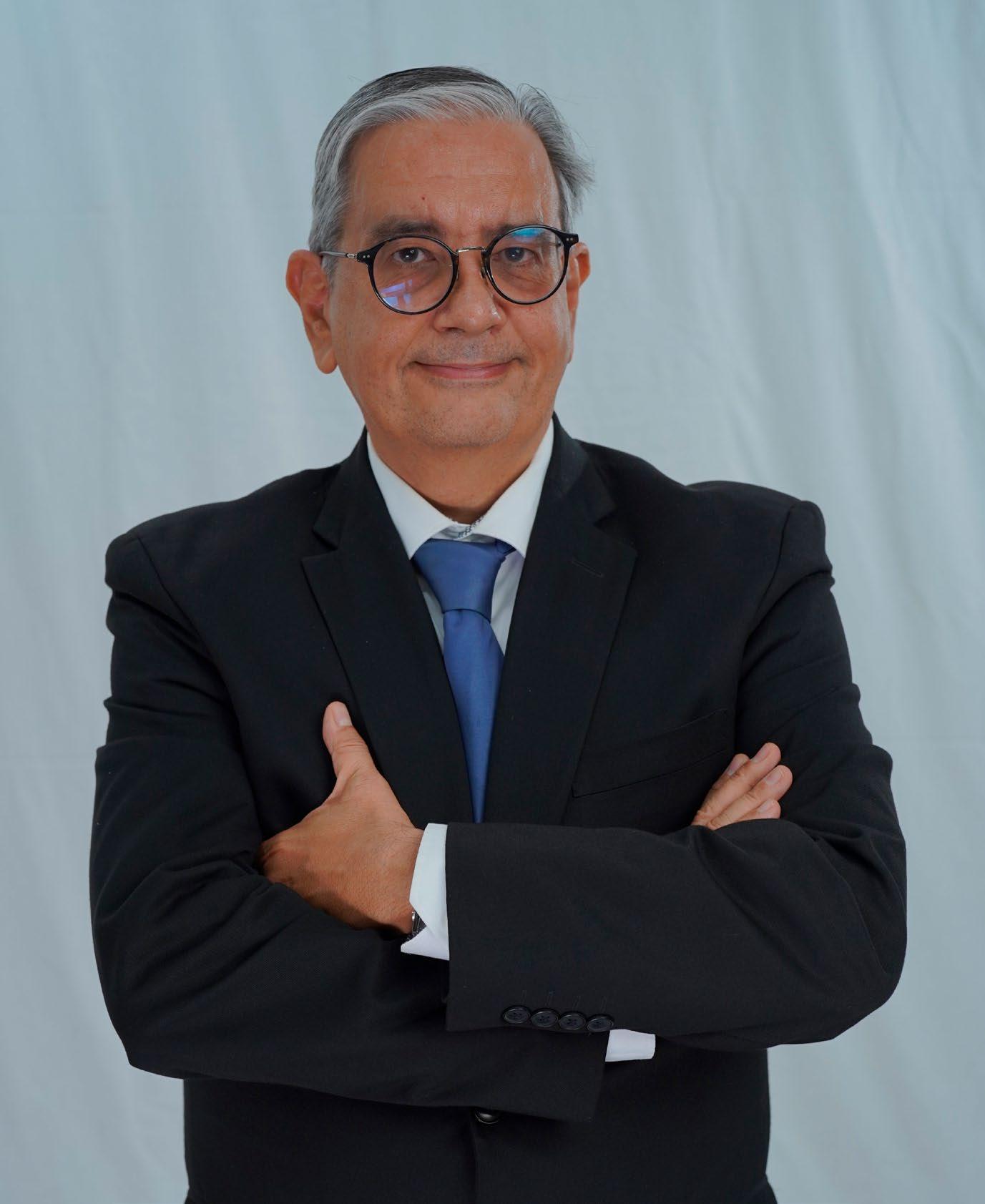
“IT and OT security are crucial, as water, a vital part of critical infrastructure, must be protected for the public good”
Maynilad Water Services, Inc., widely recognized as Maynilad, is the largest private water concessionaire in the Philippines. With an extensive water network, the company set a clear vision over a decade ago to embrace water digitalisation, and since then, has made significant strides in transforming its operations.
Constantly seeking new technologies to enhance its business processes, infrastructure and customer services, Maynilad has emerged as a leader in digital strategy. Serving over nine million people, this Philippine-based company has recently integrated artificial intelligence and satellite imagery to detect pipe leaks with greater speed and efficiency. We had the opportunity to speak with Francisco Castillo, the company’s Senior Vice President and Chief Information Officer, to delve into the role digitalisation plays in the utility's daily operations and its future strategic direction.
Can you tell us briefly about your career path and your current role at Maynilad?
I have been with Maynilad Water Services, Inc. since 2011, and I am currently Senior Vice President - Chief Information Officer.
Previously, I was with a multinational consulting company for over 13 years, where I worked in my last role as Regional Head for Asia-Pacific’s consulting practice. I have an undergraduate degree in B.S. Electronics & Communications Engg. (DLSU-Manila), and a Ph.D. in Electronics Engineering from the Univ. Politecnica de Catalunya
(Barcelona, Spain) where I also taught and was the Vice-Director for the Technical Engineering College, conducting R&D as well in collaboration with industry and the EU. I also had a stint in a manufacturing company, in charge of the automation and instrumentation of their production lines, which gave me an understanding of OT, the reason why I now also handle the OT for Maynilad’s plants since 2014.
For the last 10 years, Maynilad has pursued a strategy that involves digitalising the operational technology at all plants and connecting it with the information technology. Could you explain why digitalisation plays such a crucial role for Maynilad and what the benefits are?
Firstly, today’s water treatment and sewage treatment plants are very complex and have a vast number of equipment which needs to be controlled. As such, it is impossible to operate them effectively without the use of Automation (OT), which would only be true for very small, conventional types of facilities.
Furthermore, integrating OT with IT offers numerous benefits and has proven to be advantageous for companies worldwide, extending beyond just the utilities sector, for example, for manufacturing
companies, oil and gas, etc. The first and most immediate benefit is the visibility of data to management. OT has the data, but it is in a “raw” form. However, by integrating it with IT, we can use IT tools to turn that into information: dashboards and reports that management can understand and use to be informed on how the business is going. The second biggest benefit is having a single source of truth for technical data. In Maynilad’s case, we started building our IoT (Internet of Things) platform in 2012, with the intention of it acting as a repository of all technical data. Given that over 12 years have passed, this is a rich source of information, which we are now leveraging to do data analytics.
Maynilad has installed its own weather station. Could you tell us more about this initiative and its advantages? It is also related to the data analytics aspects. When we initiated deeper analytics and predictive modelling, we noticed that most of the problems we had at hand required good weather data. We then contracted a weather company to come up with specific predictions for us; on rainfall, temperature and wind direction, they used available data sources, but in order
"In Maynilad, we started building our IoT platform in 2012, with the intention of it acting as a repository of all technical data"
to obtain more accurate predictions, we decided to install our own Automatic Weather Stations in sites that are critical to us: in our catchment areas in Ipo, Angat and near Laguna Lake. These send to us hourly weather readings via satellite which would not only inform us on the current weather situation, but also feed it in the weather prediction models of our provider, making them more accurate.
How does integrating AI technology into Maynilad's operations contribute to its Non-Revenue Water (NRW) Management Program?
Currently, 80 per cent to 90 per cent of Maynilad’s NRW are due to leaks and up to 90 per cent of these leaks do not surface, which means these need additional efforts to locate. Leakage detection is therefore a critical element in Maynilad’s NRW management program.
AI technology helps Maynilad to find more leaks at a faster rate. Integrating AI technology into Maynilad's operations enhances our NRW program by augmenting and complementing our existing technologies and leak detection capabilities. By using machine learning algorithms, AI identifies segments of the pipe network where leaks are likely to occur based on available information such as pipe materials, age, history of repairs and NRW data. AI helps optimize the
allocation of resources, such as manpower and equipment, by localizing areas of the pipe network with a high likelihood of pipe failure, ensuring that efforts are focused on the most critical areas.
What were the key results of Maynilad's pilot run of the Infrawise AI technology, and how did it impact the company’s leak detection efficiency?
The first run of Infrawise involved 1,700 kilometres of pipelines from 410 district-metered areas with high NRW. Infrawise identified 756 kilometres with a high likelihood of failure. The leak detection teams are then deployed to these segments to inspect and pinpoint the exact location of leaks. Maynilad was able to find 1,525 leaks from these segments resulting in an average output of two leaks per kilometre of inspection.
The rate of finding leaks in the segments recommended by Infrawise is higher than the rate when the entire pipe networks are investigated, commonly termed as blanket leak detection, which is only 1.59 leak per kilometre.
Infrawise is an effective complement to the standard approach of leak localization, termed step-testing. The latter involves the deployment of the team on the ground to investigate and localize areas of the pipe network for focus leak detection.
Can you explain how Asterra's satellite-based technology detects underground pipe leaks, and what advantages it offers over traditional leak detection methods?
Asterra applies algorithmic analysis to track the spectral “signature” of potable water underground captured in a satellite
"Integrating artificial intelligence into Maynilad's operations enhances our NRW program by augmenting our leak detection capabilities"

image. The leakage information that the AI algorithms pick up is then captured in a Geographic Information System report that specifies street locations.
Asterra's satellite-based approach allows for the inspection of vast areas in a single scan, covering entire cities or regions. This is especially beneficial for utilities managing extensive water distribution networks. Unlike traditional methods, it avoids the need for physical access to the pipes, reducing disruption and the risk of infrastructure damage. The technology can rapidly assess large areas without extensive groundwork, speeding up the leak detection process.
What are the main challenges Maynilad faces when implementing AI and satellite technologies in its water operations, and how are they addressing these challenges?
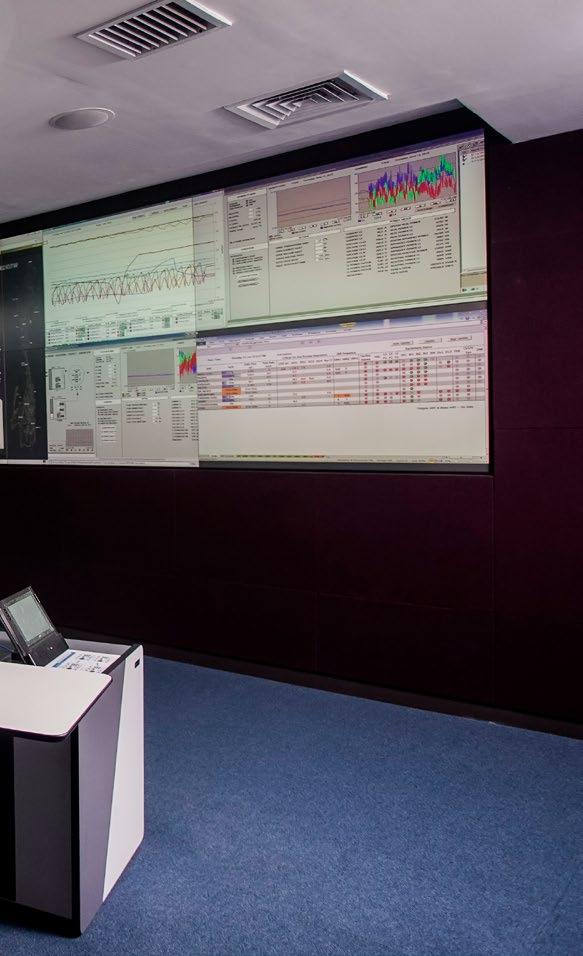
The implementation of advanced technologies involves significant upfront costs, particularly for software. These initial expenses can be substantial, but they are necessary for establishing a strong technological infrastructure. Ongoing costs include system maintenance, data storage, and the potential need for upgrading technology over time. The integration of AI and satellite systems, while enhancing capabilities, also increases the potential for cybersecurity threats. Ensuring compliance with data protection regulations and standards is essential, particularly when handling sensitive customer data.
Other critical factors can affect the successful implementation of new technologies, such as the quality of the data being collected and analyzed. Poor data quality can lead to inaccurate insights and ineffective decision-making. Additionally, a sudden surge in areas requiring attention from the leak detection team necessitates careful prioritization of deployment. This may involve adding more teams and equipment to handle the increased workload efficiently. It's crucial to assess the readiness of our operations to manage a higher volume of leak repairs, ensuring that the infrastructure and personnel are adequately prepared for the increased demand. In 2024, the average number of underground leaks detected per month increased by 70%, rising from 1,129 in 2023 to 1,929.
Gradual implementation of these technologies allows for spreading costs
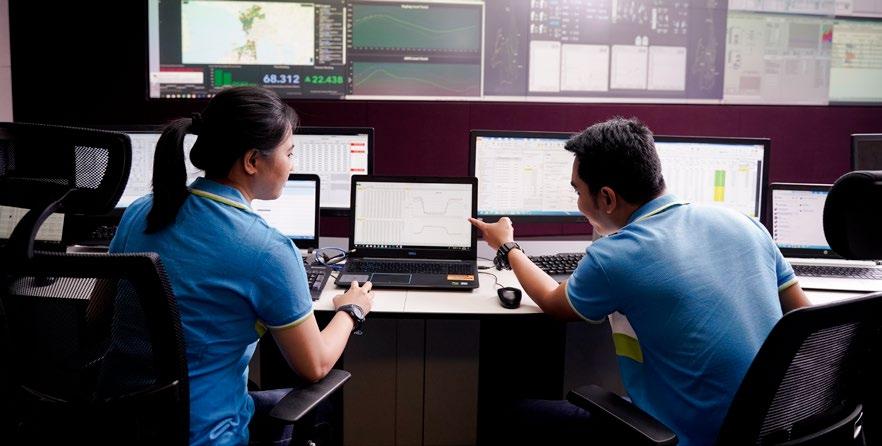
"Asterra applies algorithmic analysis to track the spectral 'signature' of potable water underground captured in a satellite image"
over time and evaluating their impact and effectiveness before full deployment. This phased approach helps in managing risks, identifying potential issues early, as well as allowing for necessary operational adjustments. Adhering to relevant data protection laws, industry standards, and company policies helps safeguard data privacy, maintaining customer trust and protecting the organization from legal and regulatory repercussions.
What future advancements in digital technologies is Maynilad exploring to further improve its water operations and efficiency?
One of the focus areas of Maynilad is in customer service and as such, we are investing in new platforms to help in this. Currently, one of our challenges is being able to reply to all the queries we get through social media, especially when we have maintenance or leaks that may affect our service. During these episodes, we have such a high volume of queries that our operators cannot reply. An AI-based chatbot that handles such volume of queries efficiently is already being used. We are focusing on data analytics in general, because thanks to the use of such tools, we can drive more efficiencies in our operations, which translates to lower costs.
We will also continue to automate all our plants and facilities, as well as hooking them up to our Central Control Room and putting all equipment and sensor information into our IoT platform.
Lastly, IT and OT security are crucial, as water, being a vital part of critical infrastructure, must be rigorously protected for the public good.

PÄR DALHIELM
EUREAU PRESIDENT AND CEO OF SVENSKT VATTEN, SWEDEN
The 1991 Urban Wastewater Treatment Directive (UWWTD) played a pivotal role in regulating the collection and treatment of wastewater. However, evolving environmental needs and technological advancements necessitated a thorough review and update.
The European Parliament’s April 2024 vote on the UWWTD (recast) marks a significant stride towards aligning the directive with current environmental requirements. It sets the stage for improved protection of water resources and enhanced public health. It is the result of the collective commitment of EU institutions, water operators and environmental associations to address pressing environmental concerns that have emerged over the last 30 years.
The Parliament’s approval is a significant milestone in safeguarding Europe's water resources, contributing to the realisation of the overarching objectives of the UN’s Sustainable Development Goals and the European Green Deal, while protecting public health, by implementing an integrated approach to wastewater management.
The revised directive incorporates several key provisions aimed at enhancing wastewater treatment processes and reducing pollution in water bodies. These include stricter standards for nutrient and pollutant removal, improved monitoring - including health parameters - and the promotion of the circular economy.
If the UWWTD (recast) is to be successfully implemented, several significant challenges will need to be overcome, not only by wastewater operators but by all stakeholders involved.
One of the most celebrated aspects of the directive from our point of view is the introduction of Extended Producer Responsibility (EPR) to cover the cost of micropollutant removal, setting a precedent in the implementation of the polluter pays principle in the water sector. This is a significant step towards ensuring the affordability of essential services like water while maintaining high environmental standards. The successful implementation of EPR schemes requires evaluation and control by public authorities, as well as continuous, transparent and open dialogue and cooperation among all stakeholders in-
volved. Correctly implemented, EPR could be a game changer in a broader perspective. Not only for ethical, affordability and investment reasons, but also to build incentives for innovation and production of sustainable products.
The text mandates energy neutrality in the sector by 2045 though it misses the sector’s contribution to broader energy neutrality targets at municipal, national, and European levels.
Achieving new treatment requirements while reaching energy neutrality goals will entail significant investment and adaptation. The directive introduces flexible deadlines in achieving targets for tertiary and quaternary treatment and energy neutrality, allowing for strategic investment and optimising environmental and financial outcomes. However, how the investments are identified, planned and included in the national
"Extended Producer Responsibility (EPR) sets a precedent in the implementation of the polluter pays principle in the water sector"
implementation programmes will be key for a successful implementation of the Directive, ensuring that investment needs are correctly identified and financing is ensured.
We worked closely with policymakers on this directive, from well before the publication of the European Commission’s proposal in October 2022, advocating for a holistic approach to wastewater management.
After the final votes by the Parliament and the Council, expected in autumn, and the publication by year-end, we will focus on supporting the development of secondary legislation that is crucial for the directive’s successful implementation.
In conclusion, the directive sets a challenging new standard for wastewater management in Europe. We are confident that this new iteration will ensure a cleaner and healthier future for us all.
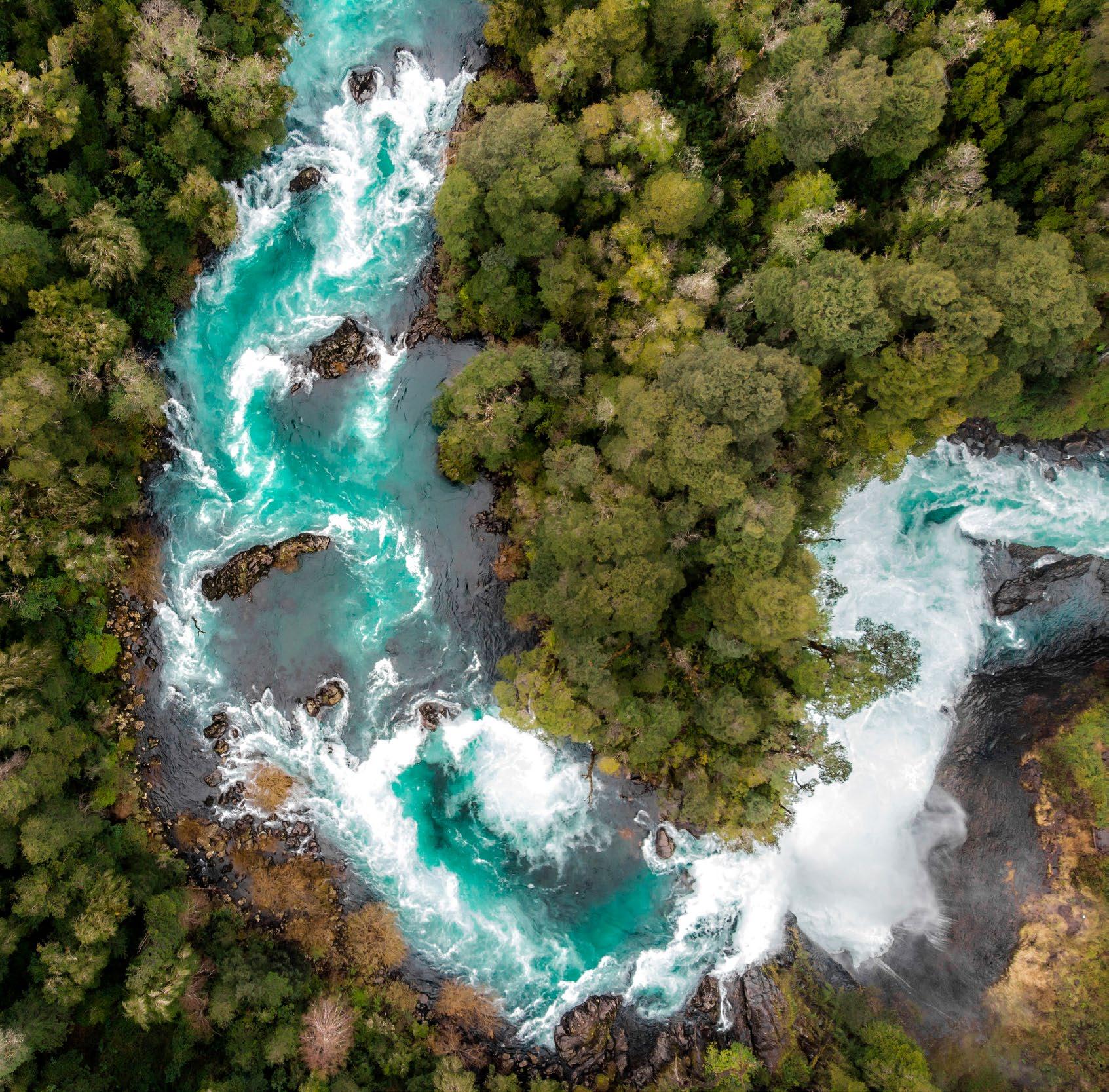
Water is the most important basis of life –and the more people live on earth, the greater the demand. However, climate change, urbanization, and increasing environmental pollution pose major challenges to water companies everywhere. In line with the UN goals to enable access to clean drinking and sanitary facilities for everybody by 2050, we help our customers in the water industry to achieve their sustainable water management goals. As an innovation-driven technology company, we enable the water industry to perform both clean water supply and waste water disposal in a particularly efficient, economical, and sustainable manner. siemens.com/water
By leveraging Diehl Metering’s water loss management software as part of its data-driven strategy, Brønderslev Water Company in Denmark has reduced non-revenue water from 10% to less than 5%.
When Thorkil Neergarrd became CEO and managing director of Denmark’s Brønderslev Forsyning A/S – the holding company of Brønderslev Water Company (BWC) – back in 2013, he had an ambitious plan: to establish Brønderslev as a Danish standard for digital innovation, promoting sustainable development and the conservation of water and energy resources.
To achieve this vision, Neergarrd recognised it was necessary to tackle BWC’s growing problem of non-revenue water (NRW) – the water that is lost in the network as a result of leaks, meter inaccuracies and other unanticipated events.
This was no easy feat, particularly because of the sheer amount of water that BWC is responsible for. Every year, it supplies around 980,000 cubic metres of water to 16,000 consumers in Brønderslev – all from its 365 km long water network.
While a typical amount of NRW in Denmark is around 8%, if a water company’s annual NRW exceeds 10% then it receives fines from the national authorities. With BWC’s NRW regularly exceeding the 10% rate, Neergarrd knew he needed to act fast. That’s why he took the strategic decision to implement a new digital strategy for water loss man-
While a typical amount of NRW in Denmark is around 8%, if a water company’s annual NRW exceeds 10%, it is fined by the national authorities
agement (WLM) so that he could gain full control over the city’s water losses.
A data-driven strategy, enabled by smart meters
As part of his data-driven approach, Neergarrd rolled out smart meters, including Diehl Metering’s HYDRUS 2.0 Domestic ultrasonic water meters, to 6,500 households in Brønderslev. These are supported by a fixed network infrastructure, which includes fixed an-
tennas and extenders that collect meter readings every hour from at least 98% of installations.
The entire water distribution network was then carefully subdivided into 22 unique district meter areas (DMAs), each of which were equipped with a HYDRUS 2.0 Bulk meter to determine the quantity of water distributed so that the NRW per zone could be established. The pipe recording database and the DMAs were digitized.
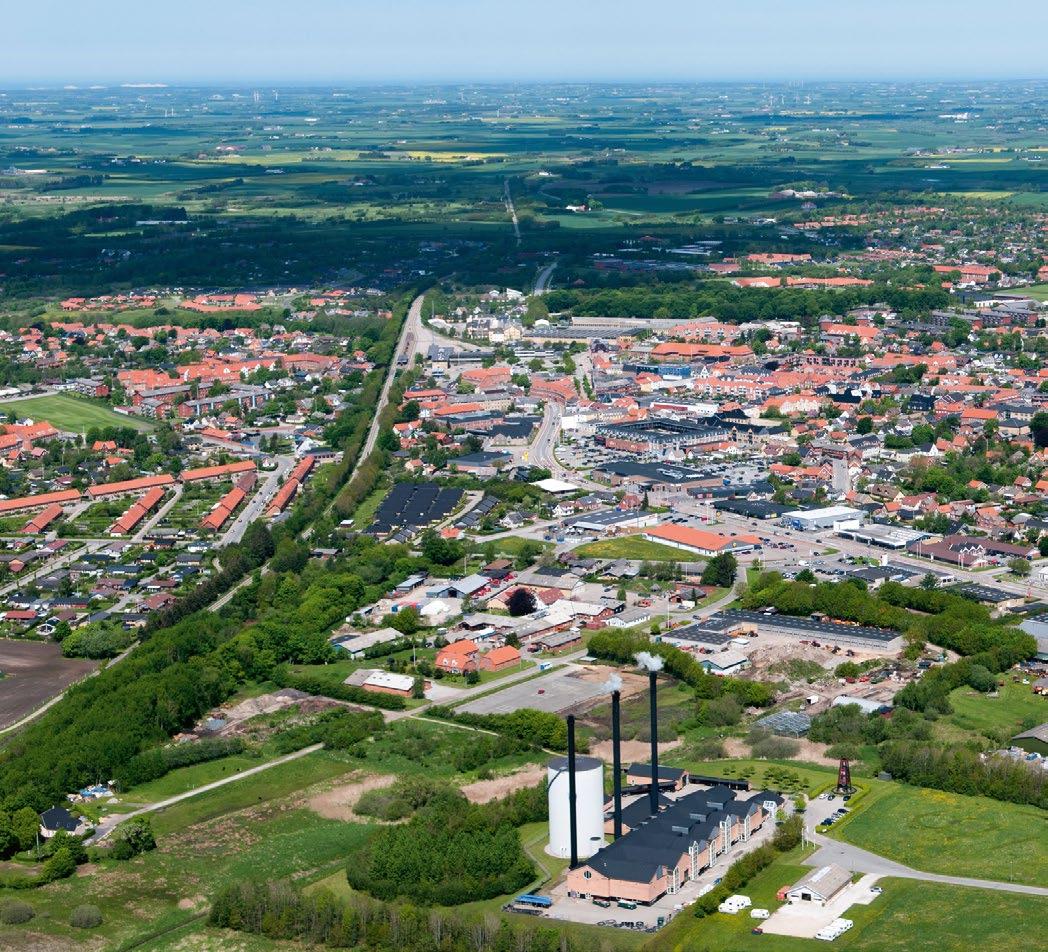
This provided a good grounding for the next – and crucial – part of Neergarrd’s strategy: the intelligent use of data. While over three-quarters of all meters in Denmark are smart meters, most water companies use these purely to automate the meter reading process. Very few are leveraging the data that comes from these meters, and even fewer are applying intelligence to this data. Neergarrd believes that water companies should be far more ambitious. He argues that smart metering and the strategic use of meter data may be considered as the most important link in the new digital value chain in the water industry. Furthermore, future gov-
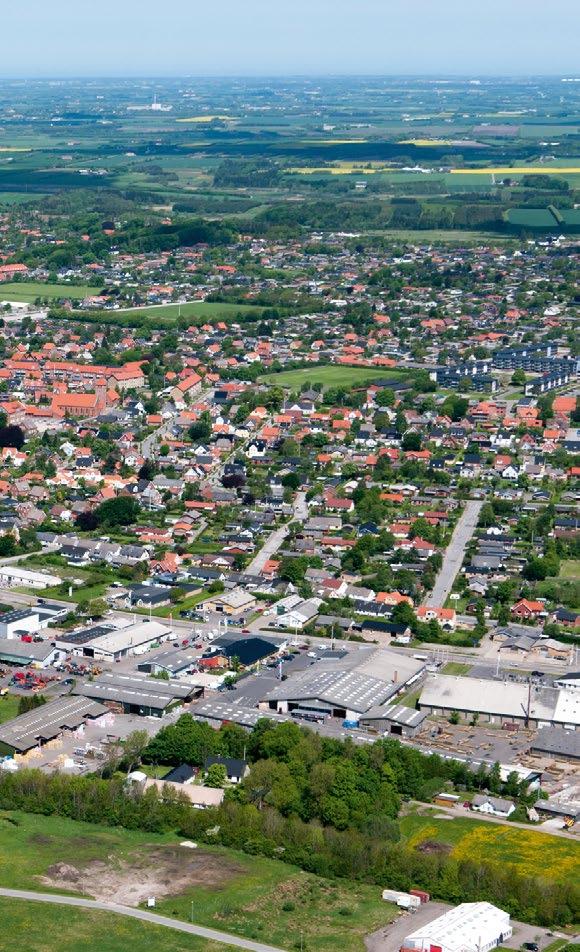
ernment mandates and standards for the adoption of intelligent water meters will boost the outlook.
To this end, in 2023, Neergarrd implemented an advanced data analytics solution for water loss management. This geographic information system (GIS) is an online application that combines household meter data with DMA inlet-data from BWC’s supervisory control and data acquisition (SCADA) system 24 hours a day, 365 days a year. Comprehensive analysis is then carried out on this mix of data, which can be supplemented with data from pressure sensors or noise detectors.
Combining smart meter data with municipal utility internal data, for example, allows the continuous measurement of the difference between network input and withdrawal. This facilitates the early identification of leaks so that water companies like BWC can react as quickly as possible and keep losses to an absolute minimum.
That’s not all: as well as identifying the water loss and quantifying the amount of water loss in cubic metres per day, a data-based, automated system also reduces the traditional manual effort involved in the search. With strategically placed bulk
meters, the complexity of water management can be further reduced. The data transmitted from the DMAs already enables the leak to be localized. By then infusing artificial intelligence (AI) and predictive analytics, the location of the leak can be estimated without manual effort or hardware use.
Perhaps the greatest advantage is that all these functions can be realized automatically, continuously, and without time delay. A digital, data-based tool thus continuously analyses and monitors the condition of the water network and alerts employees to problems – targeted and prioritized. While large amounts of data are processed and analysed in the background, municipal utilities can focus on what is important: maintaining infrastructure and providing enough high-quality water. It’s a very simple way to proactively counter the future of water scarcity and take control of a water network.
How BWC is benefitting from its data-driven strategy
Very few water companies in Denmark are leveraging the data that comes from smart meters, and even less are applying intelligence to this data
Since implementing its water loss management platform in 2023, BWC has realised a raft of benefits. First, since it has largely automated – and thereby expedited – the process of identifying NRW, it is benefitting from reduced unsustainable water losses. BWC’s data-driven strategy, combined with new organizational processes, has resulted in it halving its water losses, with it dropping its NRW from an annual average of 9-10% between 2017 to 2018 to an average of 4-5% between 2019 and 2023.
As well as flagging new leaks faster and more easily, BWC has been able to identify, locate and repair existing leaks, which may have been hidden for several months or even years. Every water distribution system across the world has a

lot of these small, hard-to-identify background leaks, the cost of which soon add up. Even once identified, these types of leaks can result in needlessly expensive repair work. For example, it is estimated that a daily loss of 24 m³ running for 180 days would cost BWC approximately 2,000 euros. Thanks to its new data-driven approach, BWC has already found and eliminated four such back-
By infusing artificial intelligence and predictive analytics, the location of a leak can be estimated without manual effort or hardware use
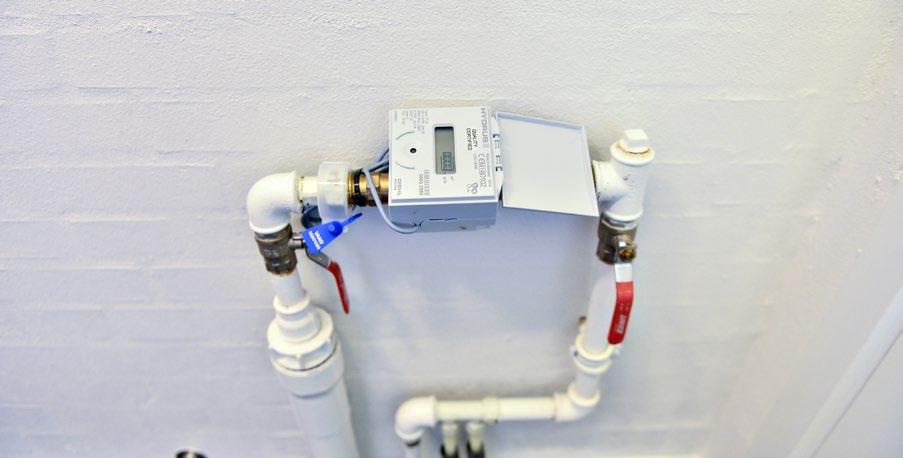
ground leaks, saving it approximately 8,000 euros to date.
BWC has also been able to optimise the way it organises its labour. With automated and tedious tasks performed by the software, technical teams can be more efficient in the field. For example, every morning, an operational manager and his team can assess the situation of the network – a process that takes just ten minutes thanks to the water loss manage-
ment platform. Urgent operations, such as leak repairs, can be prioritised immediately in the zone indicated by the software. Longer-term “at risk” projects, such as pipe replacement, can also be identified at a glance.
It isn’t just BWC that benefits from its advanced water loss management plat-
form. Customers now benefit from new services such as instant leak warnings that can prevent significant damage from occurring in their homes. In the first quarter of 2024, BWC was able to warn 235 customers about in-house issues: 160 had leaks with a flow between 5 and 30 litres per hour (l/h), 25 between 30 to 100 l/h, 20 between 100 and 500 l/h and 12 were above 5,000 l/h.
Automated text messages can be sent to the consumer as soon as the household meter detects an internal leak. This prevents additional damage to floors, furniture and other materials and also avoids the growth of mould that can be hazardous to health. Moreover, insurance bills may be lowered.
Detecting leaks in the local area earlier also reduces the extent of damage to roads, pavements or pipework, for example. This means that faster and simpler repairs can be carried out, reducing the need for road closures or temporary traffic restrictions –measures that often result in congestion and saving significant sums of money.
The combined benefits that BWC is realising result in lower overall operational expenditure. While the total costs of the domestic smart meters, including the antennas and the bulk meters, can add up, the annual savings from lower annual water losses, reduced downtime, decreased repair costs, improved efficiency, better technical performance and improved control, soon outweigh the costs. That’s without considering that providing more value to customers could allow the company to increase its annual subscription fees.
Ultimately, smart meters combined with an intelligent water loss management platform have enabled Neergaard to realise his vision of establishing Brønderslev as a Danish standard for digital innovation. This technology, he believes, is the foundation of a modern water company and the data can be one of their most important assets.
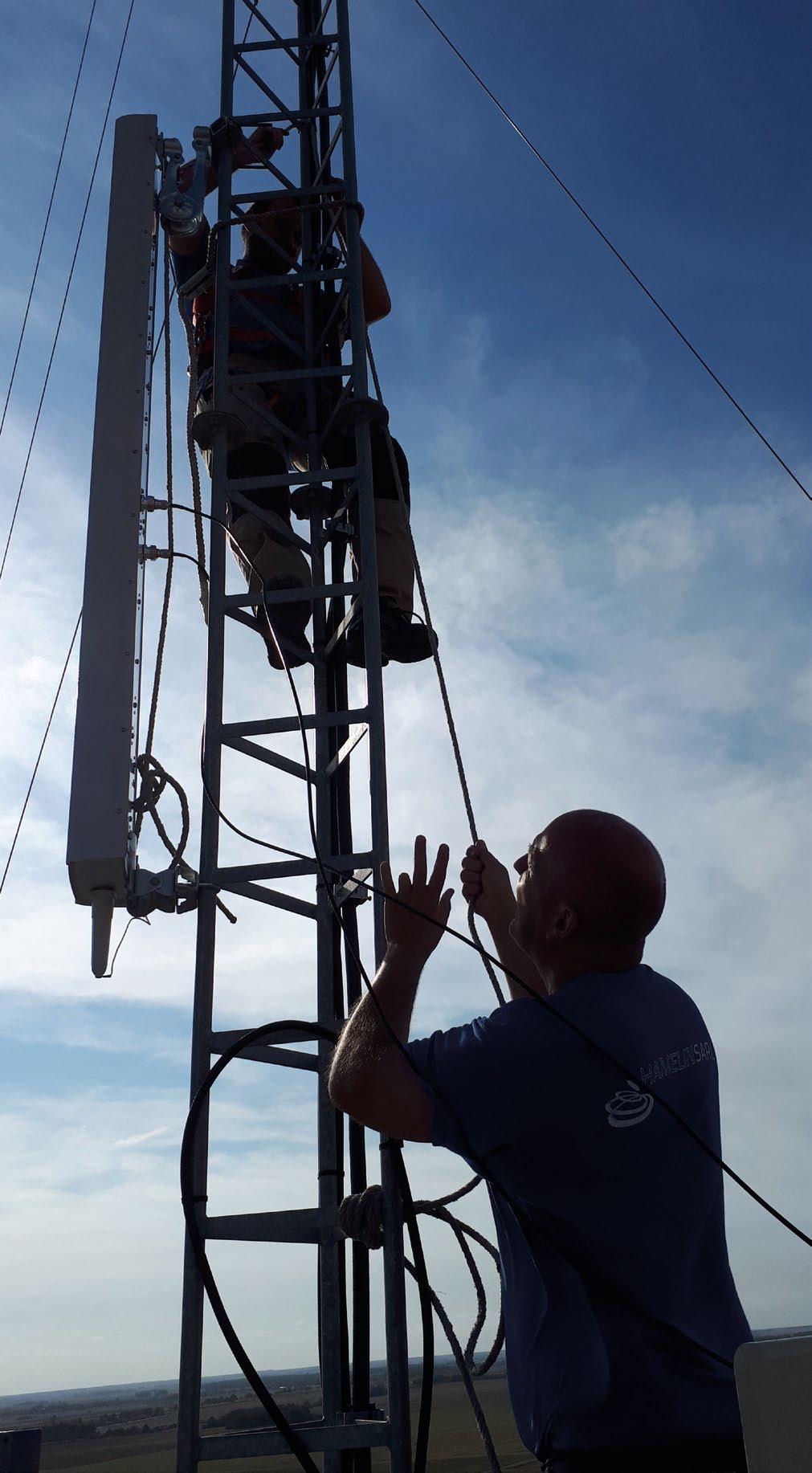
While the costs of domestic smart meters, including antennas and bulk meters, can add up, the annual savings soon outweigh the costs
“We need to secure our
for
and a digital network is a key part of the solution”
LARA OLSEN - MANAGING DIRECTOR, SOUTH EAST WATER
South East Water is leveraging digital innovation to secure a sustainable future for Melbourne’s water supply. The utility’s Digital Metering Program uses IoT technology for real-time water management, addressing leaks, increasing operational efficiency, and helping customers save money.
South East Water provides water, sewerage and recycled water services to over 1.8 million people in Melbourne's southeast. In this interview, Lara Olsen, Managing Director of South East Water, shares insights into their Digital Metering Program. In her role, she works with a team of over 800 professionals with a focus on enhancing customer service and environmental protection. From early leak detection to the integration of cutting-edge IoT technologies, the Digital Metering Program aims not only to enhance the efficiency of water management but also to empower customers with real-time data and proactive solutions.
Can you provide an overview of the Digital Metering Program and its primary objectives?
Our purpose at South East Water is to deliver healthy water for life for our cus-
"The Digital Metering Program has been a key part of South East Water’s strategy for future-proofing the water network since early trials"
tomers, community and environment. We know that as we look to the future, we need to innovate, and act with care to preserve our precious water in a warmer and drier climate, so we can contribute to the liveability that our community values so highly.
Our Digital Metering Program has been a key part of our organisation’s strategy for future-proofing the water network since our earliest digital meter trials in 2010. The primary objective is to use data insights from digital meters to drive benefits – like early leak detection in customer properties, as well as preventing leaks within the water network. It’s also about using data to identify where preventative maintenance is needed and generating insights that drive an efficient and effective water network.
The Digital Metering Program is a key commitment in South East Water’s fiveyear customer commitment through our Price Submission 2023–28 to support customers, community and environment, now and into the future.
Since the program’s inception, we’ve alerted over 17,000 customers to a leak on their property. In many cases, the meters detected small leaks weeks or months before they came to the surface.
In the 2023-24 financial year, our customers saved more than AUD 2.9 million (nearly US$2 million) and 683 ML of drinking water that may have been lost had the leaks gone undetected. Our data shows that, if a leak is detected, customers save an average of AUD 100 (US$68) off their next quarterly bill by taking action early. The meters are also quicker to read than traditional meters, leading to bills that are more accurate.
We’ve recently reached an exciting milestone in the digital metering program, and we’ve officially moved out of the test and trial phase and into network-wide rollout. Our aim is to replace around 1 million traditional water meters with upgraded digital meters by 2029. The rollout is one of many ways South East Water is optimising its operations in delivering seamless, fair and affordable services for all.
What specific technologies are being used in metering and communications?
We have developed our own fit-for-purpose ultrasonic digital meters, and an enterprise IoT platform to digitally manage our water infrastructure and services. Our fully integrated NB-IoT digital meters deliver rich, customisable data points and built-in alarms, so we can deliver a better customer experience and provide granular data which in turn, helps detect usage abnormalities (like a continuous flow) that may indicate a leak.
This data is triaged using our enterprise IoT platform, triggering automated alerts to help the customer take action
to address the leak and prevent a higher-than-expected water bill. Customers receive a notification via SMS, email or letter and we support them to identify the cause of the potential leak.
Can you share some insights into the pilot phase of the program?
After initial technology trials of emerging metering solutions showed great promise, we proposed a pilot phase within our funding submission to the government regulator, the Essential Services Commission, that would help determine if the use of digital meters could achieve the customer value we hoped for.
We undertook this phase collaboratively with our metropolitan water peers. The purpose of the pilot was to confirm that a sustainable end-to-end system could be built, and that our key assumptions around customer value and network efficiency could be further refined.
We had six clear objectives and outcomes that we wished to achieve and report back on at the end of the phase. We were able to demonstrate that the end-
to-end solution for the remote collection of data from the new digital meters was reliable, efficient and able to immediately show customer benefits. The meters were found to be extremely reliable, secure and able to work even in the most difficult locations.
Two immediate customer benefits arose from the pilot. Firstly, the ability for our customers to access granular consumption data through the mySouthEastWater online portal. This allows customers to understand when they were using water and how much they were using, with the aim to better manage usage and reduce bills. Secondly, customers are notified in near real-time when they have leaks on their properties. In contrast, with mechanical meters, the only indication of a hidden leak is usually when a bill arrives, causing the classic “billshock” experience. Digital meters allow leaks to quickly be relayed to the customer so that they can be fixed.
How will the new meters provide insights into water usage patterns, and
"The organisation’s aim is to replace 1 million traditional water meters with digital meters by 2029, one of many ways to optimise operations"
what tools will customers have to access this information and receive alerts about potential leaks?
Our digital water meters allow our customers to access near real-time data about their water consumption. Customers can use the mySouthEastWater portal to break down their household use into monthly, daily or even half-hourly increments –helping them to save water and money. If the meters detect a large leak, defined as a continuous flow of water at a rate of 120 litres per day or more, for at least 24 hours, our enterprise IoT system will generate an alert. In most cases, we send a notification via SMS, email or letter and step the customer through some
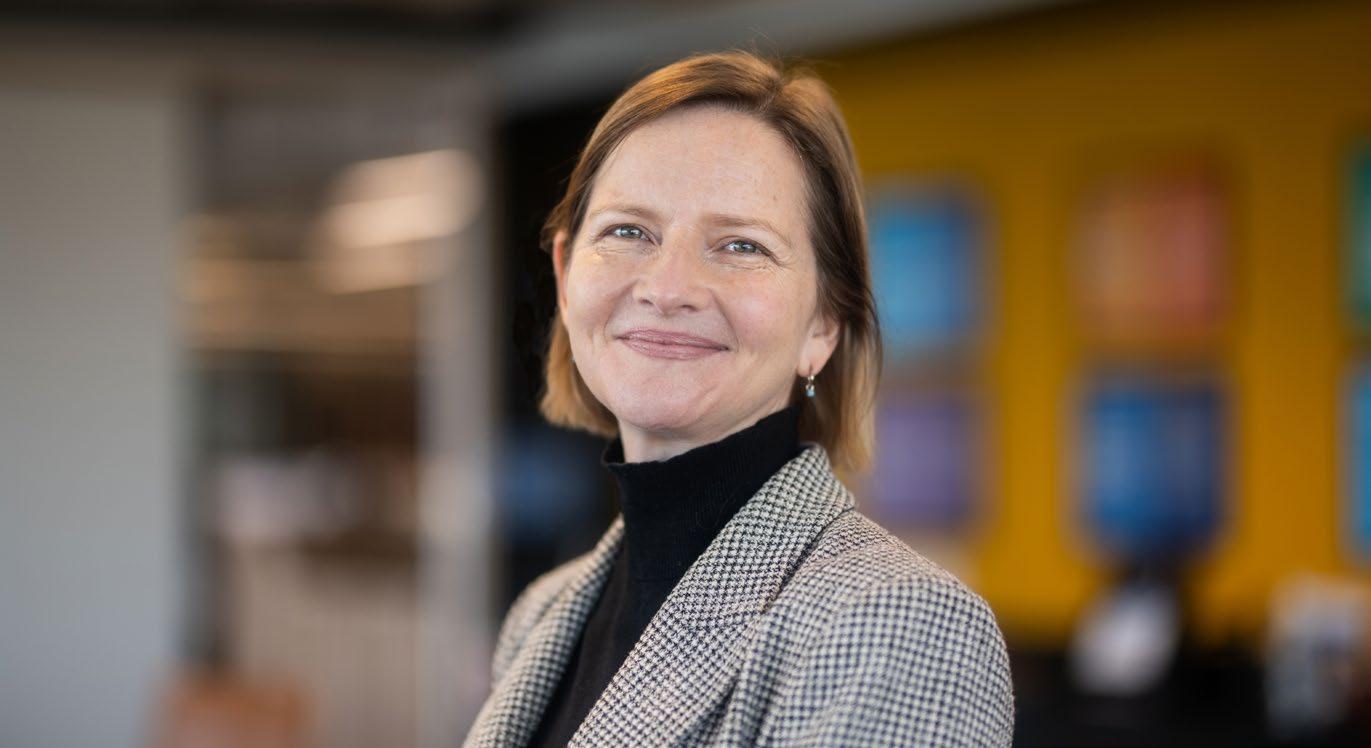
"The end-to-end solution for the remote collection of digital meter data is reliable, efficient and able to immediately show customer benefits"
simple checks to help identify the cause of the potential leak.
We’ve found that, most of the time, customers are quick to take action when they receive a leak alert. However, during our digital meter trials, we became aware that not all customers were taking steps to identify and fix potential leaks – for a number of different reasons. One of these reasons was a concern about the unknown cost of engaging a plumber compared to the size of the leak. So, in 2022, we established a plumbing referral process with our plumbing partner to offer free virtual leak audits and identify the location of leaks. The customer receives a plumber’s report and can engage our plumbing partner or their preferred plumber to make any required repairs. This enables customers to make an informed decision, as well as the choice to engage trusted plumbers at a reasonable price.
This is a really important part of our customer care approach – not only providing information, but providing support options that meet our customers’ needs, recognising the barriers that can exist for customers who may struggle to take action based on their personal circumstances, and putting supports in place to make it easier for them to address leaks – with the ultimate goal of saving both water and money.
What are the costs associated with the installation of digital meters, and how do you expect these costs to be balanced with the savings and efficiencies gained?
It’s true that digital meters cost more than mechanical meters initially, but they save
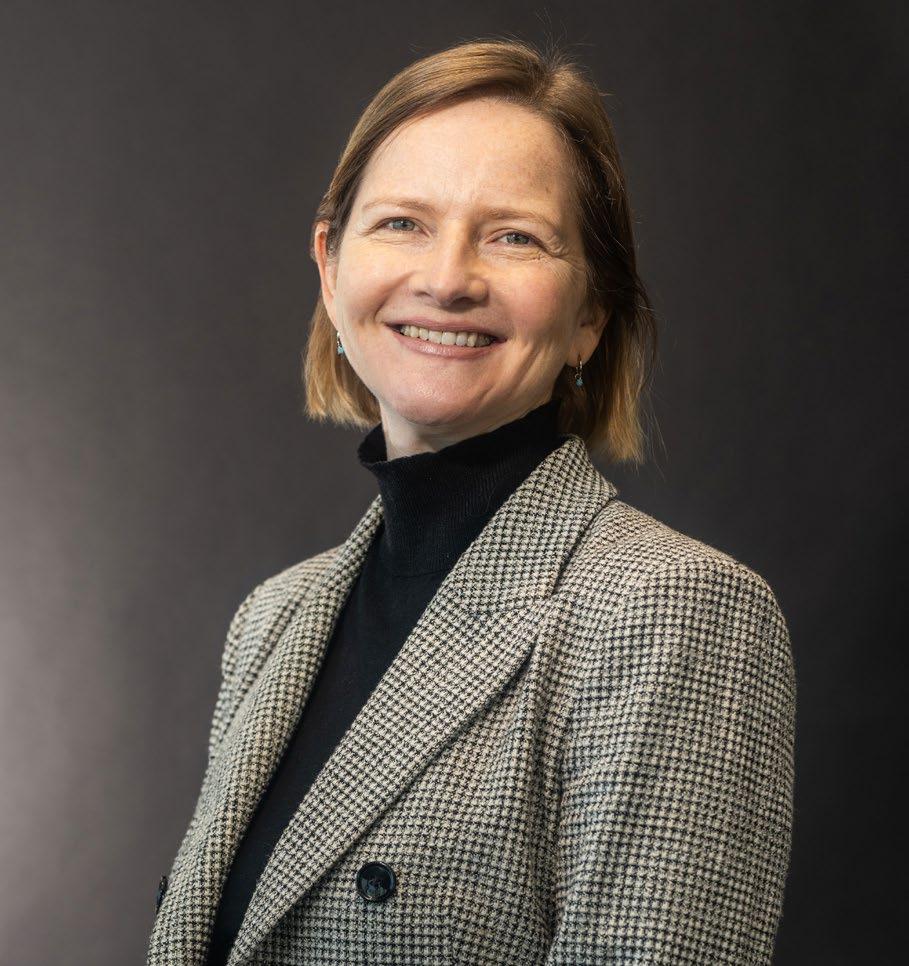
money – both for us and our customers – over the long term, so we feel it’s important to invest in the technology now.
As part of the customer engagement program for our current pricing submission, we presented a number of cost options for a digital meter rollout and asked customers how they would like to see the rollout of digital meters take place. Our customers told us they’d like to be better informed of disruptions, including better visibility of leaks on their premises and receive timely warnings when there are wider network disruptions.
By installing advanced network monitoring and digital meters across our whole service region we’ll be able to provide more customers with access to near real-time water usage information and notifications of any irregularities. This

will allow issues to be detected and fixed quickly, and provide customers more control over their water use and bills.
Through our customer engagement, we found that when customers understood the benefit of digital meters, they supported an increase in their bill to pay for the meters.
What are the next steps for the digital metering program, and how do you plan to integrate new technologies as they emerge?
We’ve recently moved out of the test and trial phase and into network-wide rollout. Our aim is to replace around 1 million traditional water meters with upgraded digital meters by 2029. Our cross-functional project teams have been preparing for this milestone and have been working closely with our customer and delivery teams to support a smooth rollout of digital meters.
In this early stage, our approach is slow and steady, with a plan to scale up deployment from 2025. This approach allows a purposeful ramp-up in digital
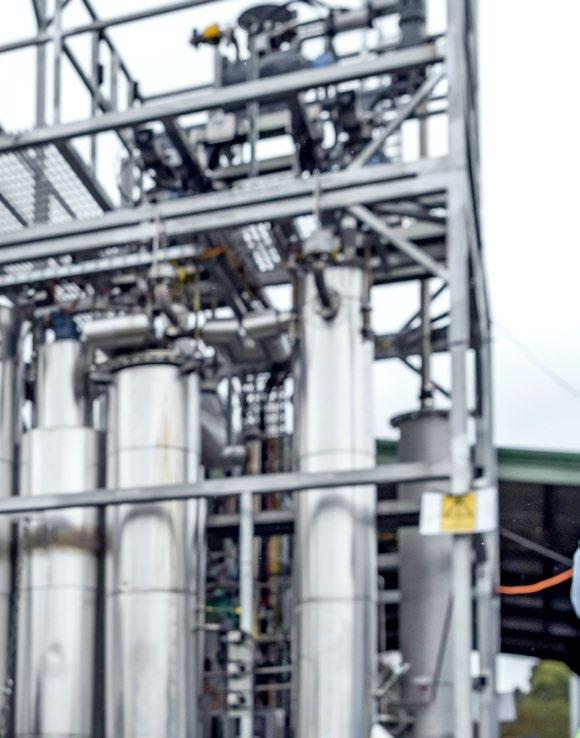
"South East Water has established a plumbing referral process to offer free virtual leak audits and identify the location of leaks"
meter exchanges, giving us the necessary time to adapt to new work processes and system changes. We’re also keen to gain insights into our customers’ experience of the enhanced meter exchange process.
In terms of integrating new technologies, because the meters use IoT technology, we can remotely deploy software updates that allow us to integrate new features, address any issues and ensure we’re continuing to deliver the best experience for our customers.
Can you comment on the collaboration between the three metropolitan Melbourne water utilities in the digital metering joint program?
We partnered with Yarra Valley Water and Greater Western Water to form the Digital Metering Joint Program. Together, we worked to understand the views of our customers in relation to the future of water meters and the benefits they could receive, trial new technologies in metering and communications, understand the financial implications of digital meters and develop a customer-generated value proposition and insights to guide engagement planning and inform the business case for digital meters.
We found three of the top six drivers of customer satisfaction related to leak alerts - being alerted about potential leaks, knowing their utility was across their water usage and costs, and knowing that their utility would address and fix problems.
As we look to the future, we’re still partnering with other water utilities to support the widespread adoption of dig-
ital meters. Our commercialisation partner, Iota, recently announced that they’re teaming up with Barwon Water to accelerate and expand its digital meter rollout to save water. Through the partnership, they’ll be supplying Barwon Water with our South East Water-designed meters, and our enterprise IoT platform, called Lentic, to optimise device management and streamline alarms.
We’re really excited to be able to share the technology and systems we’ve developed with other water utilities both locally and globally, through Iota. We’ve invested in and developed our digital utility program for many years now, and we believe we have a great, integrated solution that really meets the needs of the water industry. We recognise that now is the time to take action to secure our water supplies for future generations, so we can deliver a reliable, sustainable water supply in the face of population growth, changing rainfall patterns and a warmer and drier climate.
A digital, connected network is a key part of the solution, and we’re proud of the work we’re doing at South East Water to innovate, and look to the future as custodians of our water network.
"South East Water is excited to be able to share the technology and systems developed with other water utilities both locally and globally"
The digital transformation of watersheds generates management systems that are not only efficient and effective, but also equitable and sustainable. However, there needs to be a balance between technological implementation and cultural change.
River basin management has come a long way since the days when diviners used ancestral techniques to search for groundwater with their hazel rods. Back then, local communities relied on empirical observation and knowledge passed down from generation to generation to understand and manage water resources. Locals were able to predict weather phenomena, identify drought patterns, and anticipate river floods based on subtle changes in the environment thanks to their daily observations. Although this ancestral knowledge was valuable, it had its limitations in terms of accuracy and scope.
As science and technology advanced, hydrology began to follow more systematic and quantitative approaches. The introduction of conventional hydrological models, such as those developed by Darcy, Horton, Clark and the SCS, marked a significant leap forward in terms of a more accurate mathematical understanding of hydrological processes. These models provided scientists with a way to quantify phenomena such as snowmelt, groundwater infiltration, and the
The digital revolution has transformed watershed management, ushering in a new era of advanced technologies and massive data
rainfall-runoff process, although these processes remained difficult to measure and model due to their stochastic nature and spatial and temporal variability. The lack of accurate data and the inherent complexity of natural systems limited the capability of these models to provide accurate predictions.
The digital revolution has further transformed river basin management, heralding a new era spearheaded by advanced technologies and massive data. Hydrometeorological satellites now afford unprecedented views of the Earth's atmosphere and land surface, providing real-time data on precipitation, soil moisture, and changes in snow cover. This information has significantly enhanced the accuracy of hydrological models, enabling scientists and water utilities to make better-informed, more timely decisions.
In this context, Decision Support Systems (DSS) have emerged as crucial tools in modern river basin management. These systems combine data from multiple sources, including satellites, weather stations and ground-based sensors, and use advanced mathematical models to furnish predictions and recommendations. Artificial intelligence has taken these systems to a new level, enabling the analysis of large volumes of data and the identification of complex patterns
that traditional models were unable to grasp. Artificial intelligence (AI) can anticipate the behaviour of continuous variables and analyse relationships in stochastic processes, helping to assess risks and optimize water management. In addition, AI and big data analytics bring unprecedented potential to adapt to climate change impact. AI can identify trends and patterns that indicate changes in climate conditions by analysing vast amounts of historical and current data. This helps to predict and mitigate the impact of floods and droughts with greater accuracy and greater anticipation. Therefore, optimized reservoir management becomes crucial, as these water systems play a vital role in providing water security by attenuating floods and accumulating water to supply the population, irrigate fields, and generate hydroelectric power. Thus, efficient reservoir use planning can avert devastating floods and ensure that sufficient water is available during periods of drought. Digitalisation, new mathematical models and artificial intelligence can assist in optimizing reservoir management, analysing flood risk and maximizing water availability for diverse needs.
Despite these advances, there are significant challenges to the implementation of digital technologies in river basin management. First, the density of sensors in watersheds is much lower than in urban environments, making it difficult to create accurate digital twins. These digital twins, which are virtual representations of physical systems, require detailed, real-time data to be effective. Accordingly, the number of sensors in river basins is one of the areas where the
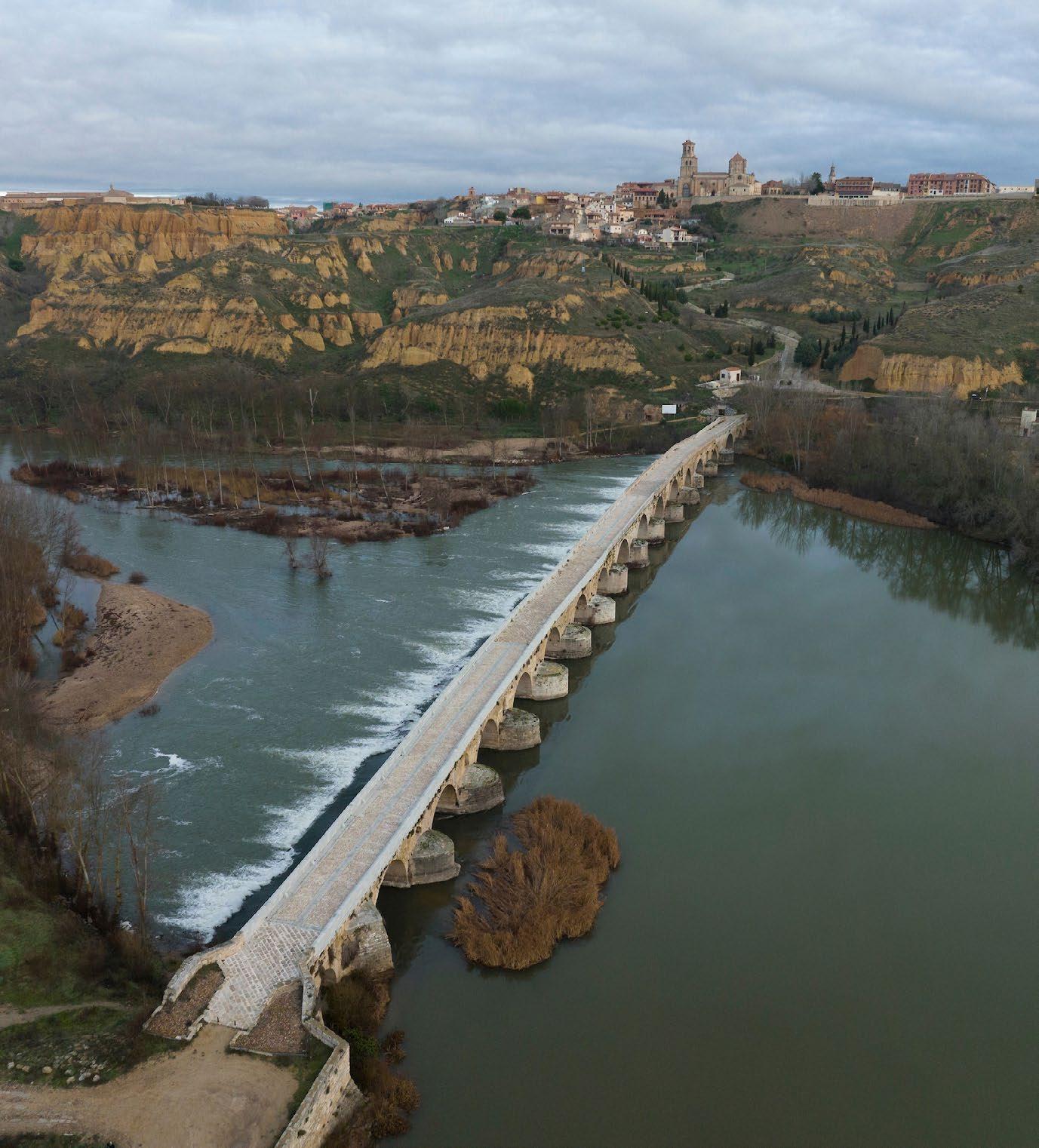
As we advance towards a more digital future, the combination of traditional methods and modern technologies can offer the best solutions
difference between urban and non-urban water is most striking. In a city, it is common to find a dense array of sensors that monitor the status of the drinking water and sanitation networks as well as electromechanical installations, WWTPs and DWTPs. However, in a river basin, the density of these devices can be up to a thousand times lower. This not only hampers real-time data collection, but also limits the ability to detect and anticipate critical changes in the hydrological environment. Therefore, investment in installing sensors is essential to bridge this gap and improve hydrological modelling accuracy.
Another major challenge is the calibration of rating curves, which usually provide flow results and are essential to connect hydrological models with the measured reality. These curves establish the relationship between water levels and flow rates in rivers, yet they must be finely calibrated to ensure the models are accurate. Acquiring precise data for this task remains a significant hurdle as calibration requires not only extensive data, but al-
XVPGA is one of the best examples of improvement in the face of the challenges of digital water management in river basins
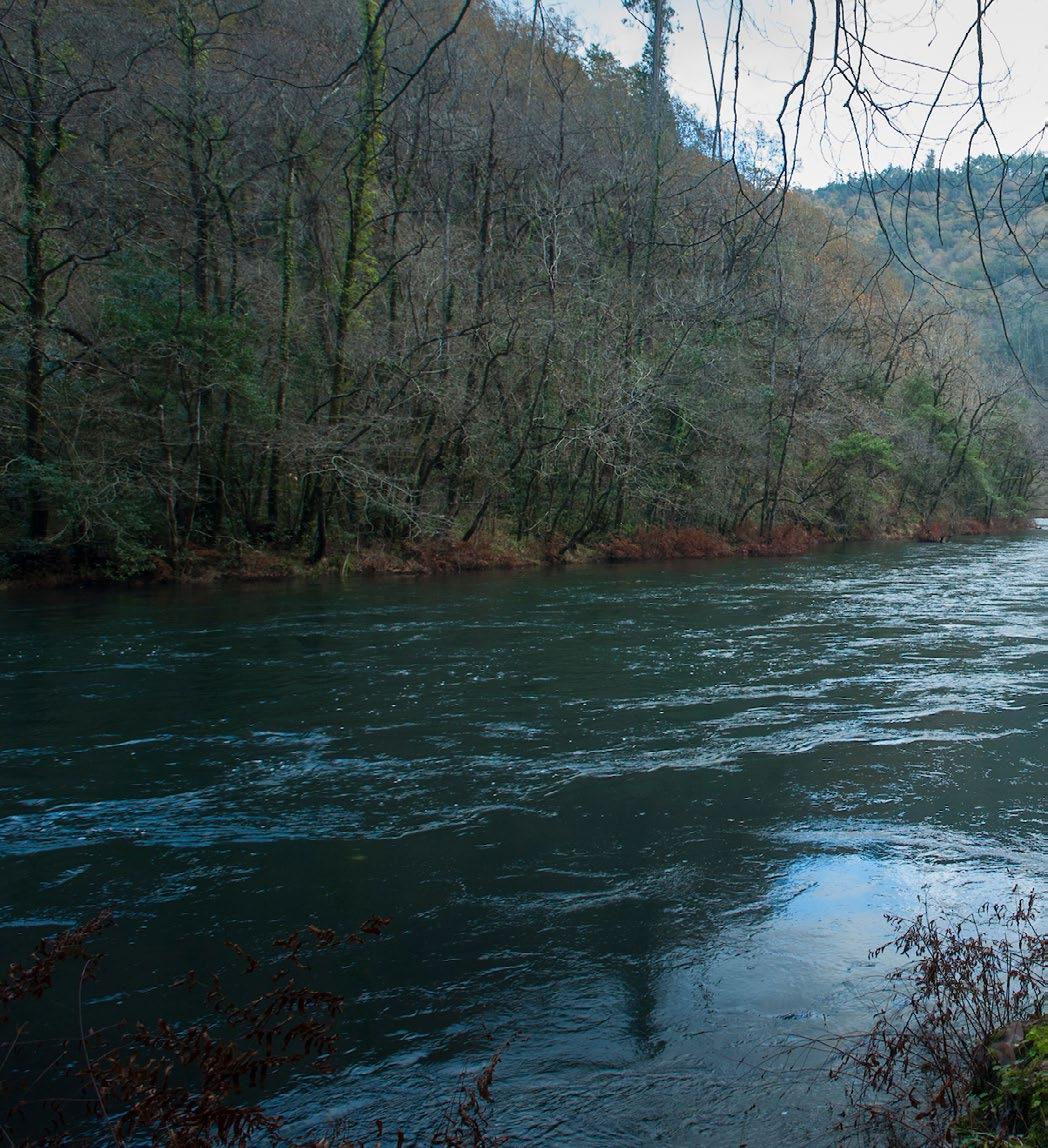
so the ability to adjust models to specific local conditions, which can be extremely complex due to the spatial and temporal variability of hydrological phenomena.
In these cases, digital transformation has significantly improved early warning systems for floods and droughts by harnessing sensor data and hydrological models to predict the occurrence of extreme events and provide the authorities and the general public with advance warning. AI applied to the modelling of meteorological phenomena, such as the AIFS model, has proved to be especially effective in pinpointing patterns that
precede convective events that are likely to generate floods, thus improving the capacity for anticipation and response. Similarly, drought warning and resource optimization systems use climate and water use data to forecast shortages and propose sustainable management strategies. However, the implementation of these systems requires robust infrastructure and effective coordination between different agencies and tiers of government.
Along these lines, the Xylem Vue powered by GoAigua platform (XVPGA) has become one of the best examples of how to tackle the challenges posed by digital
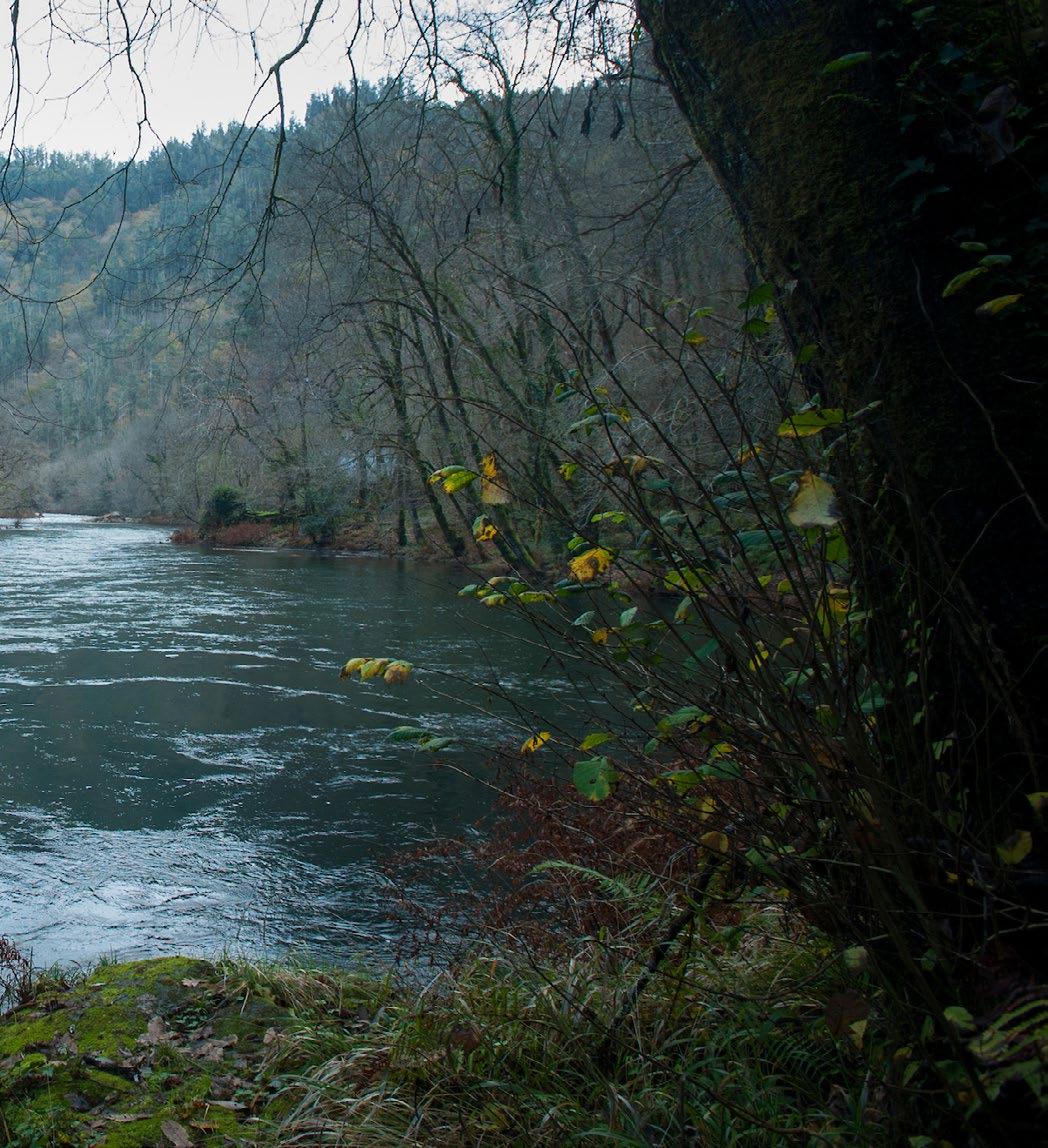
water management in river basins. The platform is the result of a partnership between Idrica and Xylem and incorporates specific modules and algorithms that enable real-time management of extreme events, as well as medium- and long-term hydrological planning through dashboards and a user-friendly GIS viewer.
Xylem Vue powered by GoAigua is designed to offer outstanding performance in massive data analysis, time series and high-resolution hydrometeorological satellite mapping, providing accurate analyses in the shortest possible time, while guaranteeing high-quality, traceable results.
AI can identify trends and patterns that indicate changes in climate conditions by analysing vast amounts of historical and current data
The platform can perform detailed spatial and temporal analyses on the different integrated meteorological models. It can also calculate IDF (Intensity-Duration-Frequency) curves for high-intensity events, generating hydrographs at both deterministic and probabilistic levels, and assessing the flood risks associated with peak flows. It uses statistical processing and AI with historical data, together with models for meteorological reanalysis six and seven months in advance and for climate change scenarios to generate water planning models that improve decision-making in the medium and long term.
The platform includes a powerful hydrological alert management and reporting module, simplifying the visualization
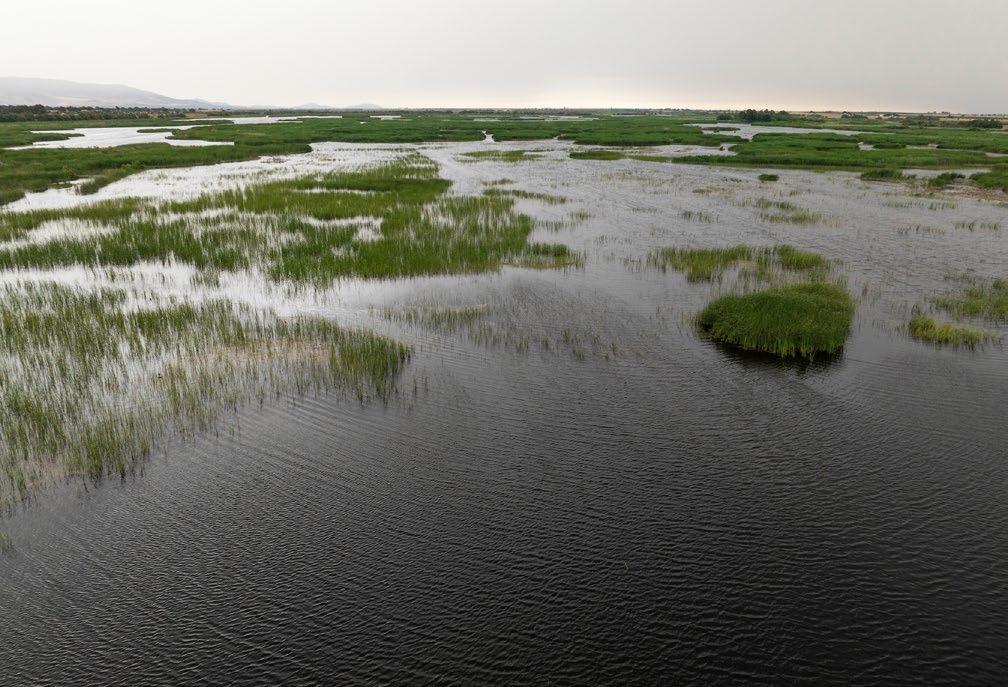

and monitoring of extreme events for emergency management stakeholders.
The use of XVPGA systematizes and standardizes the complex process of hydrological analysis, creating a robust database for informed decision-making. This helps basin managers manage their surface water bodies, groundwater bodies and reservoirs, providing hydraulic and water security for their operating areas, and to respond holistically to watershed challenges.
Cultural change as the cornerstone of digital transformation
However, water resource management cannot solely rely on technological solutions. It is critical to understand that true digital transformation in river basin management is not only about embracing new technologies, but also about shifting the way we think, work and cooperate. Technology, both at the hardware and software level, is a crucial part of this transformation, but real success hinges on aligning all the stakeholders involved and adopting new working methods. Collaboration between scientists, engineers, water utilities and other players is key to making the most of the opportunities afforded by digital transformation, especially for decision makers.
There is no doubt that artificial intelligence, through its ability to analyse massive data trends and behaviours, has emerged as a powerful tool in water management, as it is capable of unlocking hidden relationships and providing new insights that improve water resource planning and management. However, the implementation of these technologies requires investment in training and capacity building to ensure that water practitioners can take full advantage of them.
The move towards digital transformation also implies significant cultural change within organizations and communities involved in water resource management. Embracing advanced technologies and new working approaches requires an open mindset and readiness for change. Stakeholders must be willing to work together more closely, share data and information, and adopt interdisciplinary approaches to solving complex problems. This cultural shift is pivotal to effectively mainstreaming new technologies and maximizing their positive impact on watershed management.
As we advance towards a more digital future, it is important to recognize that combining traditional methods and modern technologies can provide
the best solutions. Traditional models provide a solid grounding in knowledge and understanding, while digital technologies and AI can offer new insights and capabilities to improve water resource management. This interplay of approaches can lead to more robust, effective solutions to river basin management challenges.
Therefore, education and training are essential elements of this transformation. Water practitioners must be equipped with the skills and knowledge required to use new technologies effectively. This includes both technical training in the use of digital tools and AI models, as well as the development of skills for critical analysis and informed decision-making. Universities and research centres have a crucial role to play in preparing the next generation of water utility managers, ensuring that they are well-versed in meeting the challenges of an increasingly digital world.
Investment in research and development is equally crucial. Hydrology is a constantly evolving science, and continuous improvement of models and technologies is imperative to keep abreast of changes in the natural environment and
the demands of society. Partnerships between academia, government agencies and the private sector can drive innovation and develop new solutions for water resource management.
In conclusion, we have evolved from being dependent on traditional observations and empirical knowledge to using advanced technologies and artificial intelligence models to manage our river basins. This has significantly enhanced our ability to forecast and respond to extreme events, optimize water use, and manage our water resources more sustainably. However, the real revolution does not lie in technology alone, but in people's ability to adapt and work together in this new digital environment. The only way we can effectively address the challenges of watershed management in the 21st century is through a holistic approach that combines technology, knowledge, and cooperation. We must continue to invest in research and development, foster training and
The real revolution does not lie in technology alone, but in people's ability to adapt and work together in this new digital environment
education among water practitioners, and advocate policies that promote the uptake of advanced technologies. This will enable us to take full advantage of the opportunities afforded by digital transformation and to guarantee sustainable, resilient management of our valuable water resources. Ultimately, the goal is to create river basin management systems that are not only efficient and effective, but also equitable and sustainable, thus ensuring that future generations can enjoy and benefit from this resource while being shielded from the effects of extreme events.


Water pollution is a growing global issue driven by rapid urbanization and agricultural intensification. Addressing the challenge of treating and purifying contaminated water requires solutions that are both efficient and cost-effective. Innovative and efficient water treatment solutions have never been more critical. A crucial step in water treatment processes is water filtration, which uses filter media to remove impurities, contaminants, and suspended solids from water. Advanced filtration technologies are essential components of modern water treatment systems, improving operational efficiency and reducing resource consumption.
Moderated by Cristina Novo, Technical Editor at Smart Water Magazine, the webinar highlighted the urgent need for innovative and efficient water treatment solutions. Alexandre Branthonne, Sales Support Coordinator for Filtralite, Saint-Gobain, kicked off the presentations by introducing Saint-Gobain and Leca. Based in France, Saint-Gobain designs, manufactures, and distributes materials and services for the construction and industrial markets. With a presence in 85 countries and over 190,000 employees, Saint-Gobain is one of the top 100 industrial groups globally, operating around 950 production sites. In 2022,
Addressing the challenge of treating and purifying contaminated water requires solutions that are both efficient and cost-effective
In June, Smart Water Magazine teamed up with Filtralite to host an innovative webinar titled “Next-Gen Water Filtration: Harnessing Filtralite’s Performance.” This online seminar provided attendees with a comprehensive understanding of Filtralite’s groundbreaking water filtration media developed by the Saint-Gobain group.
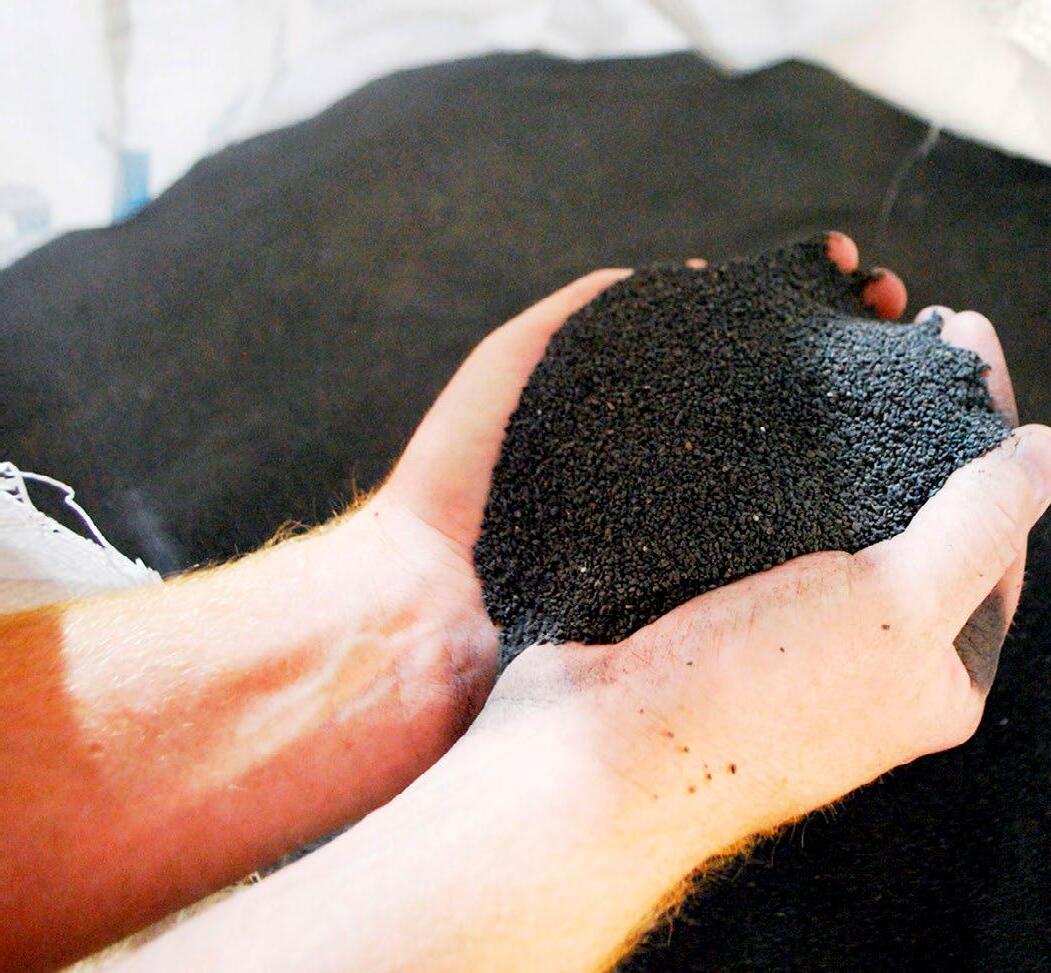
Saint-Gobain recorded sales of €51.2 billion, a 16% increase from €44.2 billion in 2021.
Meanwhile, Leca, part of the SaintGobain Group, is the number one supplier of expanded clay lightweight aggregate in Europe for infrastructure, housing and water management projects. The company is present in more than 12 European countries.
Next, Mohammed Kastawy, Area Sales Manager for Filtralite in the Middle East, presented Filtralite’s innovative solutions for drinking water, desalination pre-treatment, and wastewater treatment. Filtralite media boasts higher porosity compared to traditional materials like sand and anthracite, offering benefits such as lower initial head loss, slower head loss buildup, higher storage

capacity, and reduced backwash rates. These properties extend filter runs, minimize energy and water consumption, and lower operating costs.
Filtralite can be utilized in both mono and dual media filters, with configurations like Filtralite Mono-Multi and Filtralite Mono-Multi Fine further enhancing filtration efficiency and production capacity.
Kastawy also emphasized the specific benefits of Filtralite in desalination processes, highlighting both operational expenditure (OPEX) and capital expenditure (CAPEX) savings. Filtralite reduces the need for backwashes by two to four times, allows for higher filtration velocities, and ensures more biologically stable water, which decreases biofouling and extends the lifespan of reverse osmosis (RO) membranes. Additionally, the frequency of cartridge filter cleaning and replacement is reduced, and higher suspended solids rates are manageable in input water. On the CAPEX front, Filtralite's lighter weight and higher efficiency mean fewer filtration cells are needed, leading to savings on pumps, concrete, and steel, as well as requiring smaller backwash pumps.
Kastawy showcased several case studies demonstrating Filtralite’s superior performance. At Thames Water, the adoption of Filtralite Pure Mono-Multi
Filtralite's lighter weight and higher efficiency mean fewer filtration cells are needed, leading to savings on pumps, concrete, and steel
over traditional sand filters significantly mitigated issues caused by algal blooms, reduced head loss, and extended filter cycles. This innovation led to considerable cost savings and operational efficiency improvements.
“With new filter materials, and especially Filtralite Pure Mono Multi, we have increased the capacity of our water works without having to increase the actual footprint. Our research has been profitable,” said Michael Chipps, Chief Scientist at Thames Water.
Another notable case involved the Beni Saf desalination plant in Algeria. Faced with high levels of suspended solids due to concentrated rainfall, the plant replaced sand with Filtralite in its filtration stage. The results were remarkable: a 200% increase in filter cycle duration, a 45% reduction in production losses, and substantial improvements in water quality and operational costs.
Concluding benefits of Filtralite
- Filtralite reduces the need for backwashes by two to four times, allows for higher filtration velocities, and ensures more biologically stable water
Finally, in his concluding observations, Kastawy highlighted that Filtralite stands out as a direct and easy replacement for traditional filter media, addressing common issues such as fast clogging, poor water quality, and high energy consumption. Its implementation leads to significant savings in operating expenses and maintenance costs.
The online seminar concluded with an extensive Q&A session, in which the participants had the chance to ask the speakers their questions regarding water filtration and Filtralite’s properties and solutions.
EXCELLENCE IN WATER INNOVATION: DR AMY E. CHILDRESS AWARDED 2024 CLARKE PRIZE PERSON
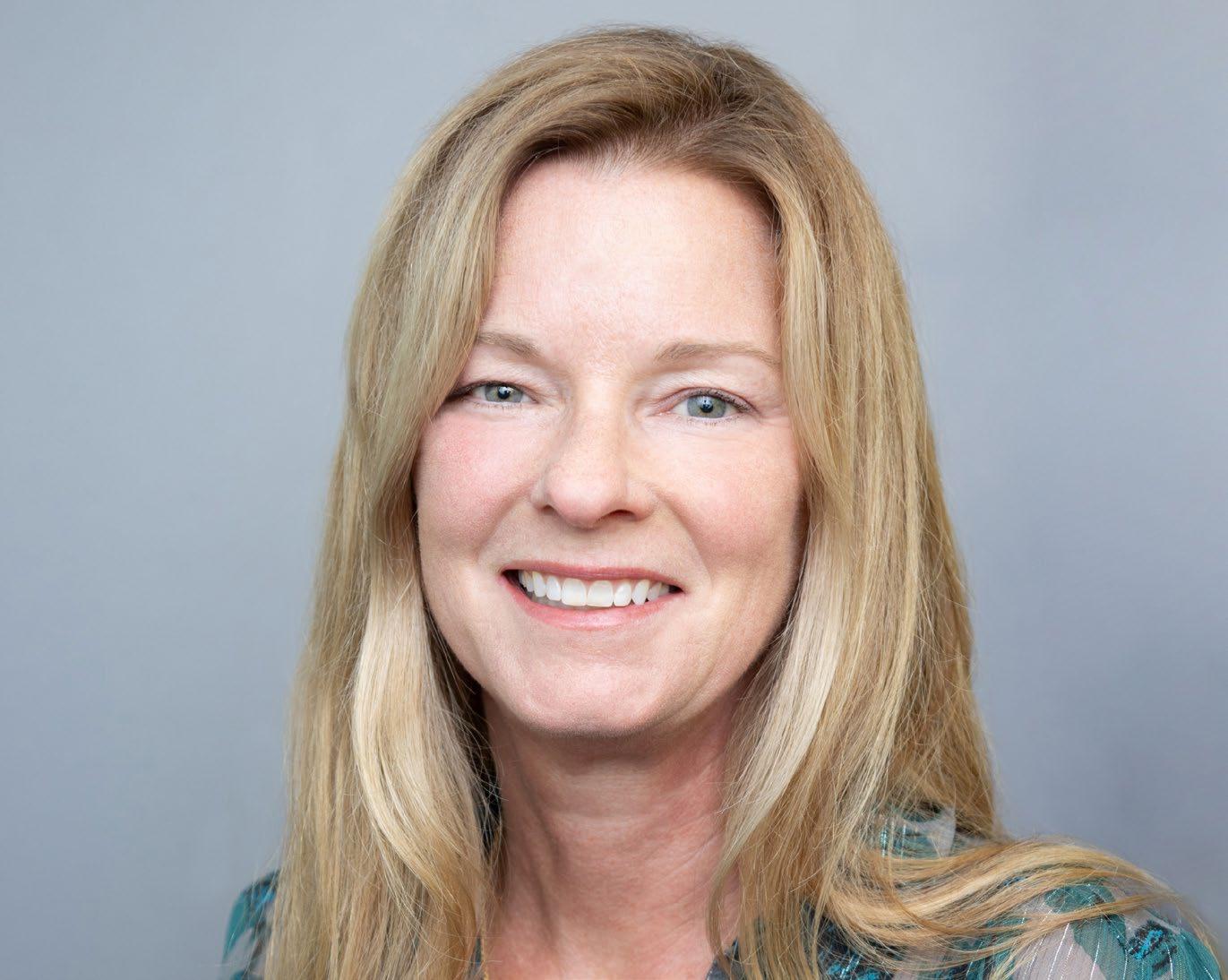
Dr Amy E. Childress, a distinguished professor of Civil and Environmental Engineering at the University of Southern California (USC), has been awarded the 2024 Clarke Prize by the National Water Research Institute (NWRI). This prestigious honour recognizes her groundbreaking contributions to the fields of potable water reuse and desalination technologies, addressing the critical global challenge of freshwater scarcity.
At USC, Dr Childress leads the ReWater Center, where she and her team pioneer innovative solutions to complex issues related to energy use and contaminants in water reuse and desalination. As the Academic Lead for the Water Reuse Consortium, Dr Childress collaborates with industry partners to advance water reuse technologies and foster a skilled and diverse technical workforce.
Dr Childress’s dedication to sustainable water management is evident in her leadership roles and numerous accolades. She is a past president of the Association of Environmental Engineering and Science Professors and has served on the US EPA Science Advisory Board. In addition to her research and advisory roles, Dr Childress is an accomplished academic editor, serving as Co-Editor-in-Chief of Water Reuse and Co-Editor of Desalination
Her influence extends globally as she chairs and participates in expert panels focused on potable reuse and seawater desalination. Her extensive contributions to research, education, and mentoring have earned her recognition as a leading voice in the water sector. She will deliver the 2024 Clarke Prize Lecture during the award ceremony on October 5, 2024, in Irvine, California.



















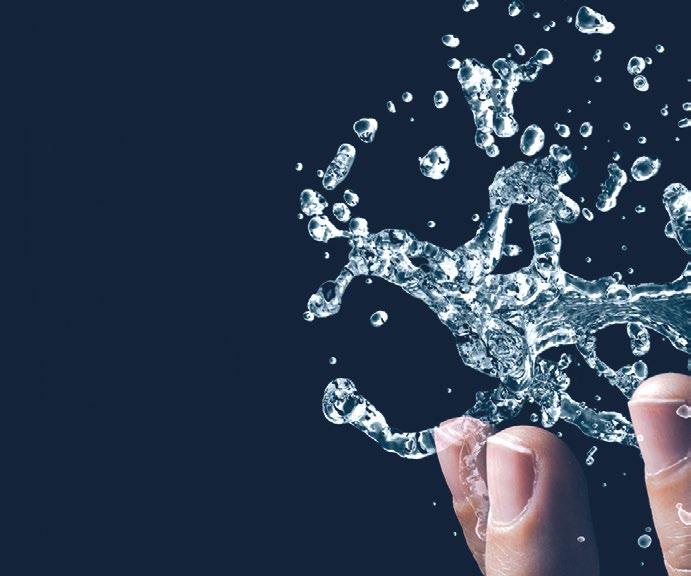





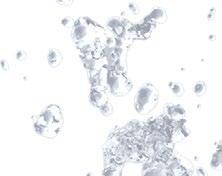

















Monitor, detect and reduce water loss with data-driven insights and analytics. Enhance your network performance, save water and empower a sustainable future.
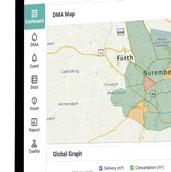
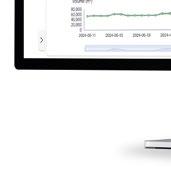


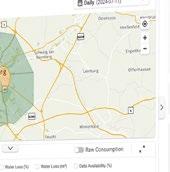


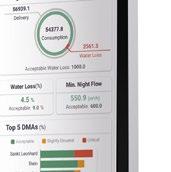
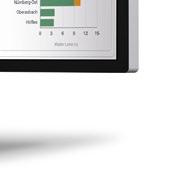

A success story in the Cruz de Gracia housing development: a milestone in the digitalisation of water management Hidroconta has taken a significant step in the measurement and management of water with the successful installation of its advanced smart water meter, Centaurus, in the Cruz de Gracia housing development in Valencia, Spain. This initiative allows remote monitoring of water consumption, improving the efficiency and management of this vital resource.
The housing development has been equipped with 136 Centaurus devices using NB-IoT (Narrowband Internet of Things) technology, enabling the complete digitalisation of water consumption in the area. The NB-IoT network stands out for its ability to provide extended and reliable coverage in difficult areas such as basements and rural areas. This technology, which uses a narrowband spectrum, ensures robust connectivity in challenging environments, optimizing signal penetration.
The Centaurus devices developed by Hidroconta are optimized for low power consumption, allowing the batteries to last for several years. This is crucial for applications that require long-term monitoring without human intervention. With a battery life of more than 15 years with daily communications, Centaurus meters exceed regulatory requirements and offer a long-lasting and efficient solution.
The Centaurus provides accurate, real-time monitoring of water consump-
The NB-IoT network stands out for its ability to provide extended and reliable coverage in difficult areas such as basements and rural areas
tion, not only recording and sending consumption data, but also issuing alerts to prevent invisible leaks. This optimizes network management and helps conserve water resources.
These meters combine the accuracy of a mechanical meter with the advanced capabilities of a smart device, offering a state-of-the-art solution for monitoring
and controlling water consumption. In addition to recording consumption in real-time, users have access to detailed data through a software solution, allowing effective monitoring with daily, weekly or monthly patterns.
One of the most impressive features of the Centaurus meters is their ability to detect potential problems before they lead to a crisis. Users can receive immediate alerts about leaks, breaks or other problems, allowing them to take quick action to avoid
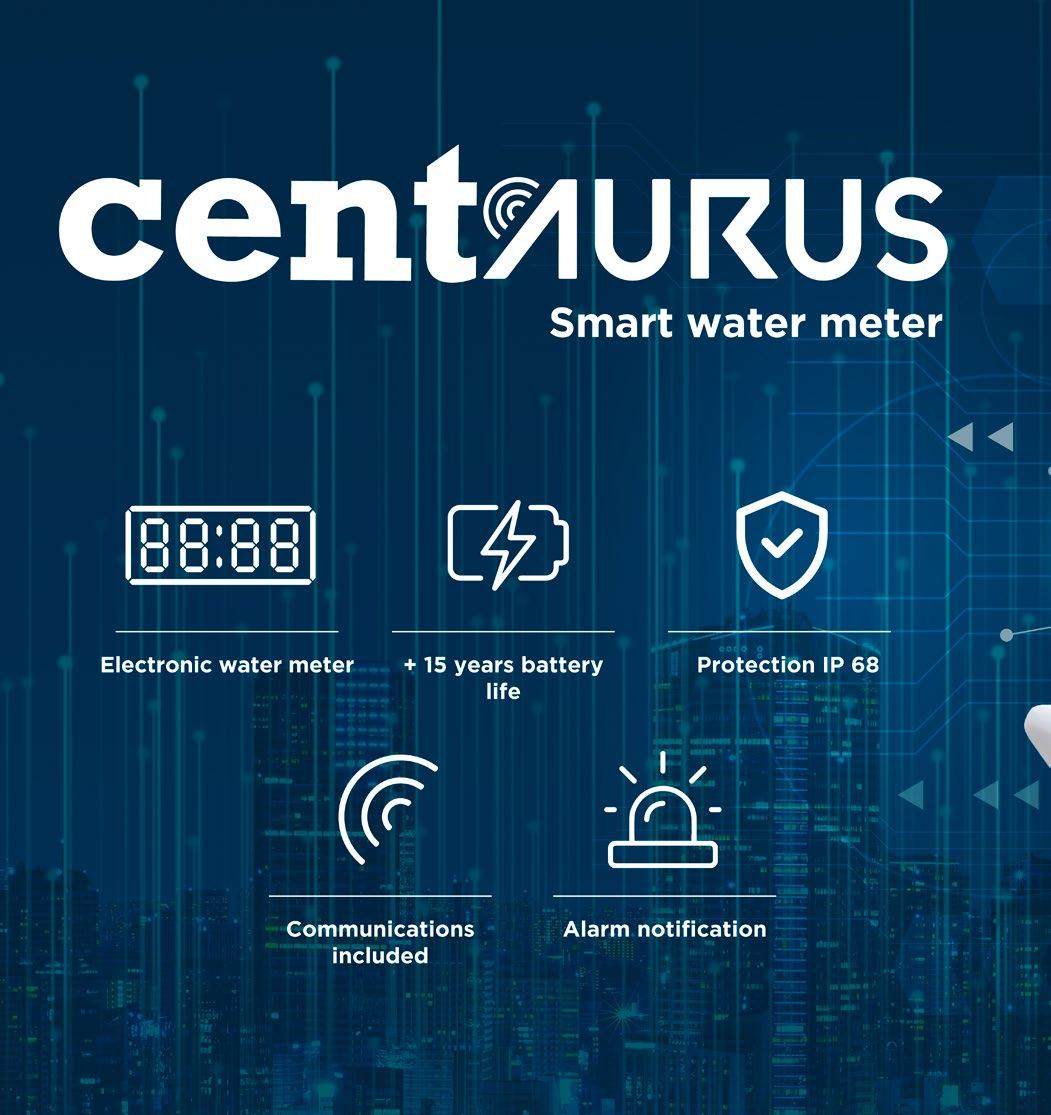
The Centaurus range of water meters, developed by Hidroconta, enables precise, real-time monitoring of water consumption and remote management, optimizing water resource use and network operations.
unnecessary water loss. Thanks to their high accuracy, these meters can identify even the smallest leaks, facilitating predictive maintenance and contributing to water resource conservation.
Hidroconta has developed the Centaurus meter with two different mechanical technologies: Centaurus 100 series, with single-jet technology and
Centaurus 300 series, with volumetric or fill and drain measuring technology.
J Centaurus 100 series water meters: single jet technology
The Centaurus 100 series is an electronic meter that uses the operating principle of the single jet system. Here, the water flow impacts directly on a turbine, the rotation of which is trans-
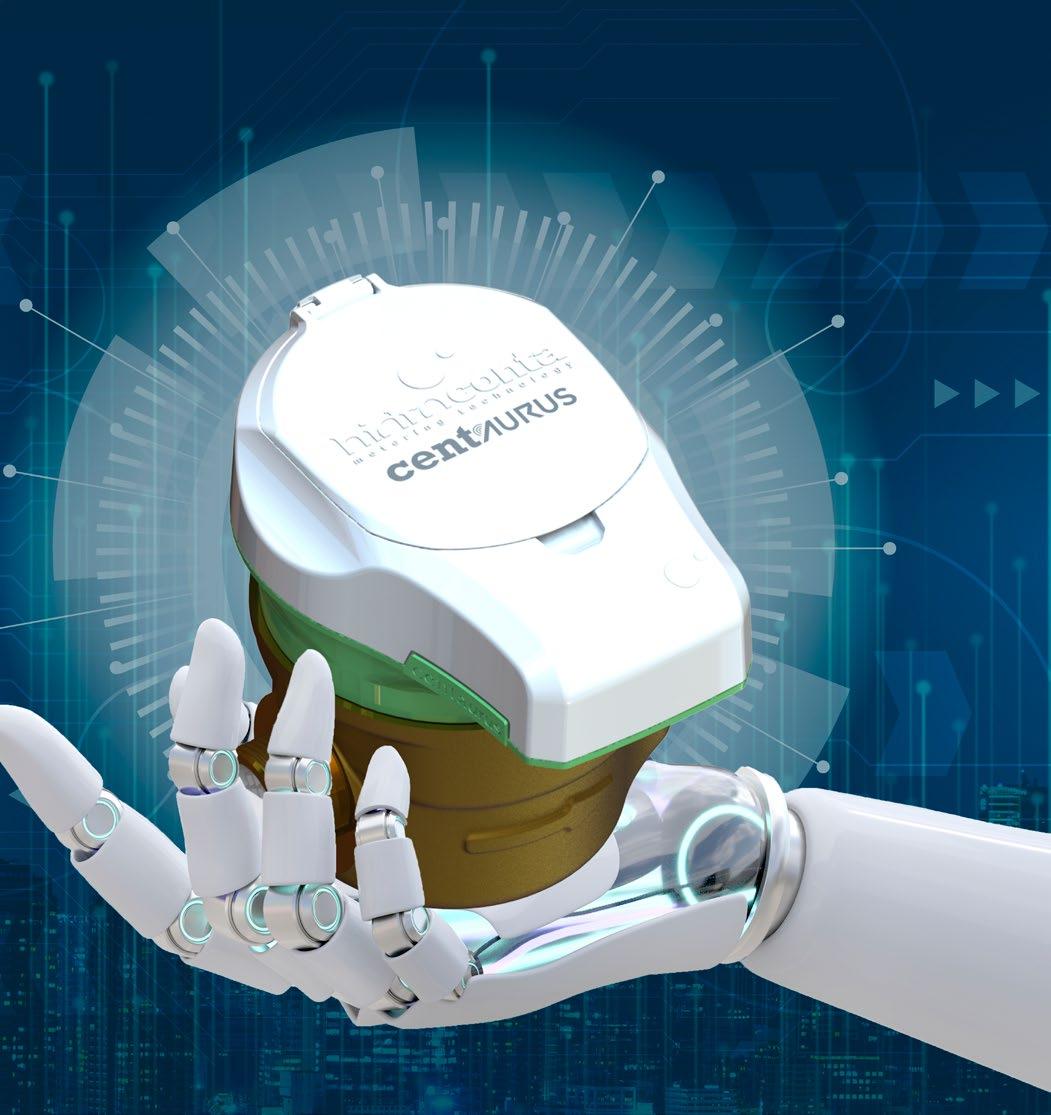
lated into accurate data thanks to tunnel magnetoresistance effect sensors integrated into the electronic totalizer.
Centaurus 100 series meters are available in DN-13, 15 and 20 mm gauges, with copper alloy bodies, and are exceptional in their ability to operate without the need for straight lines at the inlet or outlet, with a maximum allowable pressure of 16 bar.
J Centaurus 300 series meters: fill and drain measuring technology
The Centaurus 300 series uses a technology based on counting the filling and emptying of a chamber of known volume. An oscillating rotary piston in the measuring chamber, driven by the water flow, generates accurate data that is shown on the LCD display. These meters are available in DN-13 and 15 mm gauges with composite bodies, and DN-13, 15, 20, 25, 32 and 40 mm with copper alloy bodies. Like the 100 series, they do not require straight lines for operation and can withstand a maximum pressure of 16 bar.
Certifications and standards met by Centaurus
Both families of meters have CE marking, in accordance with applicable Directives and have EU Type Examination
Users can receive immediate alerts about leaks, breaks or other problems, allowing them to take quick action
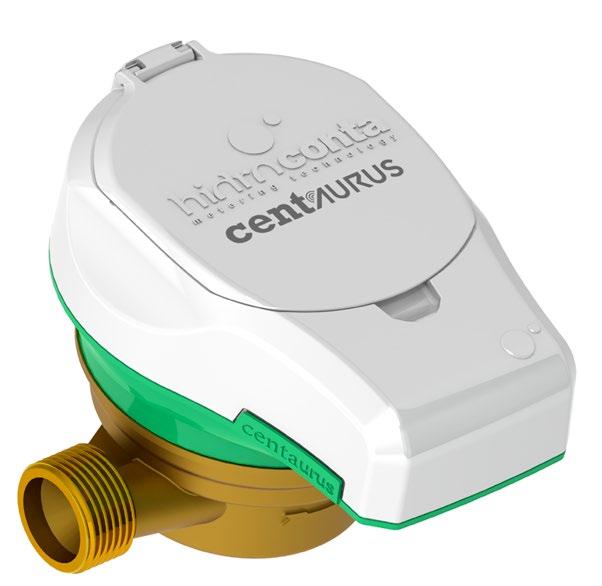
certificates as equipment suitable for making them available on the market for the measurement of clean water:
J Directive 2014/32/EU (MID): DIRECTIVE 2014/32/EU OF THE EUROPEAN PARLIAMENT AND OF THE COUNCIL of 26 February 2014 on the harmonisation of the laws of the Member States relating to the making available on the market of measuring instruments (recast).
J Directive 2014/53/EU (RED): DIRECTIVE 2014/53/EU OF THE EUROPEAN PARLIAMENT AND OF THE COUNCIL of 16 April 2014 on the harmonisation of the laws of the Member States relating to the making available on the market of radio equipment.
J Directive 2011/65/EU (ROHS): DIRECTIVE 2011/65/EU of the European Parliament and of the Council of 8
Centaurus
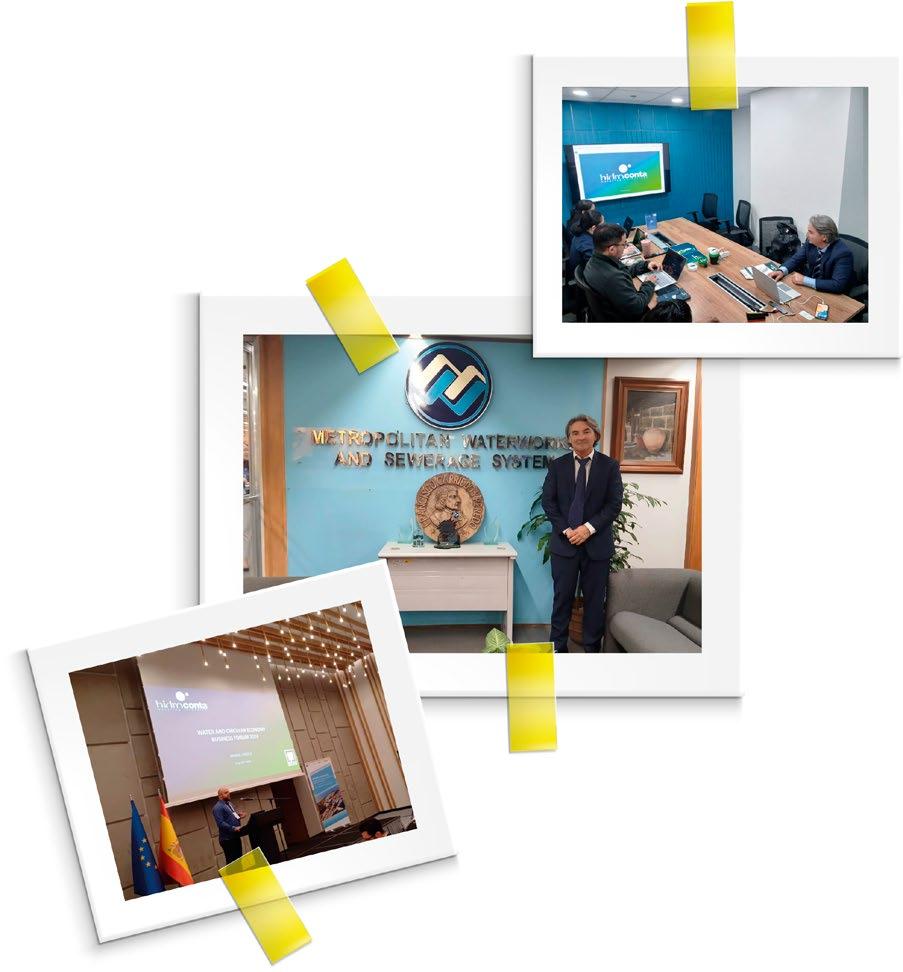
June 2011 on the restriction of the use of certain hazardous substances in electrical and electronic equipment.
Advanced technology and connectivity
From a technological point of view, the Centaurus range of meters integrates a series of features that place them at the forefront of metering and water management technology.
First of all, they have native LTE-NBIoT communications. NBIoT (Narrow Band Internet of Things) is a cellular communication technology of the LPWAN (Low Power Wide Area Network) family. Like all communications systems in this family, it is characterized by extremely low power consumption and the long communication distance it can
reach, which facilitates its mass deployment and makes it highly reliable and robust. Since this is a mobile technology, the user does not have to worry about the maintenance of the communications network, as this would be the task of the telephone companies.
As an added advantage, we can point out that Centaurus incorporates remote reprogramming of both the internal FW of the meter and the modem itself. It is also compatible with SWAPING (change of service operator remotely and without changing the SIM). Both functions guarantee compatibility with the network throughout the lifetime of the meter.
Hidroconta wanted to ensure the connectivity of all its meters by providing them with WM-Bus (868 MHz) short-

range communications. WM-Bus is a well-established standard in the metering world. It allows drive-by and walkby systems to be linked. This provides a simple and inexpensive way to have remote reading in "shadow" areas of mobile network coverage.
With WM-Bus we can also set up fixed network systems, i.e. a meter communicating with a concentrator that acts as a gateway between WM-Bus and GPRS or NBIoT. This architecture is interesting in installations with a high concentration of meters such as residential buildings. It eliminates the need to have a SIM for each unit installed, and the concentrator's SIM is the only one. This means significant savings.
The maintenance of the equipment is done by using a Radio - Bluetooth
Hidroconta’s meters have CE marking and EU Type Examination certificates as equipment suitable for the measurement of clean water
interface that we call Caronte. This is a small device that, connected to a cell phone and through our APP, allows us to communicate directly with the meter and perform maintenance actions such as configuration, data download, communications status check, etc.
International projection and presentation of Centaurus
Hidroconta's commercial team is working hard to promote Spanish technology in different international markets. The Centaurus smart meter, with its technology easily adaptable to different environments and markets, and with the highest quality standards, is presented as a keystone for global water management.
Countries such as the Philippines, Thailand, Denmark, Greece and several others in the American continent have shown interest in the new product developed by Hidroconta. This international projection underlines the versatility and
robustness of Centaurus, positioning it as a worldwide leader in the water management sector.
Conclusion
Hidroconta's Centaurus smart meter represents a significant breakthrough in water management efficiency, seamlessly integrating advanced technology with innovative features that promise to transform how we measure and utilize this essential resource. With its accuracy, real-time monitoring capabilities and problem detection, Centaurus is an essential tool for water conservation and sustainable management.
The project in the Cruz de Gracia housing development is a clear example of Hidroconta's success and excellent progress in the digital transformation of water services, showing how technological innovation can transform the management of essential resources in modern communities.

“Our vision is becoming a model utility of excellence in reliability, resilience, and environmental stewardship”
The Miami-Dade Water and Sewer Department (WASD) is undergoing a transformative journey, spearheaded by Director Roy Coley, to enhance the resilience and sustainability of its water and wastewater infrastructure. With an $8.6 billion Capital Improvement Program, WASD is addressing critical needs, including compliance with the Ocean Outfall Legislation and the implementation of innovative water reuse strategies. These efforts not only ensure the reliability of services for millions of residents and visitors but also position Miami-Dade as a model for infrastructure adaptation in the face of climate change. In this interview, Coley discusses the department’s initiatives and their far-reaching impact on the community and environment.
Please tell us briefly about your career path and your current role at Miami-Dade Water and Sewer Department (WASD).
My career in water resource management spans more than 25 years, beginning with my initial role as the Town Superintendent in Falkville, Alabama. This position
"The Ocean Outfall Legislation Program requires Florida utilities to reduce wastewater discharges using existing ocean outfalls by 2025"
The Miami-Dade Water and Sewer Department (WASD) is making ambitious investments to ensure safe, reliable, and energy-efficient water and wastewater infrastructure for the future. These cuttingedge upgrades are positioning Miami-Dade as a leader in adapting to climate challenges and future-proofing essential services.
laid the foundation for my expertise in overseeing water and wastewater systems, government administration, and various other municipal services. From there, I advanced to the Florida Keys Aqueduct Authority, where I served as Manager of Operations and spearheaded critical projects, such as the septic to sewer conversion and pioneered innovative water quality management techniques. In 2015, I joined the City of Miami Beach as Director of Public Works. During my tenure, I led the design, permitting, construction, and maintenance of the City’s drinking water, wastewater, and stormwater systems, implementing climate change adaptation measures and enhancing the City’s infrastructure resilience.
Since May 2021, I have had the privilege of serving as the Director of the Miami-Dade Water and Sewer Department (WASD), the largest water utility in the Southeastern United States. As Director, I oversee a workforce of nearly 3,000 employees and manage one of Miami-Dade County’s most significant Capital Improvement Plans, valued at more than $8 billion, along with a $1 billion annual operating budget.
Our department provides high-quality, affordable water and wastewater services
to over 2.8 million residents and 26.5 million annual visitors. Ranked number one in customer satisfaction for Large Water Utilities in the Southern Region by J.D. Power for two consecutive years, notably, WASD has successfully executed more than $1.5 billion in capital improvements within a three-year period, focusing on projects that enhance system resiliency and sustainability.
My career has been dedicated to advancing water resource management, and in my current role at WASD, I continue to strive towards future-proofing our infrastructure and ensuring the highest quality of service for our community.
Can you provide an overview of Miami-Dade’s planned investments in wastewater infrastructure in the coming years, and the Ocean Outfall Legislation Program?
As part of the department’s $8.6 billion Capital Improvement Program (CIP), the department is upgrading its wastewater treatment plants and pumps stations, and replacing hundreds of miles of sewer pipes. These investments also include infrastructure system hardening that accounts for climate change and sea level rise so these plants can maintain opera-
tion even during severe weather events such as hurricanes.
The Ocean Outfall Legislation Program was created from a state-wide directive to reduce the practice of discharging wastewater into the ocean using existing ocean outfalls by 2025. The OOL requires all southeast Florida utilities utilizing ocean outfalls for disposal of treated wastewater
to (i) reduce the normal use of ocean outfalls by the end of 2025; (i) reduce nutrient discharges, and (iii) reuse 60% of the baseline wastewater flow by 2025.
To date, our department has completed 30% of the program. In 2021, WASD had completed 12.5%, meaning that in two years the execution of projects has more than doubled.
" WASD will use heat exchangers and treated wastewater to provide cooling to buildings and processes at wastewater treatment plants"
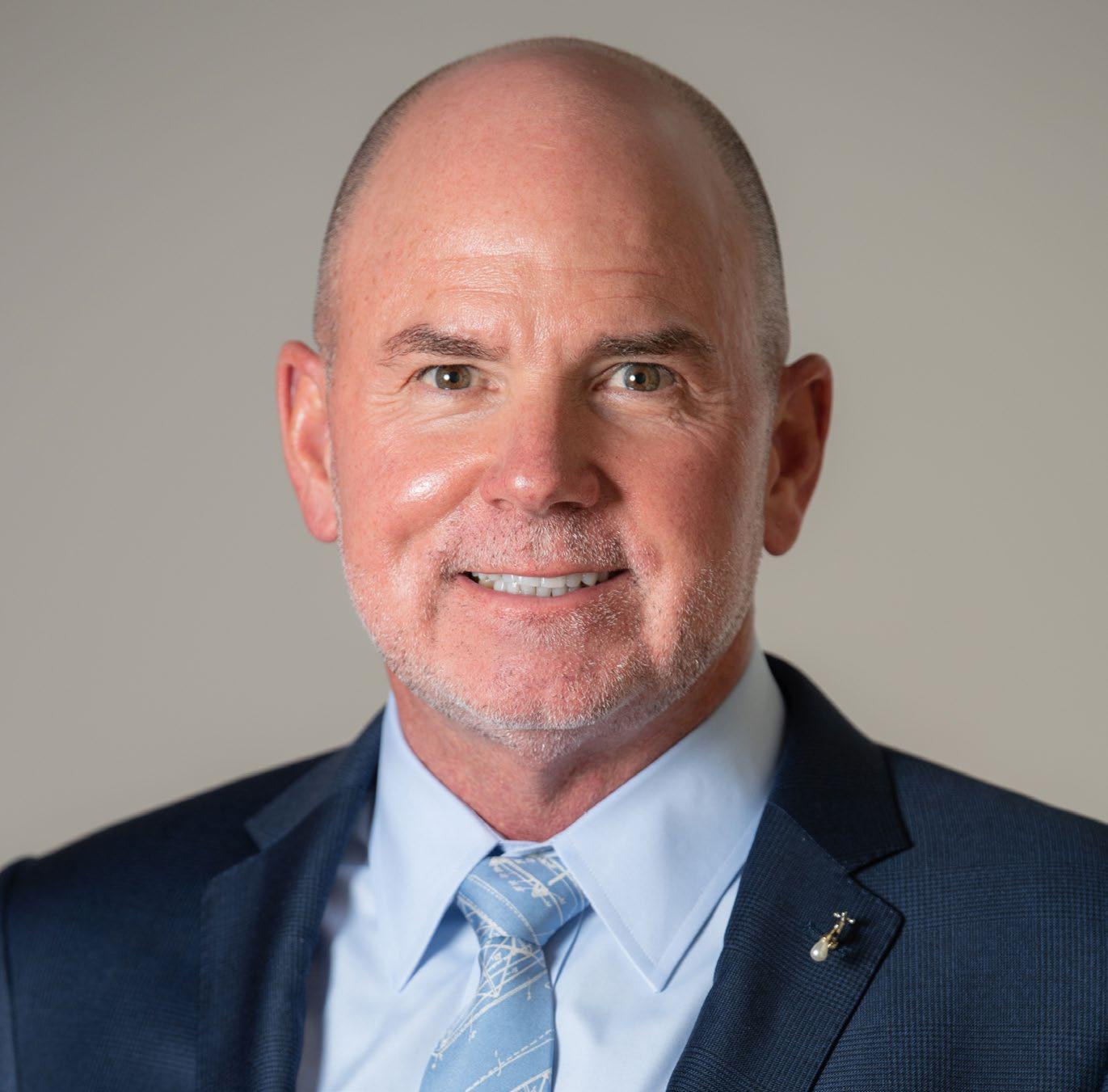
Can you tell us about WASD’s water industrial reuse strategy?
Miami-Dade County Mayor Daniella Levine Cava challenged the County’s water professionals to analyse, collaborate, and develop alternative approaches for a comprehensive water reuse strategy.
As part of the Capital Improvement Program upgrades at the department’s wastewater treatment plants, WASD is implementing industrial water reuse based on the use of Effluent Energy Recovery Systems, which will use heat exchangers and treated wastewater to provide cooling to buildings and energy-intensive processes at our three wastewater treatment plants.
Through this innovative industrial water reuse strategy – when fully implemented - the Department will increase its commitment from 15 million gallons of reuse per day to more than 100 million gallons per day.
Once completed, Miami-Dade Water and Sewer Department will be the number one utility in the state – and along the East Coast - for industrial reuse.
WASD recently announced a $1.2 billion series of upgrades, including upgrades to comply with the Ocean Outfall Legislation to the Central District Wastewater Treatment Plant. What are the goals of these upgrades?
Planned upgrades to the Central District Wastewater Treatment Plant will support critical process improvements implemented as part of the Department’s $8.6 billion Capital Improvement Program to achieve the Department’s vision of becoming a model utility of excellence in reliability, resilience, and environmental stewardship.
The CDWWTP system betterments include the construction of industrial and municipal injection wells and associated pump stations that will serve as the primary source of effluent disposal. Upgrades to the existing effluent pump station will minimize the impacts of largescale storms on plant operations.
In addition, two new electrical distribution buildings that meet sea level rise design criteria will provide redundancy through the use of diesel engine generators, energy
savings with equipment that surpasses the latest energy ratings, and remote operation capabilities for increased safety for plant staff during major storm events.
Finally, a new stormwater collection system that includes a retention pond will reduce flows to the plant during peak con-


"Upgrades
Plant include injection wells and pump stations as the primary source of effluent disposal"
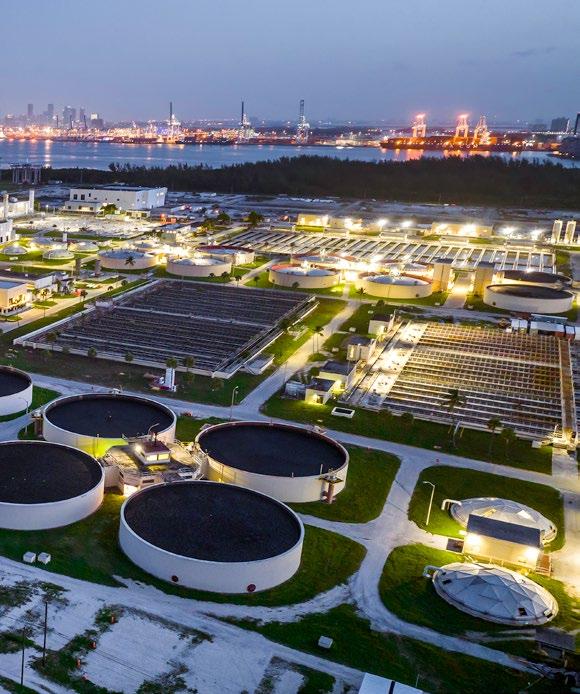
ditions, and new oxygenation trains and clarifiers will increase hydraulic capacity to future-proof the treatment system.
What specific technologies and innovations are being implemented in the upgrades and what is their anticipated impact on wastewater operations and water reuse?
The plant's electrical equipment will be safeguarded from storm surge damage by raising the Electrical Distribution Buildings and substations. In the event of Florida Power and Light (FPL) power outages, EPA-rated Tier 4 diesel engine generators will ensure that the plant remains operational. Additionally, a new co-generation system harnesses natural gas produced by the plant’s digesters to power co-generation engines, which will supply both power and heat to other treatment processes.
What are the expected environmental benefits of the planned upgrades to Miami-Dade’s wastewater infrastructure?
The planned upgrades to Miami-Dade’s wastewater infrastructure under the Ocean Outfall Legislation Program are expected to bring significant environmental benefits. By the end of 2025, these improvements will reduce nutrient discharges significantly, including a reduction of 2.9 million pounds of total potassium and 59.9 million pounds of total nitrogen. Additionally, the upgrades aim to reuse 60% of the baseline wastewater flow by 2025. A key component of this initiative is the implementation of Effluent Energy Recovery Systems, which will increase the county's reuse commitment from 15 million gallons per day (MGD) to more than 100 MGD.
Increasing the capacity and redundancy of the wastewater collection and treatment system will help safeguard our treatment plants against shutdowns resulting from major storm events.
How is WASD addressing the challenges of climate change in its infrastructure planning and water reuse initiatives?
To ensure that the largest water and sewer utility in the Southeastern United States continues to provide uninterrupted service to an area with a population of more than 2.8 million, infrastructure investment is critical. The department is
currently in its 11th year of its Capital Improvement Program.
The department has established specific design guidelines for storm surge and sea level rise that are informed by the Unified Sea Level Rise Projection developed by the Southeast Florida Climate Change Compact.
Can you discuss the funding mechanisms for these infrastructure projects, including any federal or state grants, bonds, or public-private partnerships?
The Miami-Dade Water and Sewer Department continues to break Capital Improvement Program records, having invested more than $599 million to upgrade the County’s water and sewer infrastructure during the fiscal year 20222023, which surpassed the previous year’s historic execution rate of $557 million.
WASD continuously looks for innovative funding mechanisms so as to mitigate financial impact on its customers. To date, the department has utilized financial options that include: Revenue Bonds Sold, Subordinate debt, WIFIA loans, SRF loans, Renewal and Replacement funds, General Obligation Bonds, and Plant Expansion. The department has also received two Resilient Florida Grant awards totalling more than $20 million to harden existing infrastructure that needs to operate in coordination with the new assets and upgrades that are built as part of the OOL and other programs. These grants are funding projects that will decrease the impact of storm surge and flooding and ensure the sustained operation of water and wastewater systems during and following extreme events.
"The department has design guidelines for storm surge and sea level rise that are informed by the
Unified Sea Level Rise Projection"
Datakorum was founded in 2014 with a clear vision: low-power, narrowband mobile networks (NB-IoT) had high potential to provide internet connectivity to key assets in critical infrastructures, sending small volumes of data
over long periods, especially in remote locations, basements, or underground chambers. This vision has led us to deploy massive IoT gateways, offering innovative solutions to face the current challenges of water, energy, and mobility manage-
ment companies. These solutions allow real-time data collection from hard-toreach locations, improving the efficiency and sustainability of these infrastructures.
Ten years later, we are witnessing a new revolution in telecommunications: the

The convergence of terrestrial and non-terrestrial (NTN) satellite networks is revolutionizing the Internet of Things (IoT). In this article, we explore how this integration enhances coverage, resilience, and the efficiency of critical infrastructures.
convergence of terrestrial and non-terrestrial (NTN) satellite networks to offer global NB-IoT coverage, improve network capacity, and ensure more robust and resilient connectivity. Currently, it is estimated that only 10% of the Earth's landmass is connected by terrestrial networks, mainly concentrated in cities and their surroundings. For the remaining 90%, connectivity will only be possible through non-terrestrial networks, providing new opportunities and solutions for the remote management of critical infrastructures in remote areas.

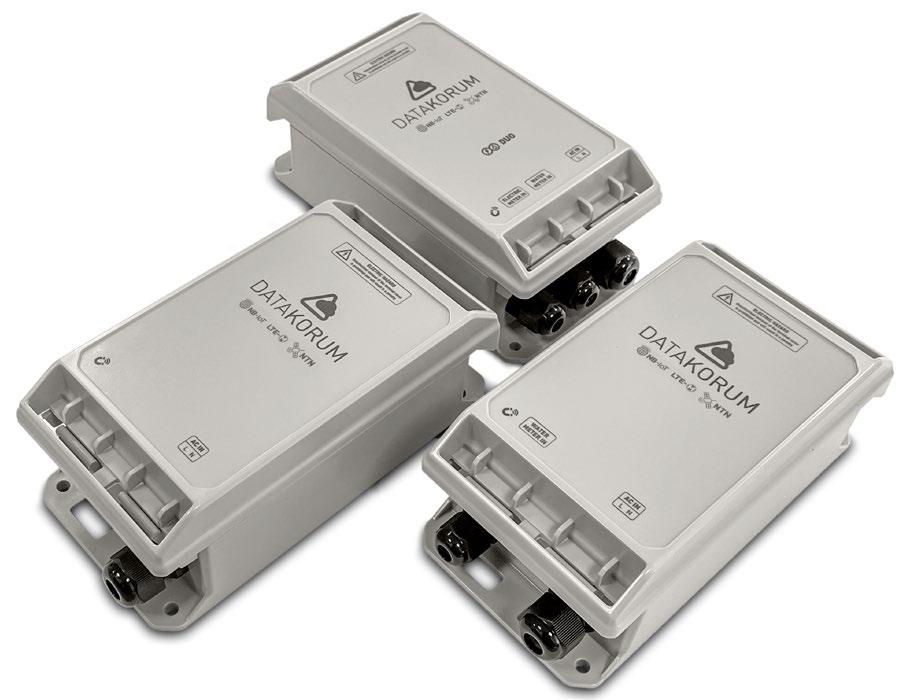
Non-terrestrial networks (NTN) are wireless communication systems operating above the Earth's surface using low (LEO), medium (MEO), and geostationary (GEO) orbit satellites, high-altitude platforms (HAPS), and drones. These networks provide continuous coverage, even in highly isolated areas without terrestrial network access. Currently, devices must connect separately to terrestrial 3GPP networks or satellites, requiring additional hardware. With NTN-5G convergence, all mobile devices will be able to connect to both terrestrial and satellite networks seamlessly within the 3GPP ecosystem, and in the future, satellites will function as base stations.
5G NTN networks evolve in two variants: NTN-IoT and NTN-NR, catering to different use cases. NTN-IoT, which leads the market, extends IoT reach with global coverage on land, sea, and air, mainly operating in GEO and LEO orbits. As technology advances, NTN-NR will gain importance, directly connecting smartphones and 5G gateways with LEO satellites, enabling low-speed data, voice,
and messaging services, and expanding the applications of non-terrestrial networks. Until now, satellite communications were unthinkable for this type of use and were prohibitively expensive, but the emergence of new companies providing connection services through their own constellations of low orbit (LEO) satellites and their convergence with cellular connectivity for IoT have changed the rules of the game. These technologies arrive with the promise of ubiquitous IoT connectivity, guaranteed quality, easy maintenance, and low cost.
The convergence of terrestrial and NTN networks
Narrowband IoT (NB-IoT and LTE-M) wireless communications have posi-
NTN networks not only offer global coverage but also act as a crucial backup network in emergency situations or natural disasters
The convergence of 5G and satellite (NTN) networks ensures service continuity and data integrity, minimizing the loss of critical data packets
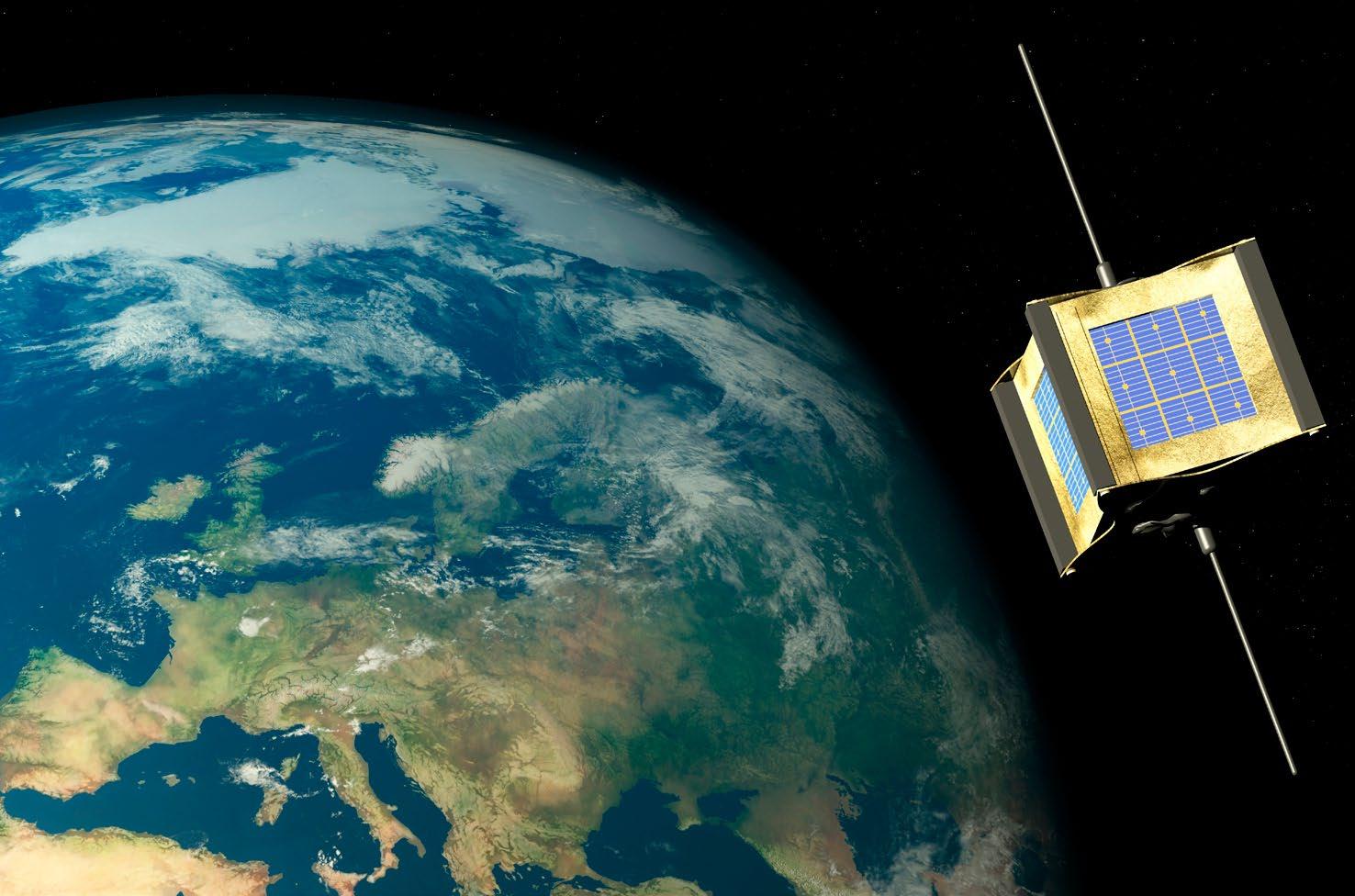
tioned themselves as the best technology for IoT applications that demand low-speed data transmission, high energy efficiency, and wide coverage. Their implementation in remote asset management, such as utility meters and industrial sensors, has been overwhelming. However, one persistent challenge is the deficient coverage of terrestrial networks in rural or remote areas, affecting connection stability and data quality, resulting in the loss of crucial data packets.
The convergence of 5G and satellite (NTN) networks offers a robust and reliable solution to this problem. By combining these two technologies, global coverage is achieved, ensuring that NBIoT devices maintain constant and stable
connectivity, even in remote areas. This integration not only improves coverage but also provides greater redundancy and resilience. In the event of failures or poor coverage in terrestrial networks, NB-IoT devices can dynamically switch to the satellite network, ensuring service continuity and data integrity.
From our experience in deploying NB-IoT devices, we have observed how this convergence makes data transmission more reliable, ensuring that critical data is delivered accurately and timely. This significantly improves the quality of collected data, facilitating better decision-making.
In environmental monitoring projects where IoT sensors must operate in remote areas, the integration of ter-
restrial and satellite networks ensures that critical data on air quality, water levels, and soil conditions are reliably transmitted, supporting conservation initiatives and responses to environmental emergencies. Meters, motors, and valves for irrigation will also benefit from this convergence, allowing uninterrupted connectivity in rural areas where it is currently non-existent, improving efficiency and precision in agricultural resource management and increasing yields.
For the management of critical infrastructures such as electricity, water, and gas distribution networks, IoT devices must operate reliably at all times. Hybrid 5G-NTN networks ensure that monitoring and control operations are
not interrupted, allowing for a rapid response to problems and reducing the risk of infrastructure failures.
A fundamental aspect of this convergence is the ability to use satellite networks as a backup in case of terrestrial network failures. This feature is crucial for applications that require high availability and reliability. In emergencies or natural disasters, terrestrial networks can be affected, causing connectivity disruptions. NTN networks can act as a backup, maintaining communication and allowing for the coordination of rescue and recovery efforts, as recently demonstrated in the Ukraine war. For businesses and critical services, loss of connectivity can have severe consequences. Downtime can be costly and detrimental to many operations. The ability to automatically switch to a satellite network in case of terrestrial failures ensures business continuity and keeps IoT systems running while terrestrial networks are restored.
Ensuring that our NB-IoT gateways can seamlessly switch between terrestrial and satellite networks requires advanced interoperability solutions and common standards. Additionally, with more data being transmitted through different networks, data security and privacy are crucial. We implement robust security protocols and encryption technologies to protect the information. Adopting a converged infrastructure can be costly. However, the benefits in terms of operational efficiency, data quality, and new business opportunities can justify the initial investment.
From our experience in deploying NB-IoT devices, we envision a future where 5G-NTN connectivity will be a key factor for the success of global IoT initiatives, transforming industries and improving quality of life worldwide. It will not only strengthen current IoT applications but also contribute to the
development of emerging technologies like artificial intelligence and predictive analytics that depend on accurate and reliable data.
Datakorum's motivation has always been clear and compelling: to be the first to offer cutting-edge IoT communication technologies to our clients. As a result of this effort, at the beginning of this year, we were selected to participate in the "Satellite NB-IoT Early Adopter Program" led by Deutsche Telekom in collaboration with Skylo and Murata. The 19 participants from 9 countries in the program had exclusive access to the organizers' state-of-the-art solutions, including early access to the first satellite NB-IoT modules based on new
We envision a future where 5G-NTN connectivity will be a key factor for the success of global IoT initiatives, transforming industries
lar coverage, for which we were awarded the "Innovation Award" at the Deutsche Telekom Satellite IoT Day.
We are proud to have contributed to this innovative program and to have received this recognition, which highlights the effort of our development team and reinforces our commitment to innovation and excellence in the IoT connectivity sector.
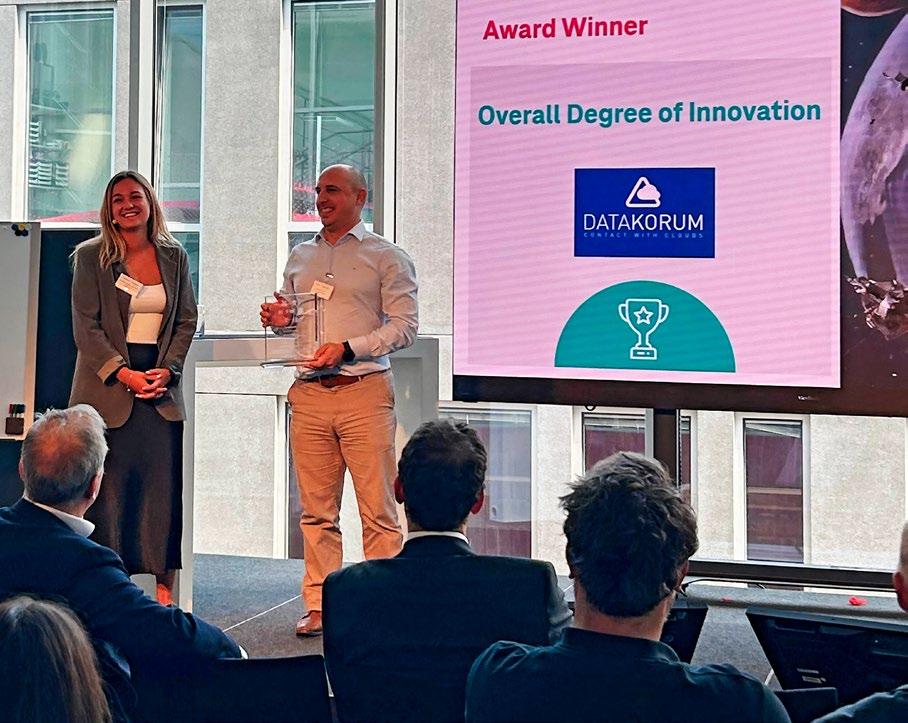
standards and a global satellite network, allowing us to develop solutions with convergent 5G-NTN device prototypes using test hardware.
Our proposal consisted of a solution to remotely monitor intelligent dynamic air purge valves in pipes without cellu-
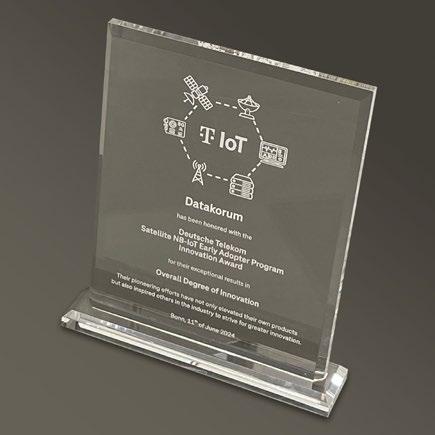
The solution provides sensor installation and management, connectivity, data visualisation and integration, and analytical insights
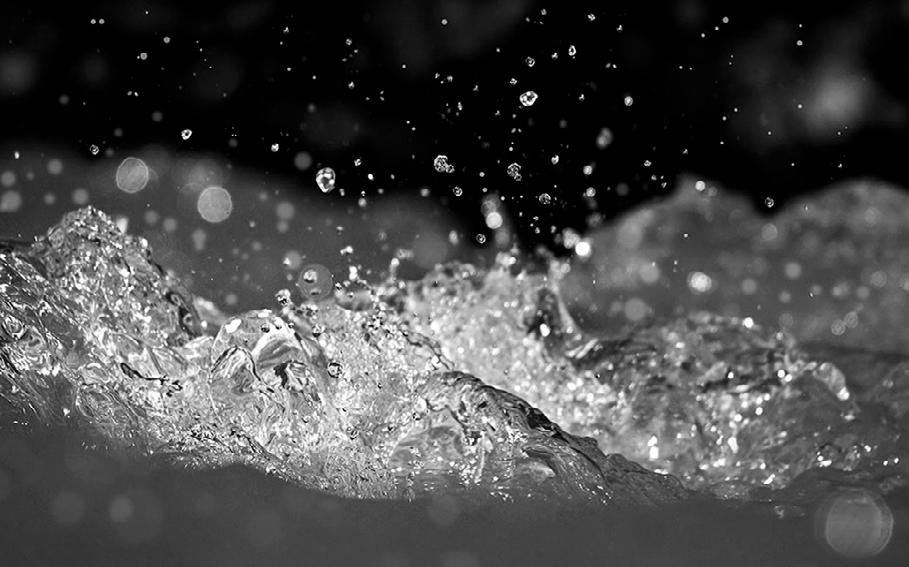
Technology company Siemens has introduced an innovative service that provides UK water utilities with the real-time water quality data and insights they need to get ahead of issues in drinking water networks and improve maintenance regimes.
The new Water Quality Analytics as a Service (WQAaaS) simplifies and derisks the process of bringing insight directly into water company operations, accelerating the pace of digital transformation and empowering companies to push the standard against the demanding performance commitments that will be set for AMP8, the eighth asset management period regulated by Ofwat.
The solution provides network operators with the installation and management of sensors, data connectivity, data visualisation, integration into existing data
sources, and analytical insights from the treatment works to the customer’s tap.
The transformative analytics modules are deployed in a secure cloud platform and enable water utility companies to review the estimated travel time throughout the network, helping operators manage the risk of bacterial growth in water that’s been in the system for extended periods, optimising water safety processes. The solution will also reduce the risk of discolouration complaints and the cost of flushing programmes by quantifying the movement of material through the network.
WQAaaS can also reshape how water providers approach maintenance. Cloud-based analytics modules will inform the scheduling of service reservoir cleaning to be driven by performance and accumulation of material, reducing both operational costs and risk. The
technology can also improve resilience and response to incidents by combining real-time data with District Metered Area (DMA) level simulation of water age and chlorine levels.
Long-term Siemens partners Northumbrian Water (NWG) and The University of Sheffield joined Siemens alongside other leaders from across the water industry at its Transform 2024 show at Manchester Central last month for the launch of the WQAaaS.
NWG and Siemens first conceived of WQAaaS at the Northumbrian Water Innovation Festival in 2020. NWG now leads the Ofwat funded ‘Treatment to Tap’ project which utilises the same analytical approach and supplies over 100,000 Teesside residents with clean drinking water. The development process also benefitted from insight from the world-leading Water Infrastructure Engineering group at The University of Sheffield.
Dr John Gaffney, Siemens technical lead for the Water Quality programme, said that there are no scale deployments of clean water quality sensors in the UK water industry, because the cost-benefit historically didn’t stack up. Now that unknowns around how best to manage sensors, and the time-consuming nature of manual data analysis, have been overcome through business model design and analytics integration, WQAaaS can be transformative.
“It gives every UK water company the opportunity to change the paradigm for how they manage their real-time water quality”, he emphasized.
The project is part of the digital transformation of the public utility, which supplies irrigation water to over 10,000 customers
Spanish water technology company Idrica will implement a digital platform to centralize all the billing and subscriber processes for Balsas de Tenerife (BALTEN), a public utility owned by the Tenerife Island Council, in the Canary Islands, Spain. This will enable the company’s systems to be streamlined, automated and standardized.
The Billing One and Customer Portal technological solutions, which are part of the Xylem Vue powered by GoAigua platform, developed as a result of the
agreement between Idrica and Xylem, will also organize, automate and standardize the utility’s meter network, as well as streamline its work orders. The tool also includes a GIS and BALTEN's web portal, among other potential features.
The main benefits of this implementation include the optimization of the utility's management and billing processes, improving efficiency, decision-making capabilities and customer service. In addition, it will pave the way to deploy a tool that can perform remote meter
NB-IoT digital meters will enhance leak detection and optimise network operations, to save an estimated five billion litres every year
TPG Telecom has secured a 10-year contract for Australia's largest smart water metering rollout for South East Water. The initiative will involve the installation and management of one million narrowband Internet of Things (NB-IoT) smart meters across Victoria, marking a significant step forward in the region's water management efforts.
The project will replace traditional mechanical water meters with cutting-edge NB-IoT digital meters. These meters will be deployed in South East
Water's 27,000 km pipe network, which serves 1.7 million customers from Port Melbourne to Portsea and extending towards Gippsland.
The new meters are expected to save an estimated five billion litres of water annually by enabling more efficient network operations and improving leak detection. Customers will gain access to daily updates on their water usage, allowing them to monitor consumption patterns, identify leaks, and make informed decisions to conserve water and reduce costs.
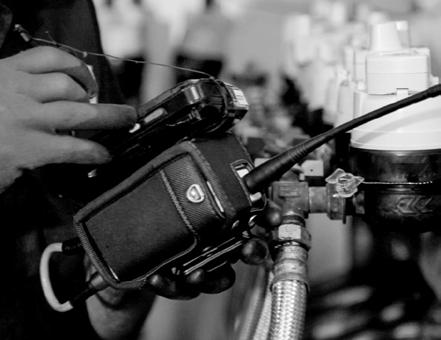
reading in the future. According to Jesús Rodríguez, a civil engineer in BALTEN's Water Management and Customer Service Department, the objective is “to optimize the management of the irrigation water supply service, along with its material and human resources.”
The project consists of a first stage to supply and implement the tool, lasting a year, and a second maintenance phase over a four-year period. The initiative is part of BALTEN's comprehensive digital transformation project.

Mark Elvins, Acting General Manager Digital Utility at South East Water, emphasized the importance of this partnership: "We are excited about our partnership with TPG Telecom and the cost savings and sustainable benefits digital meters will bring to customers, community and the environment”. And he added: “As we look to the future, we need to build resilience into Australia’s water network to continue to respond to the challenges of water scarcity, a changing climate and growing population, with TPG Telecom we can now do that.”
The digital solution will help customers achieve water neutrality goals by monitoring and managing water consumption in real-time

As part of its GreenUp strategic plan, which makes innovation one of the levers for accelerating ecological transformation, Veolia is expanding its leading Hubgrade portfolio by launching Hubgrade Water Footprint, an innovative digital solution designed to help customers reduce their water footprint, water-related energy use, and greenhouse gas emissions.
Hubgrade, Veolia’s unique range of digital services, provides data analytics, supervision, optimization and predictive systems for water, waste, energy and other environmental resources. Using the power of data and the most advanced AI technologies combined with our worldwide operational expertise, we tailor solutions for your specific ecological transformation journey, whether it’s decarbonization, depollution, or resource saving and regeneration.
Industrial processes around the world consume more than 1 billion cubic metres of water each year, leaving companies looking for ways to optimize water usage and accelerate ecological transformation. Hubgrade Water Footprint offers full visibility into water operations, including true water cost, water use ratio, and water balance, by combining real-time, in-field data, artificial intelligence, and best-in-class domain expertise into a single resource.
"Traditional water audits only create a snapshot in time of water consumption at an industrial facility," said Bernie Anger, Chief Digital Officer at Veolia Water Technologies & Solutions. "Hubgrade Water Footprint goes beyond this steady-state representation of total cost of water and captures real-time emergence of water wastage events at a gran-
ular level to systematically identify and eliminate water inefficiency in a way that a traditional water audit cannot."
Hubgrade, Veolia’s unique range of digital services, provides data analytics, supervision, optimization and predictive systems for water, waste, energy and other environmental resources By using AI, the platform drives actionable insights that can be used for example to detect water wastage incidents in real-time, enabling effective water risk management and providing recommendations to optimize the impact of energy consumption associated with water circuits, thereby reducing the overall carbon emissions of the facility.
Veolia piloted Hubgrade Water Footprint at one of its plants and created early wins like more than 20,000 kilograms of emissions reduced by piped natural gas (PNG) usage. Hubgrade Water Footprint is the latest step of an ecological transformation at this facility, which included 72,000-kilowatt-hour savings through solar power and more than 3,000 cubic meters of harvested rainwater.
In 2024, Hubgrade Water Footprint is expected to expand to more than 15 global Veolia sites to drive new sustainability efforts, in addition to partnering with clients to help them achieve their unique water neutrality goals. Veolia provided their expertise and customized recommendations needed to accelerate the client’s sustainability journey. Companies can also optimize operations and planning.
Substantial funds have been earmarked for regional projects, including a desalination plant that will supply the city of Corpus Christi
The Texas Water Development Board (TWDB) has approved more than $3 billion in financing for water and wastewater projects statewide. This funding will support a variety of initiatives aimed at improving water infrastructure, enhancing flood mitigation efforts, and ensuring reliable water supply.
The TWDB, responsible for water data collection, regional water and flood planning, and providing financial aid for related construction projects, will distribute the funds through the State Water Imple-
mentation Fund for Texas (SWIFT) and the Clean Water State Revolving Fund.
Among the notable allocations, the Brazosport Water Supply Corporation in Brazoria County will receive $747.5 million, the largest share of this funding round. This substantial investment will go towards the Harris Expansion Project, an off-channel reservoir designed to nearly triple the storage capacity of the existing Harris Reservoir. The project aims to secure a more reliable water supply during droughts for industrial and community use.
Investment in the sector has shown a steady increase, with 22 . 5 billion reais ( approximately $4 billion ) invested in 2022
Brazil is seeking $100 billion in investments to revamp its water and sewage infrastructure, according to Correio Braziliense. The initiative aims to ensure comprehensive access to quality sanitation services across the nation, regardless of income levels. Jader Filho, the Minister of Cities, emphasized the critical need for this investment: "It is urgent and unpostponable to ensure that the entire Brazilian population, in any part of the national territory and regardless of their ability to pay, has full access to quality sanitation services."
Currently, about 30 million of Brazil’s 200 million citizens lack access to treated water, and 90 million do not have sewage collection services. The government’s ambitious goal is to achieve universal access to potable water by 2033, targeting 99% coverage.
However, this drive for substantial investment coincides with concerns over potential tax increases within the sector. Recent tax reform measures have raised alarms among industry stakeholders about possible tax hikes. "The tax reform framework approved recently by the lower house dis-
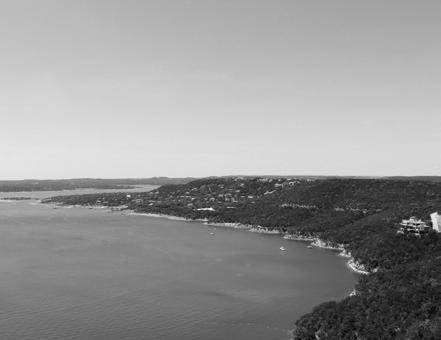
Furthermore, Corpus Christi will benefit from a $535.1 million allocation to support a seawater desalination plant. This facility, backed by multiyear financing from the SWIFT programme, is set to enhance the city’s water supply capabilities. The $757 million Inner Harbor Ship Channel plant will generate potable water, integrating with the regional water system. Initially, it will produce 20 million gallons per day, with the potential to expand to 30 million gallons per day.

regarded the importance of the sanitation sector, signaling an increase in tax rates," Percy Soares Neto, founder of water and waste consultancy Ikigai, told BNamericas. Since the introduction of a new regulatory framework in 2020, Brazil’s water sector has attracted significant private investment. According to current regulations, municipalities must achieve full water and sewage coverage by 2033. Investment in the sector has shown a steady increase, with 22.5 billion reais (approximately $4 billion) invested in 2022.
The proposals are part of the regulator’s 2024 Price Review (PR24) and cover the period from 1 April 2025 to 31 March 2030

Ofwat has proposed allowing a spending package of £88 bn by UK water companies. £35 bn of the expenditure reflects the investment needed to reduce pollution, improve customer service, river and bathing water quality, and deliver greater resilience to the impact of climate change. This is more than a trebling of the level of investment in the 2020 to 2025 period.
The total expenditure proposed is £16 bn lower than in companies’ business plans. This reflects Ofwat’s analysis of those plans, removing or reducing costs where expenditure is insufficiently justified, inefficient or for activity for which companies have already been funded; customers will not pay twice.
The average bill increase for water and wastewater companies will be £19 a year over five years (£94 in total), excluding inflation. Companies’ business plans pro-
posed increases averaging £144 over five years. Ofwat’s interventions have reduced the level of bill increases proposed by companies. For example, Thames Water’s proposed increase of £191 by 2030 has been reduced to £99; Severn Trent’s proposed increase of £144 has been reduced to £93.
Companies have been required to prepare for the future by setting their plans in the context of a 25-year delivery strategy. These proposals include the work of the regulators’ joint team RAPID, which is helping to accelerate the delivery of £17 bn of new water assets including 6 reservoirs, some of which are part of the wider programme of major projects; in total 9 new reservoirs are proposed.
The overall investment programme will deliver improvements in the environment, strengthen the resilience of water supplies and improve day-to-day customer service.
The cost of this investment will initially be funded by shareholders or through borrowing, with these costs then recovered through customers’ bills in this 5-year period and beyond. Ofwat has proposed a rate of return of 3.72%. This is above the level set for 2020 to 2025, reflecting increases in the cost of finance and the need to ensure the sector can raise the finance necessary to fund such a significant programme of investment.
David Black, Chief Executive, Ofwat said: “Customers want to see radical change in the way water companies care for the environment.
“Our draft decisions on company plans approve a tripling of investment to make sustained improvement to customer service and the environment at a fair price for customers.
“These proposals aim to deliver a 44% reduction in spills from storm overflows compared to levels in 2021. We expect all companies to embrace innovation and go further and faster to reduce spills wherever possible.
“Today’s announcement also increases the resilience of our water supplies to the impact of climate change and will reduce how much water is taken from rivers by enabling a range of long-term water supply projects, which includes plans for 9 reservoirs.
“Let me be very clear to water companies. We will be closely scrutinising the delivery of their plans and will hold them to account to deliver real improvements to the environment and for customers and on their investment programmes.”
The regulations will support the state’s Water Supply Strategy goal of recycling and reusing 800,000 acre-feet of water per year by 2030
California’s Office of Administrative Law has approved the direct potable reuse (DPR) regulations that were adopted by the State Water Resources Control Board on December 19, 2023, a major milestone in diversifying the state’s water supply while maintaining its safety, quality and reliability. The regulations will take effect on October 1, 2024.
As approved, the regulations address a number of issues identified in a September comment letter from a coalition led by WateReuse California that includes
ACWA. The regulations establish criteria for the introduction of recycled water either directly into a public water system or into a raw water supply immediately upstream of a water treatment plant.
In December, State Water Board members voted unanimously to adopt the regulations, also directing staff to provide an update on implementation of the regulations in approximately a year.
For ACWA member agencies, the regulations will facilitate the ability to expand their water recycling capabilities,
Using a model than include geospatial, regulatory and industry data, the estimates consider individual districts’ remediation needs
A recent report by Milliman, a global consulting and actuarial firm, has revealed an estimate of the economic liability associated with the remediation of perfluoroalkyl and polyfluoroalkyl substances (PFAS) in U.S. water districts. Employing a sophisticated stochastic modelling approach, Milliman projects that the total remediation expenses for PFAS contamination in drinking water systems could range from $120 billion to $175 billion.
PFAS have been linked to serious health issues. In response to these concerns, the
U.S. Environmental Protection Agency (EPA) has set new maximum contaminant levels (MCLs) for several PFAS compounds in drinking water, spurring nationwide efforts among water districts to test and decontaminate their supplies.
Milliman's model incorporates a range of variables, including geospatial, regulatory, and industry data, to produce individualized estimates for over 140,000 U.S. water districts. The estimates account for the presence of approximately 30 different PFAS compounds and con-
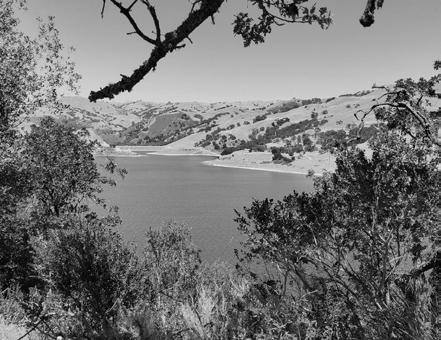
a vital part of strengthening water resilience against climate change impacts. This will provide a consistent framework for water suppliers to plan ahead, know expectations, and build projects to be more drought resilient, creating certainty for water agencies to make essential local investments.
The State Water Board’s December 19 decision caps a 13-year legislative and regulatory process that included extensive advocacy from California’s water and wastewater community.
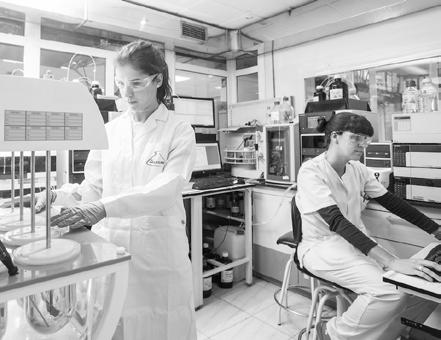
sider the unique risks and remediation needs of each district.
The report underscores the financial burden facing water districts striving to comply with regulatory standards and the pressing need for potentially responsible parties to understand their potential share of remediation costs. Although federal and state funds will provide some support, the anticipated expenses far outstrip current resources, necessitating alternative funding strategies or legal actions to recover costs.

GENERAL MANAGER OF INNOVATION AND VENTURES, MEKOROT NATIONAL WATER COMPANY
An estimated 25 nations, which collectively represent one-quarter of the global population, endure extremely high water stress where water demand regularly outstrips available supply. Fifty per cent of the global population lives under conditions of water stress at least one month a year. Amplified by climate change, pollution, and ageing water infrastructure, the World’s water challenges mount high.
There is no magic cure or singular technology that can address all water issues. The focus now is on making water management more efficient and effective through technological advancements. Innovation is more about how to run efficient water networks.
Mekorot, as a transmission company, has developed unique information systems that include a SAP system that integrates specialized modules like ISU for water supply and billing management, PPM for managing open software and complex projects, and GRC for risk management, governance, and access control. It has also implemented computer and mobile applications focused on water supply, maintenance, and development, ensuring mobile work capabilities at all times and locations. Additionally, Mekorot boasts an advanced Business Intelligence (BI) array with dashboards across various operational fields. To support effective remote learning, it has deployed a Moodle-based online learning system, which proved essential during the COVID-19 pandemic by reducing health risks, generating significant financial savings, and consistently empowering and enriching employees professionally. Furthermore, Mekorot has established advanced software infrastructures for characterization, documentation, validation, and organizational platforms, alongside specialized tools and procedures for information security and routine operations.
In the contemporary technological and organizational reality, information management is a critical resource, with a broad impact on all business and professional operations. Recognizing its importance as a core resource, we have installed advanced IT and OT for a digital transformation of processes. As we say, “smart workers, smart deciders”.
In Mekorot’s digital work environment, information flows quickly, smoothly, and securely to make optimal decisions across a wide range of operations. Advanced information
management, based on standardized online processes, offers us business continuity, sophisticated risk management, effective decision making, data loss prevention, and enhanced communications between different parties. There are also significant advantages, such as operational streamlining, shorter execution times, and substantial savings in organization resources.
Because water production and transportation require a lot of energy, Mekorot has developed smart energy-saving solutions, which support our business perspective, and help reduce our power consumption by 1.5 per cent a year. This impressive figure is considered a world-class achievement in the water industry, worth tens of millions of shekels a year.
Mekorot's energy streamlining operations involve using advanced mathematical models to optimize water systems for off-
"In Mekorot’s digital work environment, information flows quickly and securely to make optimal decisions across a wide range of operations"
peak power times (for example, summer nights and winter days), increasing water pooling for maximum utilization during offpeak power times, converting ultra-high-voltage power to high voltage for pump operations, employing real-time computerized planning models, integrating hydrologic tools and simulators for pressure control, upgrading pumping equipment for high-volume operations, and mapping and separating pressure areas.
Water is critical to every aspect of human life and our collective health. Water is also critical to the global economy and industries’ supply chains. Investment in water technology is essential for addressing the climate crisis. By modernizing water infrastructure and adopting smart water solutions, we can build resilient water systems that support economic growth, protect public health, and mitigate climate impacts.
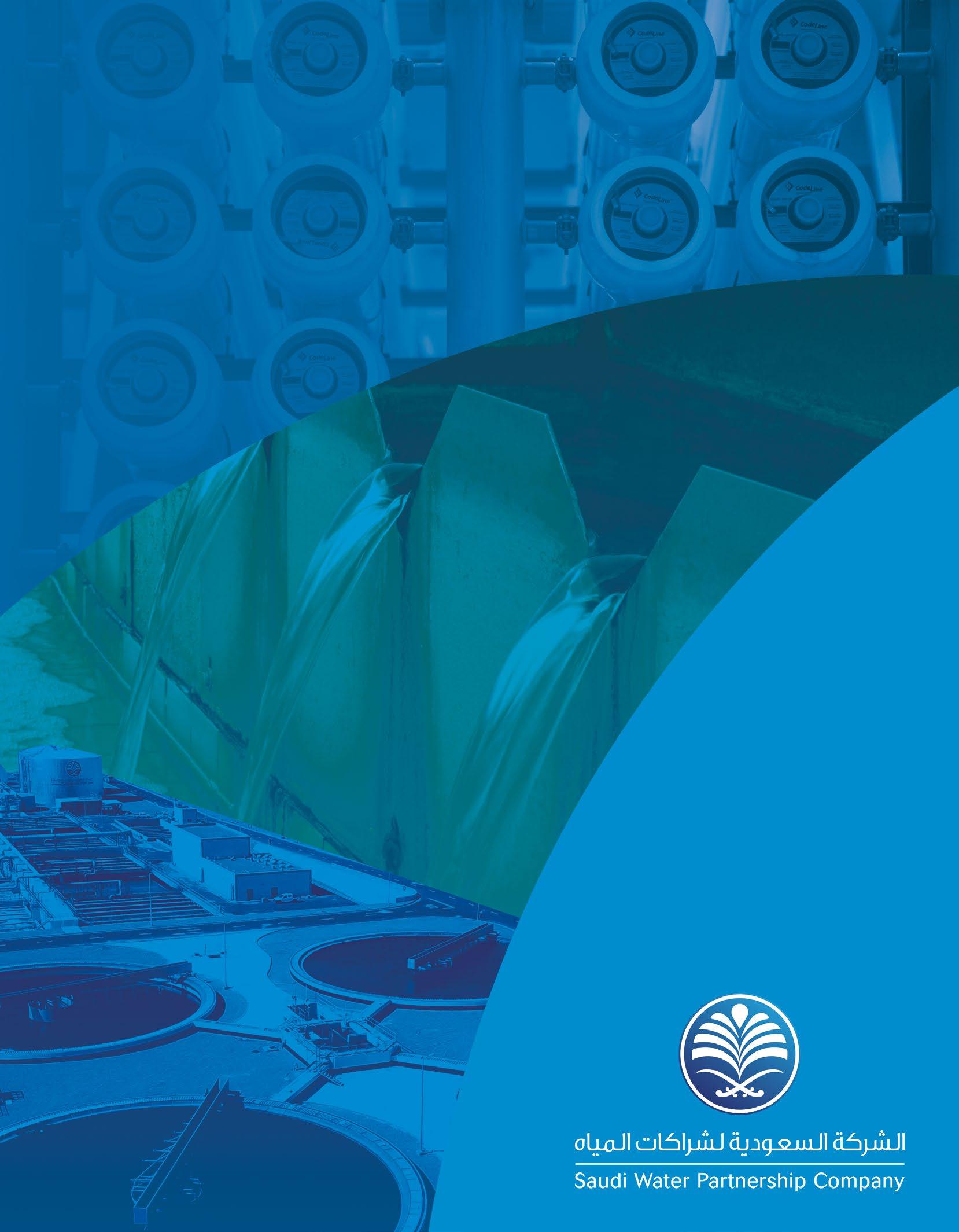
The Saudi Water Partnership Company (SWPC) stands as a pivotal entity in Saudi Arabia’s water sector, focusing on expanding the infrastructure for water production, treatment, distribution and strategic storage among other projects to address the growing demand in Saudi Arabia to meet the national water strategy through the strategic partnership and private sector participation.
Empowering Private Sector Participation in the Water Infrastructure Development. www.swpc.sa
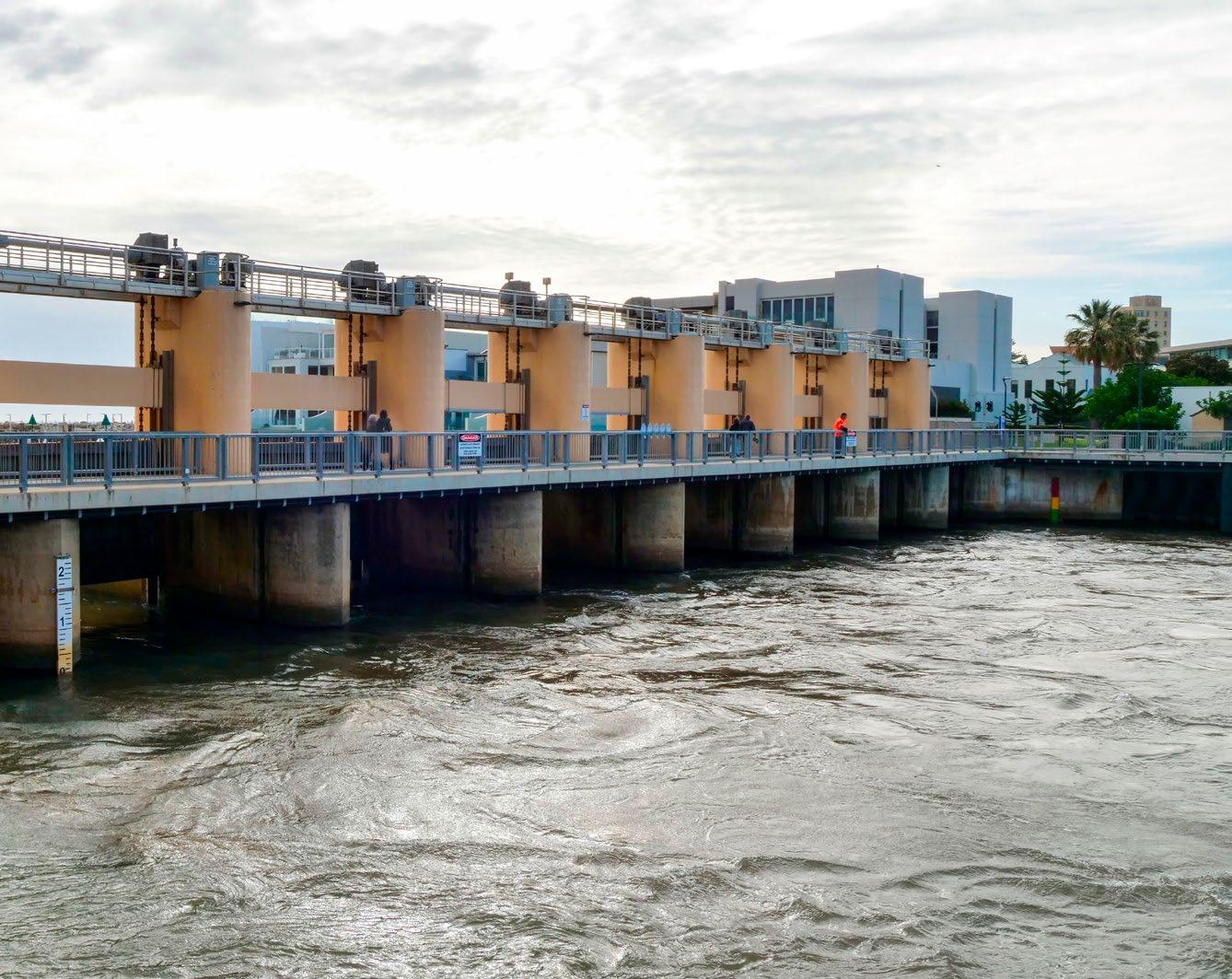
The Patawalonga Lake System, in Adelaide, South Australia, is a crucial piece of infrastructure designed to manage urban stormwater and prevent flooding in the surrounding areas.
The best-known part of the system is the Patawalonga Lake, a man-made lake that stretches 1.6 km parallel to the coastline, and 9 km west of the city’s business district. The lake, locally known as “the Pat”, diverts stormwater into the sea, and provides recreational opportunities.
Water quality in the lake is managed by circulating seawater northwards through the system as the tide fluctuates. The South Gates allow seawater to enter the lake twice a day on a rising tide, then when the tide falls, the North Gates allow water to exit the lake by the Barcoo Outlet. During severe weather,
the water levels in the lake are dropped to have additional capacity for excess stormwater, thus reducing flood risk.
Recently, the South Australian government announced a AUD 17.3 million upgrade to the Patawalonga Lake System’s South Gates. These gates are essential for controlling water levels and circulation in the lake, which is critical for both flood prevention and maintaining a healthy marine environment. The upgrade will involve replacing all eight existing steel gates, which are at the end of their serviceable life, with new stainless-steel gates that are expected to last up to 50 years without major refurbishment. This upgrade is not only a preventive measure against potential flooding but also an investment in the future recreational use of the lake.


NORIO SAITO - SENIOR DIRECTOR, WATER AND URBAN DEVELOPMENT SECTOR OFFICE, ADB
The Asian Development Bank has set as a priority building water and sanitation resilience and security in Asia and the Pacific. Amid pressing climate challenges, innovative financing and scaling innovation stand out to meet the regional water sector needs.
Z Cristina Novo
The Asian Development Bank established the Water and Urban Development Sector Office in June 2023 as a part of the ADB’s new operating model, to support a vision of liveable and resilient urban areas where water security is paramount. With projects dealing with water and sanitation, and urban flooding among other issues, ADB finances infrastructure at the same time as it works towards robust water governance and social inclusion, while fostering technological innovation. In an exclusive interview, Norio Saito, Senior Director of the Water and Urban Development Sector Office, shares insights into ADB's strategic initiatives aimed at enhancing water security, promoting sustainable urbanization, and tackling climate change across the region.
Could you share a bit about your background and your role at the Asian Development Bank?
I’m currently the Senior Director of the ADB’s Water and Urban Development Sector Office (SG-WUD), where I lead strategic directions and operations in the water and urban development sector. The team is focused on upstream policy dialogue, impactful projects, effective implementation, knowledge sharing, and capacity development for our clients. I’ve held various roles in ADB in the past 16
years, including as Director of the Urban Development and Water Division of the South Asia department, working extensively on urban and water projects in South Asia, including Bangladesh, India, Nepal, and Sri Lanka.
I was born and raised in Tokyo, Japan, where my interest in development and the environment began -- I majored in Geography at the University of Tokyo, before pursuing a master’s degree in environmental management from Duke University in the United States, and later, a PhD in environmental sciences focusing on urban climate change adaptation from Ibaraki University in Japan. I feel extremely lucky that I’ve been able to work in development for over 30 years now.
What are the lines of work of the Water and Urban Development Sector Office?
The ADB Water and Urban Development Sector Office, which was newly established in June 2023 as a part of the ADB’s new operating model, supports ADB’s 49 developing member countries in Asia and the Pacific in making cities and towns more water-secure, liveable, and resilient.
Our projects are specifically aimed at achieving the relevant UN Sustainable Development Goals, particularly SDGs 6 and 11 – ensuring the availability and sustainable management of water and
sanitation for all, as well as making cities and human settlements inclusive, safe, resilient and sustainable. Our projects support improved water and sanitation services, solid waste management based on circular economy principles, and urban flood management, among others. We are also strengthening support for affordable housing and sustainable tourism. In all projects, we strive to offer integrated solutions to our clients. We do not only finance infrastructure and service improvements, but help strengthen policies, institutions, and regulations as well as gender equality and social inclusion. This helps make our interventions more impactful, inclusive, and sustainable.
How is the Asian Development Bank currently addressing water and urban development chal-lenges in the region? Can you highlight some recent initiatives? Despite our great progress in the region, there’s still a lot of work to be done. Over 500 million and 1.14 billion people still lack access to basic water supply and safely managed sanitation, respectively, in Asia and the Pacific, worsened by the impacts of climate change primarily felt through water. Given the urgency in achieving water security and resilience amid pressing climate challenges, ADB’s approach to water oper-

ations is guided by five principles, 1) building resilience and adaptive capacity, 2) promoting inclusiveness and gender equality, 3) embracing environmental sustainability and circular economy, 4) improving governance and catalysing finance, and 5) fostering innovation and technological advancement.
We’ve dedicated significant resources to this support. From 2014-2023, ADB’s water sector committed a total of $23.5 billion to our developing member countries. $12.84 billion was dedicated to water supply, sanitation, and wastewater management; $3.97 billion to flood management; $3.20 billion to irrigation and agricultural drainage; $2.13 billion to water-based natural resource management; and $1.40 billion to hydropower. These investments are
supported by other Sector Offices in ADB too, including teams in Agriculture, Food, Nature, Rural Development, and Energy.
As mentioned previously, we focus not only on financing, but on building sustainable solutions together with our partners and clients. ADB operates the Water Financing Partnership Facility (WFPF), for example, which is supported by the governments of the Netherlands, Austria, and Spain, along with the Bill and Melinda Gates Foundation. The WFPF supports project design and implementation; strengthening policies, regulations, and institutions; and developing capacity and knowledge. WFPF has catalysed more than $9.5 billion in innovative and sustainable water investment, benefitting 122 million people in the region.
Another exciting initiative is ADB’s Water Organizations Partnership for Resilience (WOP4R), a programme that pairs utilities across the globe to learn from each other. This programme has engaged over 81 utilities across 21 countries. This peer-to-peer learning is critical for water utilities in our developing countries to learn from international best practices. For example, Dhaka Water Supply and Sewerage Authority is learning from the Bureau of Sewerage of the Tokyo Metropolitan Government in areas including smart and resilient sewerage services, energy efficiency, climate change adaptation and mitigation, compact sewerage treatment plant design, and sludge management. We have just paired Singapore’s PUB and India’s Chennai Metropolitan Water Supply and Sewerage Board, with a spotlight in areas such as energy-efficient desalination plants.
What do you see as the key opportunities for improving water management and urban development in Asia over the next decade?
We need to accelerate financing as well as knowledge sharing in water management and urban development. The region needs an estimated annual investment of about $60 billion in capital investment alone for water-related infrastructure and services. Enabling innovative financing involving the private sector and maximizing local resource mobilization is essential to meet the huge regional water sector financing needs.
ADB hopes to expand private sector participation and non-sovereign operations for all aspects of water security and
"ADB does not only finance infrastructure and service improvements, but also helps strengthen policies, institutions, and regulations"
"The Water Organizations Partnership for Resilience (WOP4R) is a programme that pairs utilities across the globe to learn from each other"
resilience to tap the private sector’s innovation and expertise. We see great potential in digital technologies, including digital twins, in improving design and opera-tional efficiency, customer satisfaction, and sustainability.
In addition, we aim to provide knowledge that influences and strengthens investments through joint learning and applied research. Lastly, we will promote long-term collaboration on water issues with development partners, knowledge partners, the private sector, and civil society.
Climate change is greatly affecting water resources and urban infrastructure in Asia; what measures are being taken to mitigate these impacts?
Climate change mitigation and resilience are central to ADB’s work, especially for water resources and urban infrastructure in Asia. Cities generate about 70% of the total greenhouse gas emissions and suffer most from climate-related disasters such as floods, because people and assets are concentrated in cities.
First, ADB set its ambition to provide $100 billion in climate financing from its own resources cumulatively from 2019 to 2030 for our developing member countries, including $34 billion for climate adaptation, while targeting that 75% of its operations support climate action.
For the water sector specifically, ADB announced its intention to mobilize $200 million in grants from 2021-2026 to leverage $10 billion in climate change adaptation financing by 2030.
Finally, ADB issued its Climate Change Action Plan 2023-2030 in late 2023, which includes both Bank-wide actions and actions specific to our team at SGWUD.
Sector-specific actions include strengthening planning and design for low-carbon and climate-resilient urban development, urban policy and governance reform, and promoting financial innovations to mobilize more climate finance. We are already observing substantive progress in increasing climate finance. Climate financing accounted for 51% and 53% of our department’s new commitments in 2022 and 2023, respectively, which are much higher than the 22–28% in 2019–2021.
Upstream climate assessment — that is, a closer look at climate impacts and vulnerabilities in a system - is critical to climate mitigation and adaptation-oriented project design, while meeting development objectives. We will further strengthen these efforts.
Can you highlight some recent initiatives and projects related to water security?
We’re proud to note that we have many new initiatives and projects that aim to achieve a more water-secure future: we will push for accelerated climate adaptation and mitigation financing, public-private sector collaboration, and new financing modalities that derisk water investments. We’re also focused on scaling innovation in key areas.
One example is ADB’s $200 million Rajasthan Secondary Towns Development – Additional Financing project to India, approved in 2023, which aims to improve water supply and sanitation systems in secondary towns in Rajasthan. Notably, it will pilot a Public-Private Partnership for the resource-efficient industrial use of treated municipal wastewater, as well as deepen private sector engagement and mobilize domestic and private sector finance. We intend to
support the use of treated wastewater in more projects, and in parallel strengthen regulatory instruments such as cost-reflective tariffs and groundwater extraction control.
We are also working to reduce non-revenue water (NRW), as the percentage of water lost or unaccounted for in many cities in Asia and the Pacific is 40% or higher, sometimes as high as 70%. ADB was able to help significantly reduce NRW from 40-50% to about 20% in Dhaka, Bangladesh and Colombo, Sri Lanka. We are now working with India, Fiji, Georgia, Papua New Guinea,
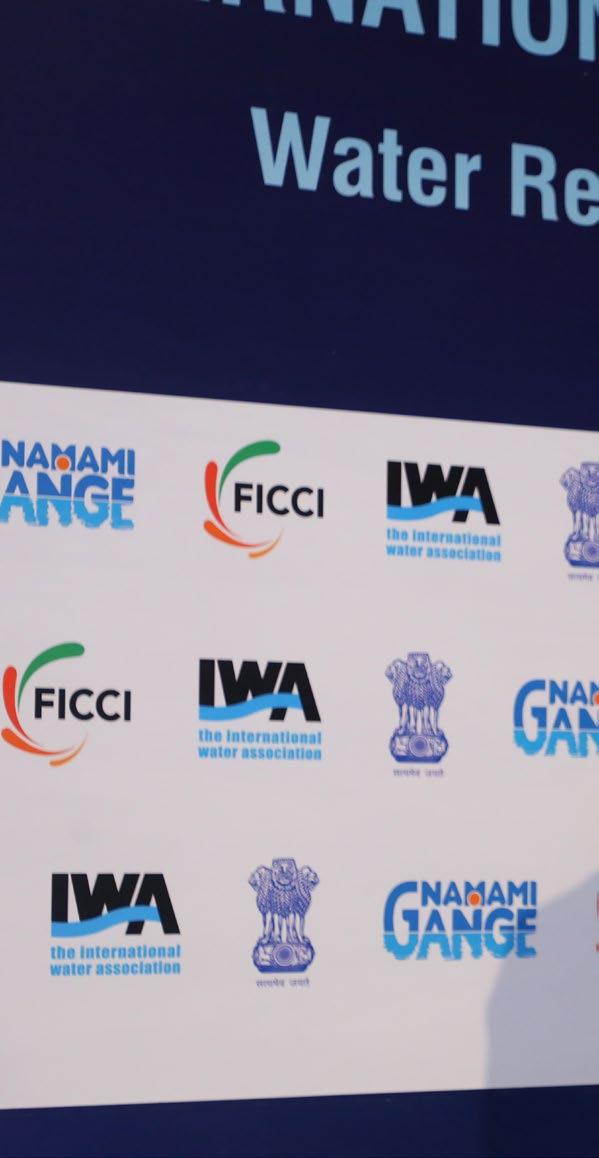
and Uzbekistan, to replicate that success. NRW reduction greatly contributes to climate change mitigation, as well.
It is also important to highlight that ADB has been doing a lot of work around nature-based solutions – we brought together 50 delegates at the Hague for an Asia Netherlands Water Learning Week in April this year. Even simple solutions like rainwater harvesting or recycling stormwater can have an enormous impact.
ADB has also been doing a lot of work around coastal resilience. Sea level rise caused by climate change could lead to coastal erosion and flooding. ADB has
several projects, in Viet Nam and India, for example, wherein they use innovative approaches, including stabilizing shorelines and preserving beaches, protecting marine biodiversity, and promoting sustainable ecotourism.
Importantly, ADB has recently started the Building Adaptation and Resilience in the Hindu Kush Himalayas Initiative, to respond to the rapidly growing glacial melt in the Himalayan region. This glacial melt will impact many countries in the Asia and the Pacific region – first through floods that will threaten the safety of many, especially in vulnerable
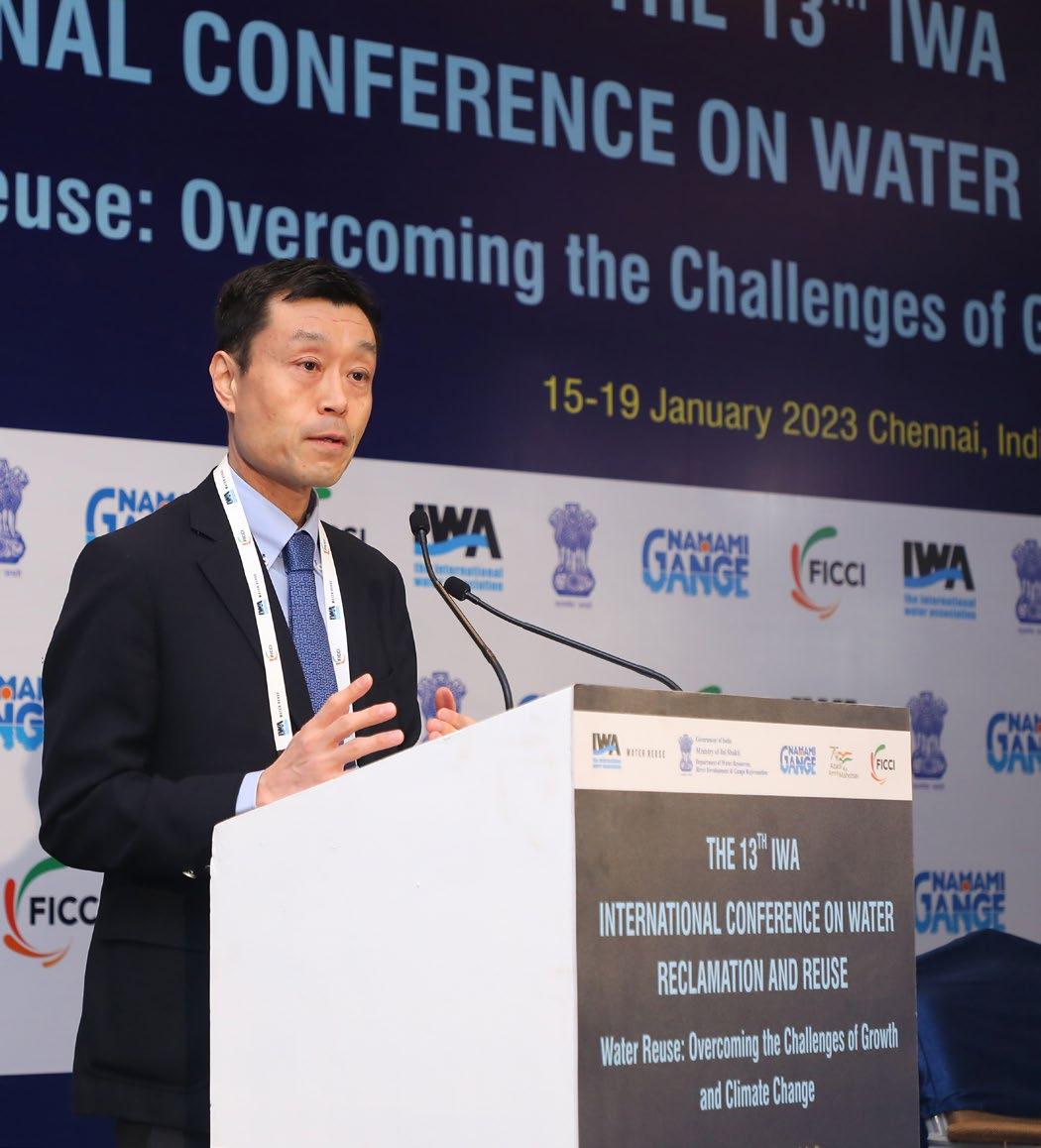
communities, and then through water scarcity that will impede food production and livelihoods. ADB’s initiative focuses on cutting-edge risk assessment and management tools, such as insurance and risk transfer, to guide investment decisions for large-scale infrastructure projects in the region so that services can withstand and survive this threat.
Looking ahead, what is your vision for the future of water and urban development in Asia, and what role do you see ADB playing in achieving this vision? We think access to safe drinking water supply and safely managed sanitation remains a main factor in building a prosperous, inclusive, resilient, and sustainable Asia and the Pacific.
Climate change is a major threat. Rapid urbanization in Asia and the Pacific continues to widen infrastructure and service deficits in our towns and cities, aggravate air and water quality, and challenge inclusivity. These are all being exacerbated by climate change, which affects the poor and the vulnerable the most. ADB has a tremendous role to play. Addressing climate change and supporting development are not one or the other, but we can design projects and programmes that contribute to both.
Another area we should and will do more is to strengthen sustainability, by building the technical and financial capacity of cities and utilities and strengthening their policy and regulatory environment. I am personally very excited and looking forward to working on these challenges to make our towns and cities more low-carbon, resilient, inclusive, and liveable.
"ADB will push for accelerated climate financing, publicprivate sector collaboration, and new financing modalities that derisk water investments"

The webinar was conducted in French and moderated by Olivia Tempest, Editor in Chief of Smart Water Magazine. It brought together leading experts to discuss the transformative potential of integrating advanced modelling software with optimization tools.
Last July, water management professionals joined a webinar titled “Optimiser la prise de décisions stratégiques par l’intégration des modèles InfoWorks ICM avec Optimizer™”, organized by Smart Water Magazine and Autodesk Water. This hour-long online event explored how integrating advanced modelling software with optimization tools can revolutionize decision-making in water and wastewater management.
InfoWorks ICM is a sophisticated software solution designed for modelling and managing complex hydraulic and hydrological systems, including stormwater, wastewater, and flood scenarios. This powerful tool supports detailed simulations and analyses, enabling users to visualize results in 3D and perform integrated calculations of both underground networks and surface flows. InfoWorks ICM enhances decision-making processes by offering advanced modelling capabilities, which are essential for effective water resource management, urban planning, and infrastructure development. However, the complexity of hydraulics and hydrology, along with time and budget constraints, often makes it challenging for engineers to manually find the best solutions.
Meanwhile, the versatile Optimizer platform supports various objectives, including CAPEX, OPEX, flooding, overflows, carbon emissions, risk, and social/ environmental benefits. Leveraging advanced artificial intelligence, automation, and high-performance computing, Optimizer evaluates thousands of strategies within hours, making it an invaluable asset for engineers and planners aiming to develop cost-effective and efficient water management strategies.
The session began with Olivia Tempest introducing the webinar and setting the stage for an exploration of how InfoWorks ICM and Optimizer by Op-
timatics can revolutionize the handling of complex hydraulic and hydrological challenges. She emphasized the importance of these tools in enhancing decision-making processes for water and wastewater network managers. The integration of hydraulic models with AI and cloud computing allows for the exploration of numerous scenarios, ultimately leading to more efficient and cost-effective strategies.
Dina Chebl, Autodesk Water Solutions Lead in France, kicked off the technical presentations by discussing the fundamentals of InfoWorks ICM. She described it as a powerful tool for modelling stormwater and wastewater systems, capable of integrating multiple data sources such as rainfall data, 1D models, 2D models, and GIS data into a single platform. Dina explained, "InfoWorks ICM is a unique solution that brings together all the models. The compiled information gives us a complete system where we can model in 1D only, 2D only, or in coupled 1D and 2D, which is one of the strengths of the software, as it allows integrated calculation of underground networks and surface plans." She also emphasized the software's ability to provide dynamic results, visualize in 3D, and facilitate collaborative work environments by allowing simultaneous access to the latest software versions and cloud simulations. This way, it fosters a more efficient and coordinated approach to addressing real-world water management challenges.
Next, Marwan Haddad, Senior Optimization Engineer at Optimatics, a Suez company, introduced the company’s product, Optimizer. He provided insights into the company’s transition from research on genetic algorithms in the 1990s to becoming a software service model in 2014, and its subsequent acquisition by Suez in 2018. Marwan stated, "Optimatics has a product called Optimizer, which is an overlay for hydraulic models, particularly ICM.
InfoWorks ICM is a powerful tool for modelling stormwater and wastewater systems, capable of integrating multiple data sources
What makes Optimizer unique is that it integrates AI models." He explained how the integration of AI with cloud computing enables Optimizer to swiftly evaluate numerous strategies, addressing various objectives such as cost management, flood prevention, and environmental benefits. This combination of AI and cloud computing facilitates the exploration of multiple scenarios and the identification of optimal strategies for managing water systems.
Guillaume Rondot, also Senior Optimization Engineer at Optimatics, delved into the technical capabilities of Optimizer. He detailed how the software automates the consideration of numerous system configurations. Guillaume explained that Optimizer uses genetic algorithms to simulate thousands of scenarios, showcasing the most efficient alternatives for different budget levels, and explained the process: "The challenge of this first optimization was to consider 75,000 different configurations of the system using the software. The software did it automatically, identifying the optimal configurations, represented by red points, for different investment levels". He presented a case study from Atlanta, demonstrating how the integration of InfoWorks ICM and Optimizer helped reduce the risks of flooding and overflows by implementing both traditional and alternative solutions. This case study underscored the practical benefits of these technologies in real-world urban planning, achieving significant cost savings and performance improvements.
The webinar concluded with an interactive Q&A session, where attendees engaged with the presenters to gain deeper insights into the technologies and their applications. Questions ranged from the compatibility of Optimizer with other models and software to the economic benefits observed in the Atlanta case study. Participants also inquired about the size of models used in InfoWorks ICM and Optimizer, the suitability of Optimizer for 2D models, the commercial model of these solutions, the computation time required, and data confidentiality concerns. The session enhanced the participants’ understanding of the practical applications and advantages of integrating advanced modelling and optimization tools.
The integration of InfoWorks ICM and Optimize empowers water network managers to make informed, transparent, and defensible decisions, minimizing total expenditures while optimizing hydraulic performance. The webinar highlighted the critical role of these tools in modern water management, equipping professionals with the knowledge and skills to tackle the increasingly complex challenges posed by urbanization and climate change.
The integration of AI with cloud computing enables Optimizer to swiftly evaluate numerous strategies, addressing various objectives
“The greatest innovation in the digital water management world will come in enhancing the learning of water operators”
SCOTTISH WATER
The Drinking Water Quality Regulator for Scotland revealed in late August that Scottish Water continues to achieve a high level of compliance with stringent drinking water standards, with 99.88% of tests meeting the required criteria in 2023.
Scottish Water provides essential services to over 5 million customers, delivering more than 1.5 billion litres of drinking water daily. However, the increasing age of infrastructure and the challenges posed by persistent heavy rainfall have put pressure on maintaining its high-water quality standards. As the utility faces these hurdles, the need for substantial investment is clear. Over the next 25 years, an estimated additional £2 billion to £5 billion will be required to maintain service levels and ensure the continued safety and reliability of Scotland’s water supply. In this interview, Paul Weir, Water Quality Excellence Manager at Scottish Water, provides insights into how Scottish Water is addressing these issues, emphasizing their ongoing commitment to climate resilience, water quality, and carbon reduction.
Can you tell me briefly about your career path and current role at Scottish Water?
I’ve been lucky enough to have worked in the field of applied sciences in the Water Industry in Scotland for over 38 years. I hold a Master's in Environmental Sciences and am a chemist at heart, recognized as a Chartered Scientist and a Member of the Royal Society of Chemistry. I love applied academia! In the early

days, working for the local council, I had the opportunity to spend some of my time conducting water quality analyses and some of my time discussing what it meant and how to make improvements. I enjoyed the “so what” factor of analysis!
This focus has stayed with me through all my working years as I progressed through Technician, Advisor, Scientist, and Team Leader roles and onto heading up the Water Quality Excellence function for Scottish Water for the last 15 years. I currently work with a team of approximately 40 Drinking Water Operational Scientists across the length and breadth of Scotland and proudly represent Scottish Water at many national and international steering groups, conferences and events sharing their great work. My greatest joy remains to chat with the team about the “why” or “so what” aspects of water quality.
How is Scottish Water’s record investment of around a billion pounds a year in repairing, renewing, and replacing vital assets contributing to its climate resilience and water quality plans?
Over the past decade, we have been responding to the climate challenge, assessing the risks, and building resilience to climate change into our business and investment plans for key priorities such as water quality, water resources and flood alleviation. The climate threat is accelerating in Scotland year after year as we feel the effects of more extreme events on an ageing asset base. What becomes essential is that we consider the impacts, both of the short-term seasonal effects (droughts, cloud bursts, snow events, storms, hard freezes) alongside the more gradual medium to longer-term temperature change effects (“plan for 2 °C increases, prepare for 4 °C increases this coming century”).
We are actively developing our asset base to create data intelligence and risk platforms that enable predictive insights, efficient and effective Operational Mitigation Plans that drive swift action, and
robust, equitable investment strategies that deliver long-term solutions — all while staying committed to our environmental goals, including achieving net zero by 2040. At the forefront of our efforts is the commitment to working in partnerships, ensuring that we operate at the cutting edge of current thinking, always taking cognisance of the great expertise out there in the form of our suppliers, consultants, other water utility experiences and, of course, academia.
How have the applications of ion exchange and ceramic membrane technologies, researched in collaboration with PWNT, helped Scottish Water address the impacts of climate change on upland drinking water sources?
"The climate threat is accelerating in Scotland year after year as we feel the effects of more extreme events on an ageing asset base"
Scotland’s catchment base is heavily surface water, upland, rich in organic peatland (around 85% of our upland catchments contain organic rich soils). This presents us with real challenges when we combine this with our climate pressures in terms of the variability, quantity and characteristics of our organic materials requiring treatment (inclusive
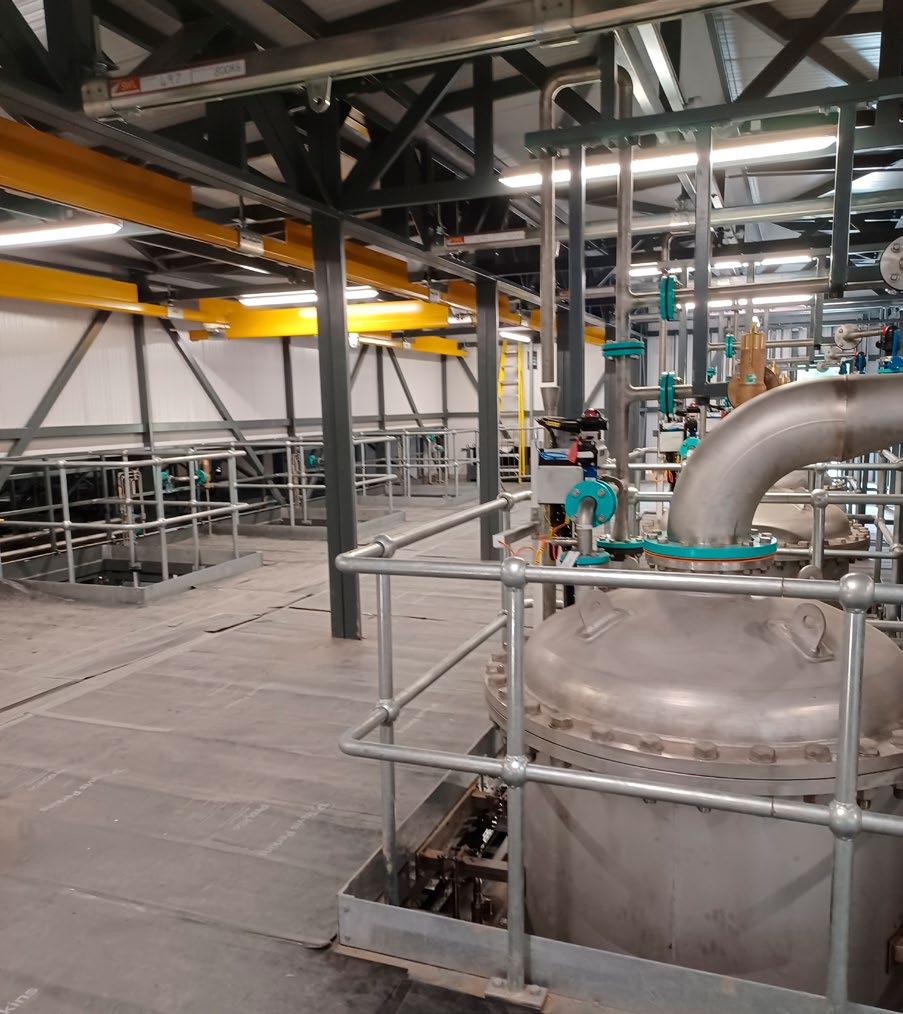
"Ion exchange and membrane technologies have become central to our asset adaptation planning, offering safe and highly effective treatment"
of Cryptosporidium). Ion exchange and membrane technologies have moved to the forefront of our asset adaptation planning as these technologies are fantastic at providing safe, highly effective treatment and can be designed and built off-site in a manner consistent with our great environmental and embodied carbon aspirations.
Our latest Ceramic Membrane Plant was fully constructed off-site and transported in individual modular treatment units – significantly reducing the environmental impact and local community disruption. The new works included renewable energy generation and the method of build and material choice resulted in significant reductions in steel, concrete and hence carbon - and amazing water quality! A great example of how working in collaboration with excellent partners can deliver for you, the environment and your customers.
What digital tools are currently in use by Scottish Water to detect and address pollutants in rivers and lakes?
Having robust, reliable, sensitive, low maintenance, ISO accredited on-line water quality monitoring instrumentation, not only within our catchments, but throughout our treatment processes is incredibly important. Both from a risk management perspective and an environmentally friendly one. It would be reasonable to highlight that we are working extremely hard in this space, but equally remain a bit in the explore space for now with particular regards to “nxt gen, on-line, real-time, analysis” – which
is probably everyone’s holy grail. Our Research & Innovation, Transformation, Environmental Planning & Assurance and Water Operational Teams are working hand in hand with external academic and research institutes to deliver something of real value here.
It would be fair to say that flow monitors, multi-sensor buoys, on-line bacterial cell counting, particle charge analysers, multi-spectral UV analysers, artificial intelligence machine learning, and digital twins (list not exhaustive…) are uppermost in our thoughts and we remain highly motivated to drive a step change in our enhanced, fast, digital wisdom that brings further depth and colour to our current Risk Management Platforms and Regulatory laboratory analysis programmes.
“Forever chemicals” were found in Scottish drinking water in 2023. How is Scottish Water working towards eliminating PFAS from drinking water?
As new technologies bring new windows of understanding to water quality and their health risks, it remains important that we always strive to continue to improve on the very high standards that we are already hitting. PFAS has quite rightly increased in focus in the last few years as methods for their detection and analysis have improved.
Thankfully in Scotland, although PFAS remains a key parameter for us and very much remains on our watch list, following several years of extensive risk assessment and analysis, due to the nature and location of the majority of our catchments, our risks are relatively low and limited to only a very small number of locations. Nevertheless, we’ve been actively engaging with academia to better understand the most effective removal technologies. Alongside looking at catchment elimination and wastewater treatment to limit inputs, technologies such as membrane treatment, ion exchange, and activated carbon (known
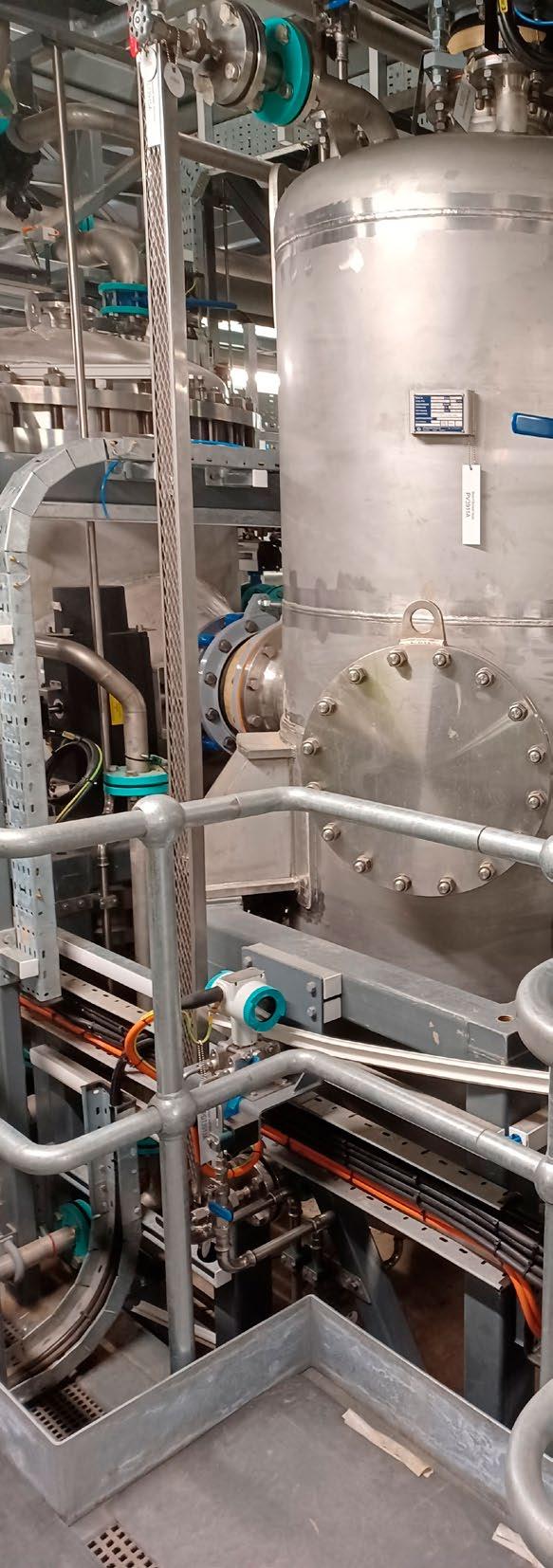
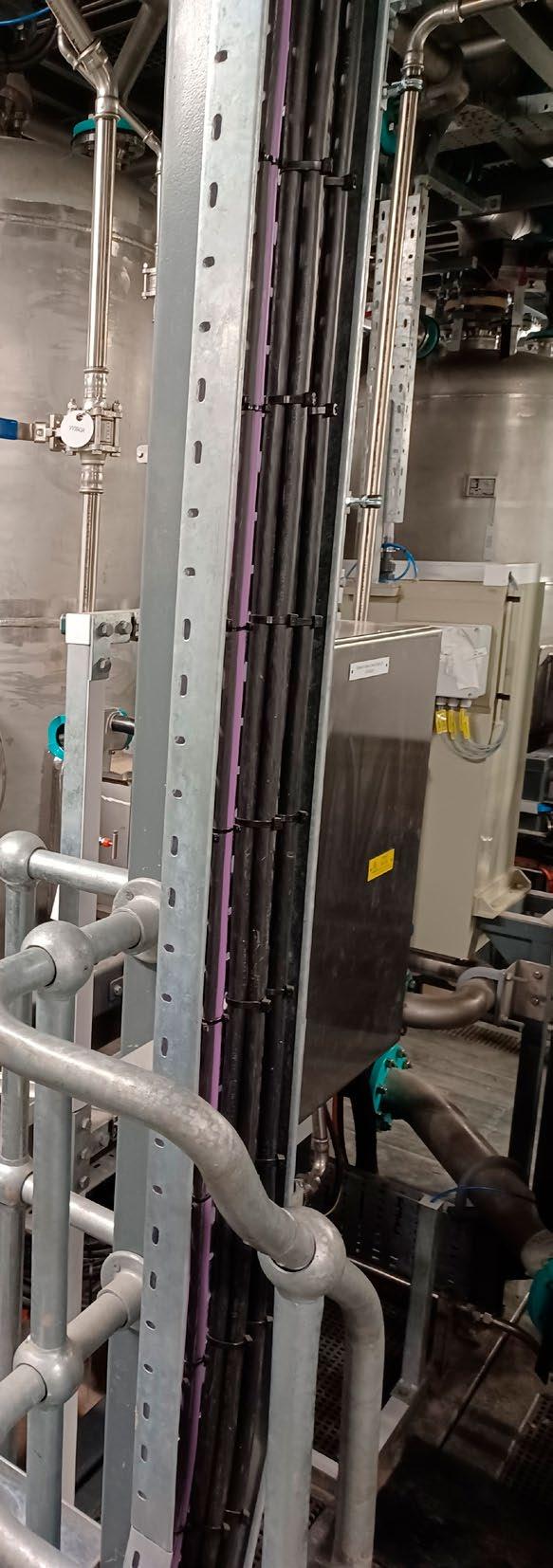
water treatment technologies already in use in Scotland) remain highly effective for PFAS removal and very much open to us to utilise as and when is required.
How is Scottish Water working with its delivery partners and wider supply chain to reduce carbon emissions in construction, and what role do these collaborations play in achieving your carbon reduction goals?
At Scottish Water we operate a “carbon reduction hierarchy” and a “20 Golden Rules” philosophy when working with our delivery partners and wider supply chains. Carbon is a key consideration for us on every project and we engage with our investment partners in these discussions right from the start of every undertaking. Build nothing, Build less, Build clever, Build efficiently is our hierarchical rule set and our Golden Rules include for a consideration of: the re-purposing of our old assets, using low carbon materials, end-of-life considerations and actively seeking to install renewables in all new assets. Our Ceramic Membrane Plant discussed above is a great example of how we always strive to put carbon reduction, environmental care and local community concerns at the heart of all our investment decisions and great partnerships are a brilliant way of achieving these goals.
What innovations in digital water management do you see having the
"Carbon is a key consideration for us on every project and we engage with our investment partners in these discussions right from the start"
most significant impact on future water quality improvements?
It's clear that there's significant potential in advancing basic water quality management. Utilizing AI to quickly identify key data sources via chatbots, developing chemical dosing control algorithms through machine learning on simulated data sets, and leveraging data lakes to highlight emerging risks are all promising avenues. Additionally, transitioning to Remote Operating Centres, where pump adjustments can be made from 100 miles away, will undoubtedly offer tremendous value. I would even include Digital Twins to model and predict the impacts of climate change.
"At Scottish Water we operate a 'carbon reduction hierarchy' and a '20 Golden Rules' philosophy when working with our delivery partners"
However, in my opinion, the greatest innovations of significance in the digital water management world will come in enhancing the learning of water operators. As new technologies advance exponentially, emerging parameters of importance appear yearly, climate risks rocket and mental health and well-being become the new pandemic. I would love to see an increasing investment in some of these new innovative water management digital tools to help support, educate and develop our friends and colleagues in front-line water operations. It is the water operators who must ultimately understand, operate, and maintain performance against all of these aforementioned challenges, 24/7/52. Innovating, building, and supporting their resilience through digital excellence - in combination with the “build something” fixes - is my pick in assuring our future water quality performance. Our people remain our most important asset.
SOMETHING TO READ...
How water makes you more connected
Blue Mind by marine biologist Wallace J. Nichols explores the profound effects of water on our well-being, why we are drawn to the ocean and how being near water calms our minds and bodies. By blending neuroscience with personal stories, Nichols demonstrates the power of the blue gold.




SOMETHING TO ENJOY...
Nominated for a Grammy award
A song by musician Billy Joel, this single was released in July 1993, and immediately became a huge hit, reaching number three on both the US and UK charts. "The River of Dreams" was nominated for the Grammy Award for Record of the Year in 1994 but lost to Whitney Houston’s single.
BY: SWM TEAM
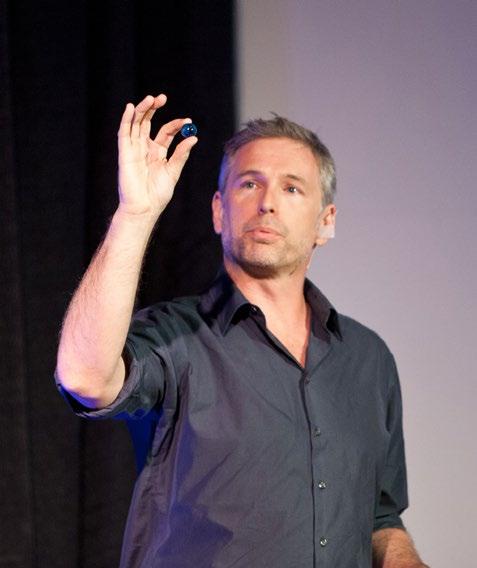
SOMETHING TO WATCH...
Directed by M. Night Shyamalan, this is a 2006 fantasy psychological thriller. The story follows an apartment superintendent who discovers a young woman in the complex's pool. He and his neighbors soon realize she is a water nymph, or Narf, whose life is threatened by a mystical, wolf-like creature called a Scrunt, preventing her return to her watery world.
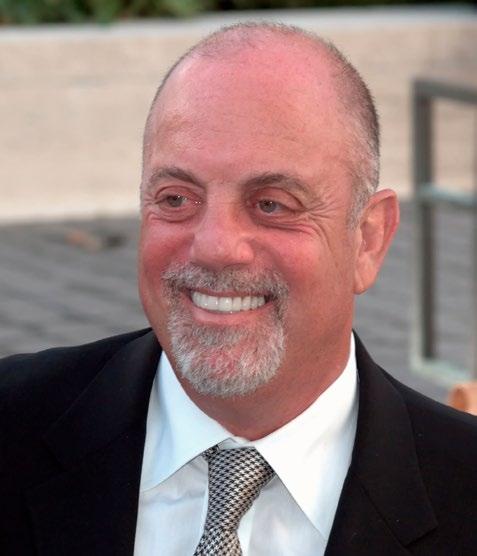
Unified, secure, highly scalable, and vendor-agnostic meter and sensor data collection system. Works across any meter manufacturer, protocol, or communication device, and easily integrates with any MDMS and third-party systems.

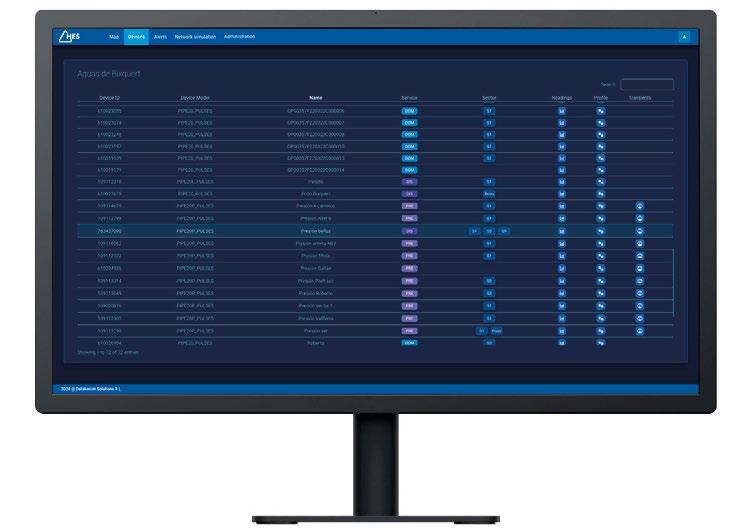
A proven solution in one of the most demanding scenarios on the planet, Abu Dhabi.
Their extensive infrastructure with 1,200,000 meters is already benefiting from our devices and intelligent solutions for the digitalization of water and energy, providing connectivity to more than 60 meter models from leading manufacturers and supporting up to 7 different protocols.
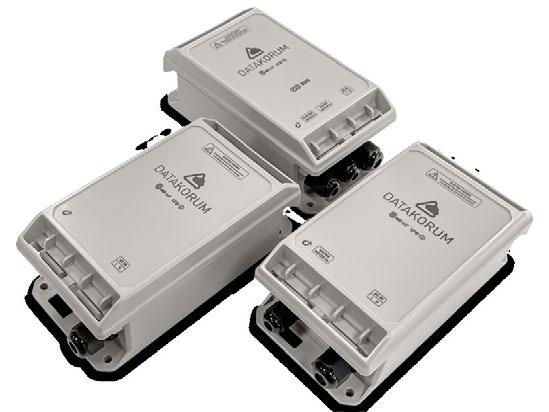


At ACCIONA we design innovative water treatment solutions to ensure universal water access and to guarantee that this resource is managed sustainably. We look after water as part of our commitment to the fight against the climate emergency.